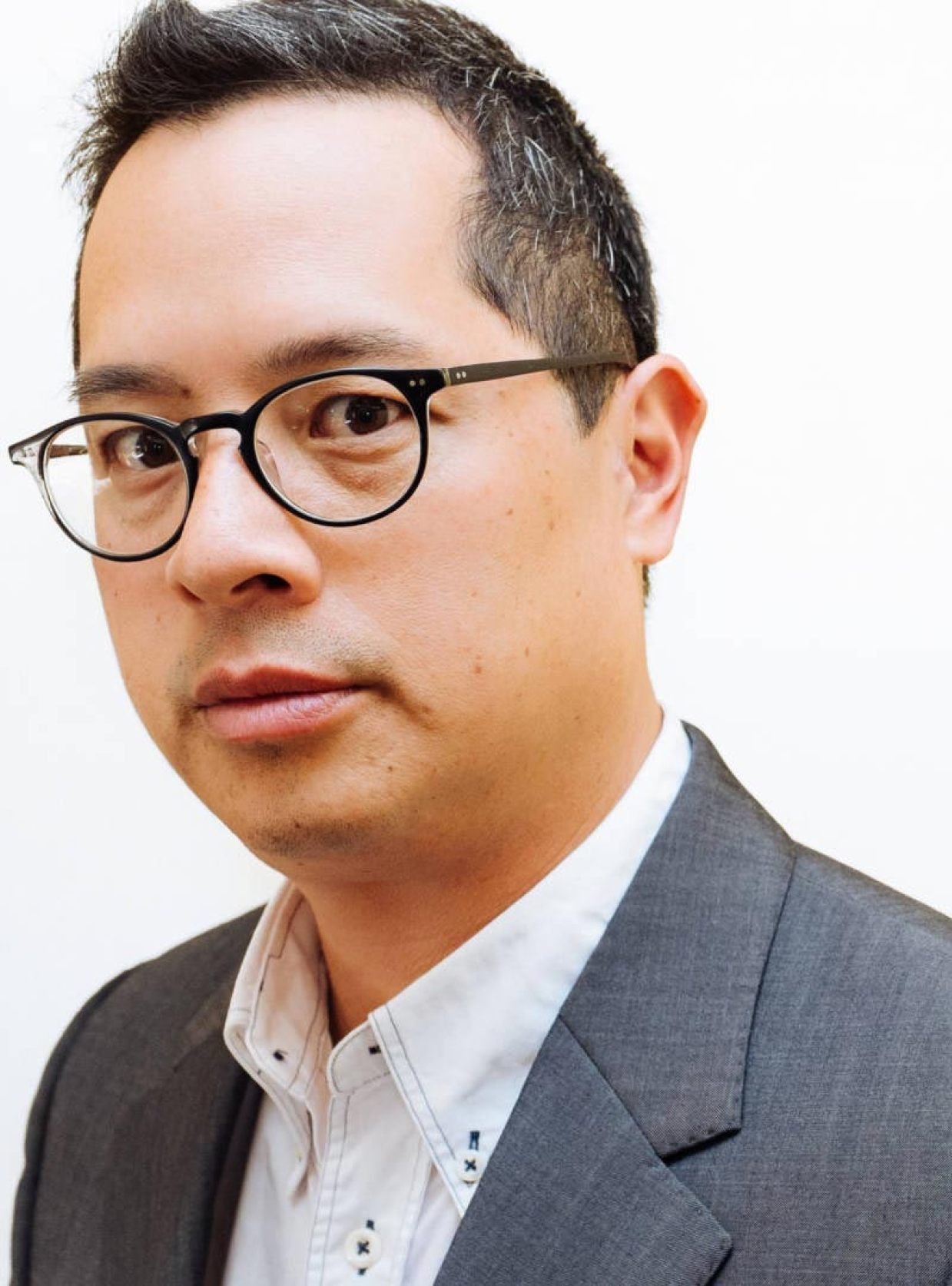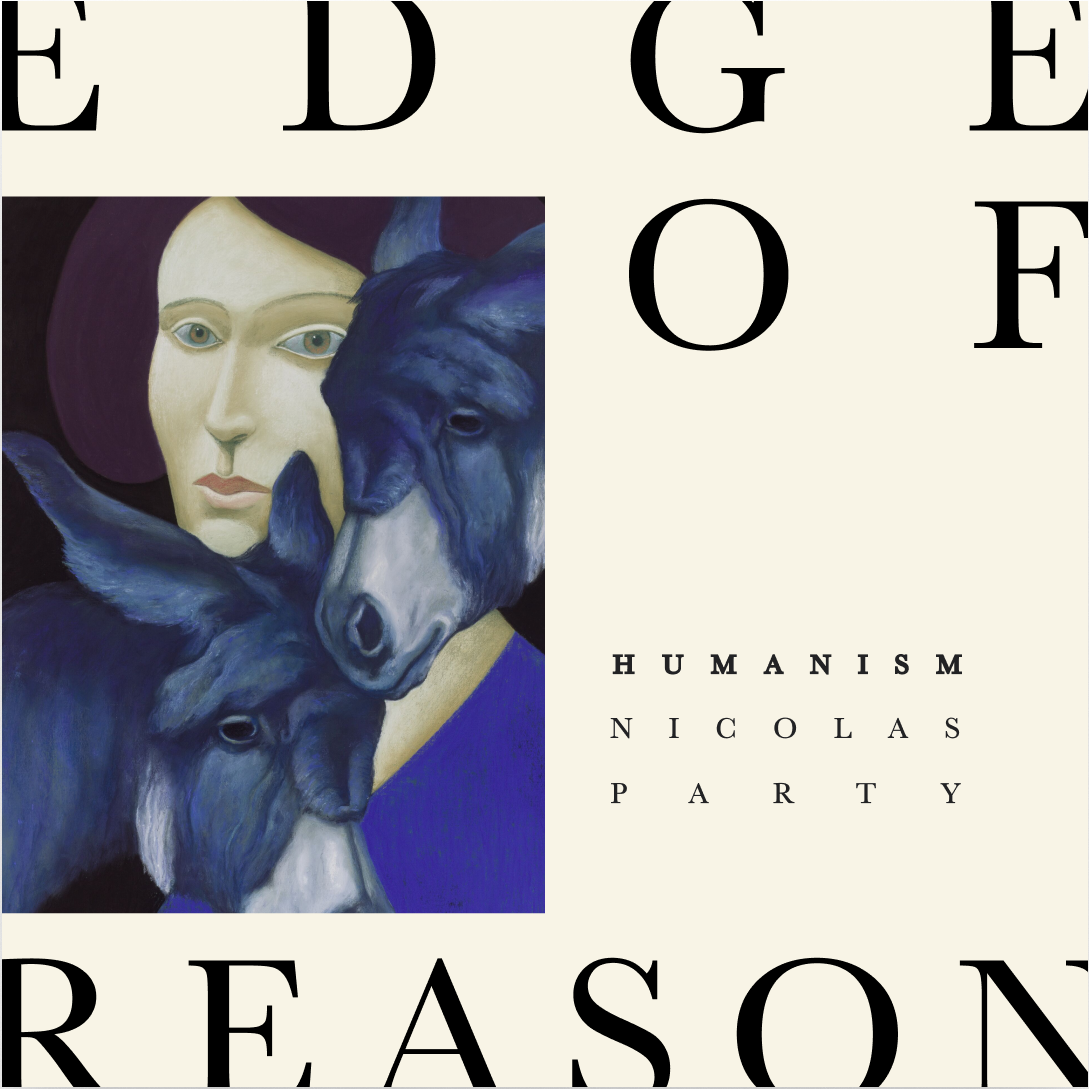In the second season of our podcast with Hauser & Wirth, we explore the line where left-brain meets right-brain; where logic ends and creativity begins—beyond the edge of reason.
Hosted by Jeff Chang
Episodes
⊖
LATEST EPISODE
Process
Annie Leibovitz
with
Amy Sherald
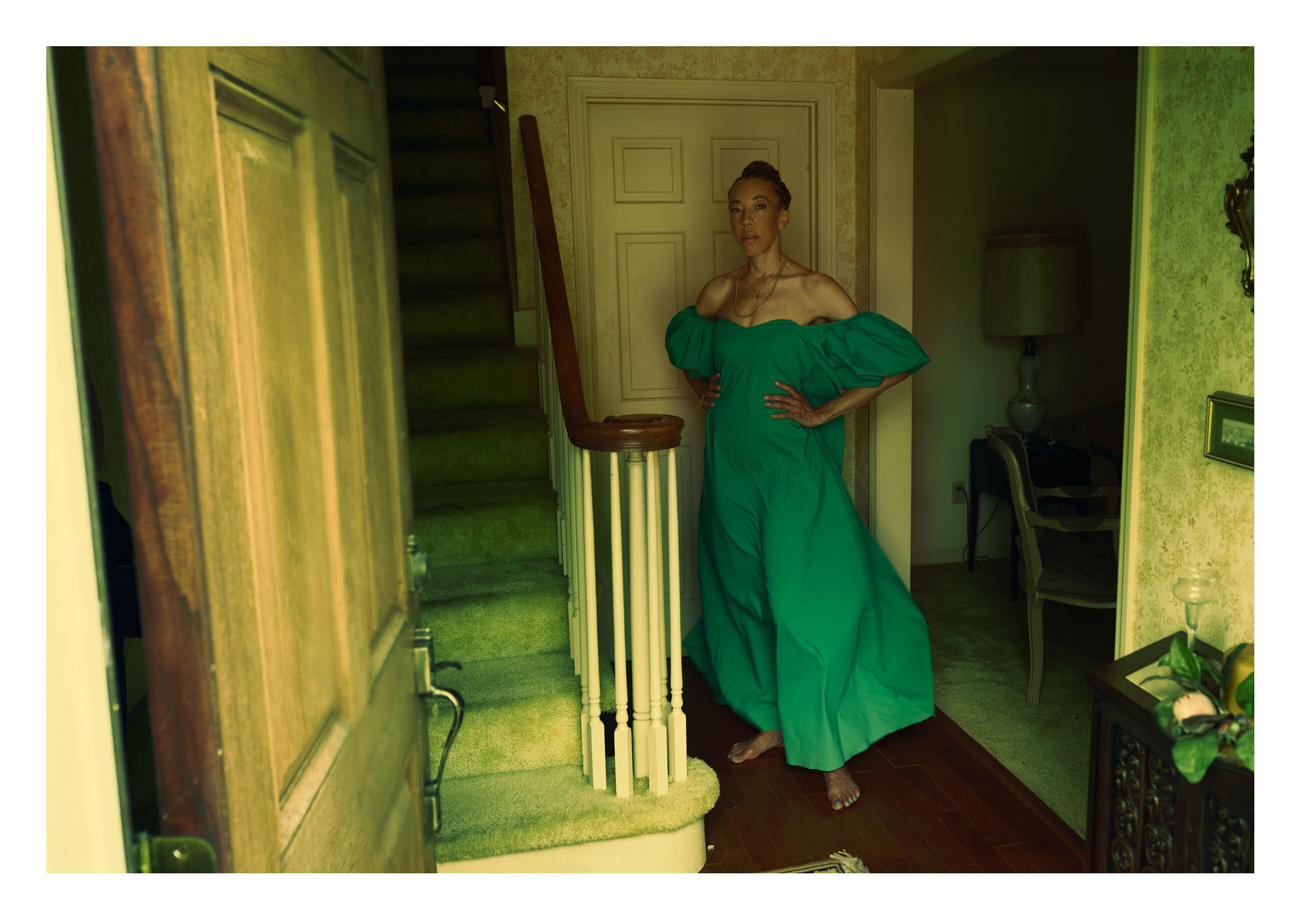
LISTEN NOW
Annie Leibovitz
with Amy Sherald
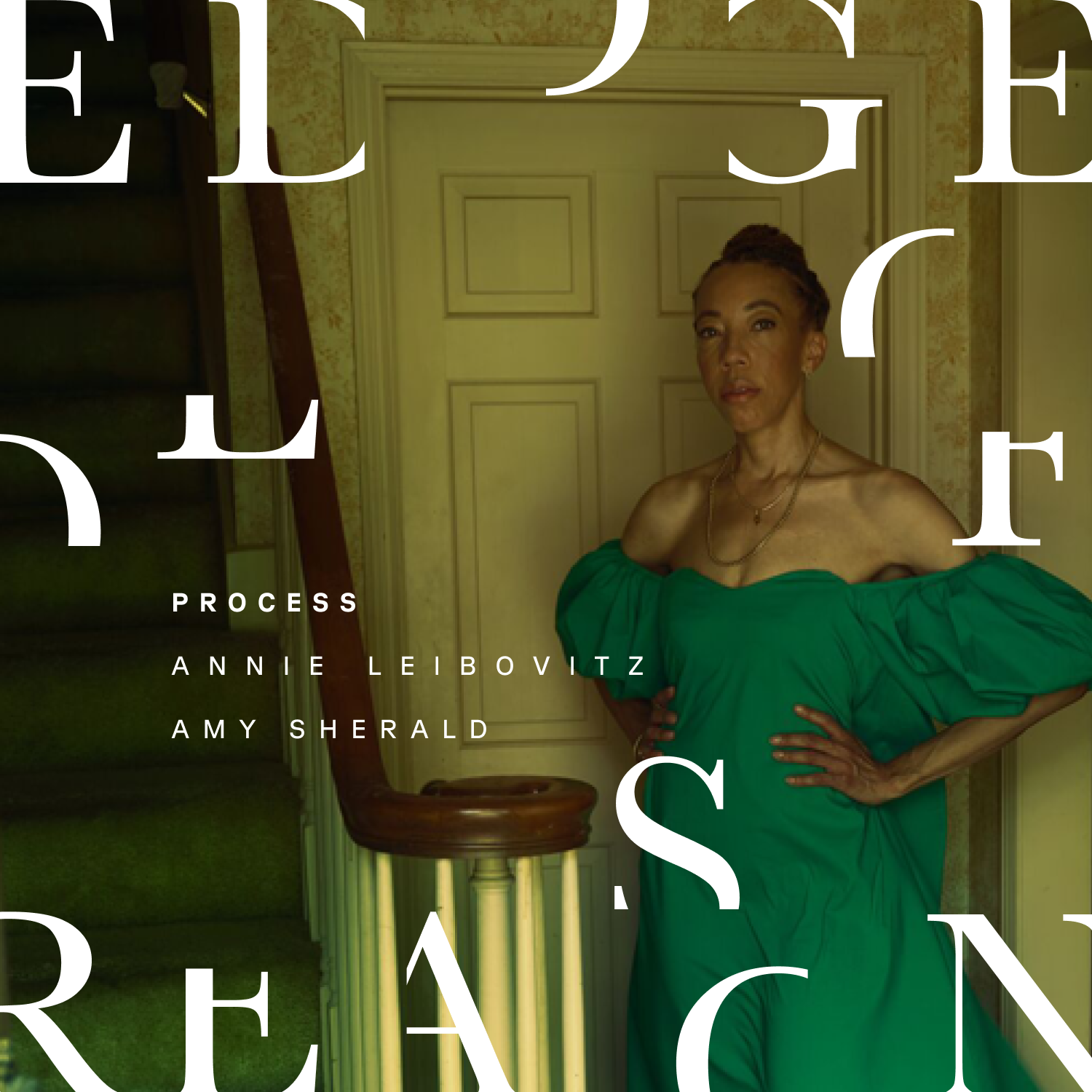
PROCESS uncovers how vulnerability and intuition come together in the creative journey, revealing the humanity behind the art.
In this special bonus episode, celebrated artists Annie Leibovitz and Amy Sherald join Ford Foundation President Darren Walker in a candid conversation about the complexities of process. Leibovitz reflects on her journey as one of the most iconic portrait photographers of our time, balancing intimacy and theatricality, while Sherald shares insights into her luminous reimaginings of identity and culture through painting. Together, they explore the intersections of their crafts, their shared reverence for intuition, and the beauty found in the messiness of creating. Moderated by Walker, their discussion offers an inspiring look at how art evolves from life and transforms our understanding of humanity.
Edge of Reason, Season 2 | Process
SECTION ONE | THE THEME
JEFF CHANG: The creative process: an unfolding journey where life becomes art. It’s about more than just the finished work—it’s about the moments of discovery, the unexpected detours, and the vulnerability of shaping raw experience into something that resonates and endures.
Process is where the magic happens: where intuition meets intention, and where the act of creating becomes an / exploration into what it means to be human.
What happens when two artists with unique approaches to their craft come together to reflect on their processes? How do their methods, experiences, and perspectives mirror and contradict and illuminate one another? What can we learn about the process of creation and the power of creativity from the intersections and juxtapositions of their work?
I’m Jeff Chang and this is Edge of Reason…
<< Theme Music >>
…a limited-series podcast produced by Atlantic Re:think—The Atlantic’s creative marketing studio—in partnership with Hauser & Wirth—a home to visionary modern and contemporary artists.
As a special episode this season, we’re excited to share a live conversation between two extraordinary artists whose work captures the essence of life itself.
Annie Leibovitz is one of the most iconic portrait photographers of our time, known for her ability to balance intimacy and theatricality.
Amy Sherald is one of the most iconic portrait painters of our time, celebrated for works that picture the breadth and luminosity of American culture.
Together, in conversation with Ford Foundation President Darren Walker, they unpack the beauty, challenges, and humanity embedded in the act of creation. They talk about painting and photography and how to capture energy. They talk about how they came to some of their most famous works, and also the work they did together. And they talk about the business of being an artist and the messiness and the delight of process.
Here is that discussion.
<< Applause >>
DARREN WALKER: Good afternoon everyone, and welcome. You are in for a treat.
AMY SHERALD: Annie and I are nervous.
DARREN WALKER: So we were just back in the green room.
AMY SHERALD: No, no, no, no- [inaudible].
DARREN WALKER: We were just back in the green room and they were saying, “Why are we here?”
ANNIE LEIBOVITZ: We’re wrecks.
DARREN WALKER: “Why are we here?”
ANNIE LEIBOVITZ: We’re wrecks.
AMY SHERALD: Artists that don’t know how to do or don’t like to do artist talks, raise your hand.
DARREN WALKER: But you are here, and you are here because we need to hear from Amy Sherald and Annie Leibovitz. We need your voice, we need your perspective, we need your art. Each of you-
ANNIE LEIBOVITZ: So you should go to Hauser & Wirth and you should go definitely to the Museum of Modern Art in San Francisco.
DARREN WALKER: Each of you-
ANNIE LEIBOVITZ: And it’s going to be the Whitney soon, which is great.
AMY SHERALD: Yes.
DARREN WALKER: We’re going to get to the promotions in a moment but-
ANNIE LEIBOVITZ: Oh no, no, so what I wanted to tell you is I was doing my research and you said you were doing your research, and you were looking at me and I was looking at you, and then my editor, Sharon Delano, sent me an article that David Hockney had written about is Painting Better Than Photography., And it sent me, and it’s tizzy because of course he ended up saying that painting was better than photography. And then I got-
DARREN WALKER: You didn’t like that, you didn’t like that answer.
ANNIE LEIBOVITZ: But then I kind of looked it up and I realized it was written in 2004. And I said, “This is coming from a painter.” And also in 2004, because so much has happened since then with photography and digital work, and he did mention towards the end of his piece that with the on put of new technical digital work, it was coming closer to painting, and I thought that was interesting. But you [inaudible] worked with photographs too, so I always found that very interesting.
AMY SHERALD: It depends on what kind of painting, right? Because I think photography and painting are similar when you’re using film because it captures the same thing. I was just recently watching One Hundred Years of Solitude and in the series, this guy brought the main character daguerreotype, camera obscura. Did I say that right?
ANNIE LEIBOVITZ: No, no, I think it’s a couple of things put together.
AMY SHERALD: So it was the beginnings of the camera.
ANNIE LEIBOVITZ: Back in.
AMY SHERALD: Yeah, and his intent, once he saw his first image, was to try to go around and take pictures to try to capture God, to see if we could take a picture of God. Like God is out there, let me see if I can take a picture and this energy will allow itself to be seen. But I think in painting, and when you work with film, let’s say, I don’t know what kind of film, because technically not a photographer guys, so 35 millimeter camera.
ANNIE LEIBOVITZ: Now, it almost anything. In fact, Hockney himself, sort of Hockney himself sort of introduced me to the idea of breaking the frame, because having done this a pretty long time, my original work was really based on Cartier-Bresson and Robert Frank, 35 millimeter in a frame. Basically Hockney did these photo montages of all these photographs kind of put together, and I said, “Oh my God, that is how the eye actually sees.” And I see what he means about how limiting photography is. But it is different for us in portraiture, I think-
AMY SHERALD: I think so.
ANNIE LEIBOVITZ: I think the way you use photography… Anyway…
AMY SHERALD: We’re going after the same thing, and I think it’s energy. I think in your work you capture the essence of what it is to be human. In my work, I capture the essence of what it is to be human, and it’s the energy. And I always bring up Alice Neal, because she wasn’t a realist painter, but she also captured the essence of what it was through paint.
ANNIE LEIBOVITZ: See, I was so jealous of you as a painter, and I would cite Alice Neal as well in portraiture, because you can look at Alice Neal as it’s definitely done in pieces. You feel like the portrait is done and she’s looking at different parts of the body, and she’s painting them, and it creates movement. So all I’m really trying to bring up now is the new digital work, I’m actually coming clean now and saying I’m starting to take pieces and work almost like a painter, but not… Anyway, Alice Neal.
AMY SHERALD: In your beginnings, you were a painting major, right?
ANNIE LEIBOVITZ: Not a very good painter.
AMY SHERALD: What was your work like?
ANNIE LEIBOVITZ: But I didn’t have the patience to, I was too young. I see what it takes for you to paint.
AMY SHERALD: And I desire the instant gratification of the camera.
ANNIE LEIBOVITZ: I’m sorry, what?
AMY SHERALD: I said I desire the instant gratification of the camera.
DARREN WALKER: Do you feel that the camera is a medium that gives you instant gratification? Do you feel that the camera, you get gratification?
ANNIE LEIBOVITZ: Nothing’s instant, it’s bullshit. Nothing is instant, it really is… Just look at-
AMY SHERALD: It’s the grass is greener kind of thing, I feel like the grass is greener, but it’s really not.
ANNIE LEIBOVITZ: Originally, originally it was, originally it was fast, originally it was as a young person, you’re out there just photographing everything and then you’re not really, but now it’s definitely more… Anyway, I do want to say that what I do is really working in popular culture, what’s going on right now, and you are doing something, Amy, you are a genius, you really…
AMY SHERALD: You’re a genius.
ANNIE LEIBOVITZ: You are a genius.
DARREN WALKER: We have two geniuses that are acknowledging that each is a genius.
ANNIE LEIBOVITZ: I just have to say kudos to this catalog because what happened was, these are my notes, my daughter said, “Mom, don’t take that up on stage, you’ll never find anything.” But to see this done in a way where you turned a page, and it’s so powerful to me to see your work like this, to see how you really are thinking in this catalog, and you’ve started, maybe all along you’ve been making it up. I’m not making it up, but you’re making up a world that is… I’m so, again, envious, I’m dealing with kind of a semi-reality, although there’s no such thing as reality, but-
AMY SHERALD: I see world-making, when I look at your catalogs though. When I went through Wonderland, that was world-making, and because I also went through a phase where I was really into Alice in Wonderland, and I just love to see the theatrics, and the tonality, and the narrative, and how you composed these images, it was beautiful, it was wonderful.
DARREN WALKER: But one of the things you do, Amy, I think, is you have a particular insight, and perspective, and representation of Blackness, and of a humanity, and of a dignity that you seem to be compelled to want to paint. One of your favorite paintings, there are so many beautiful, amazing AMY SHERALD paintings, is the painting, “Welfare Queen.” I love that painting. Talk about Welfare Queen.
AMY SHERALD: Well, speaking of film, it’s the only painting that I ever thought about making into a short film. When I say short, it could be like 30 seconds. But I had a studio in Baltimore, Maryland, and I would walk to my studio from where I lived, which was this neighborhood called Bolton Hill, and I would have to walk up a street called Utah Place. And on this street, it was like there was a market called Lexington Market, there was a methadone clinic, it was just complete and total chaos. And I came up with the idea because I was thinking about a painting, and there was this girl that was standing on the corner, and I was standing there, I used to listen to, on repeat, I would always listen to the March of the Penguins soundtrack for some reason.
So there’s all this chaos around me, there’s people yelling, there’s the guy that just got out of prison whose name was Swole, who’s selling water. There’s Fruit of Islam, there’s a woman who was miming to gospel music on the corner, and then there was just this one girl that was standing there. And in my mind, I imagine that all these people that were walking towards, her past her, that they were taking something off of her and putting something on her. And for some reason, Chicken Soup of the Soul is coming up, but maybe I was reading that book at the time, I’m not sure, but in the painting itself is a friend of mine named April, who was born in Baltimore, Maryland in a neighborhood called Cherry Hill. And she was the first in her family to go to college, went to Harvard, she went on to Columbia. And for me, she represented that kind of evolution, that transformation, and so she is Welfare Queen. And so after they transform her from this young girl to this princess, then she’s walking around on stilts, I guess, so she’s bigger than life and she’s handing out something, I’m not sure yet. But this is why I’ve never made this movie because when I talk about it, I’m like, “Yeah, no, it’s not going to be good.”
DARREN WALKER: I think there’s great potential. Annie, you have in some ways created the soundtrack of American Life through photography, and you have photographed just about every celebrity. And not only have you photographed them, you have done the iconic photograph. So I think about Demi Moore, a pregnant Demi Moore on the cover of Vanity Fair. Was that your idea or did Demi say, “Let me get naked and take this picture”?
ANNIE LEIBOVITZ: I had photographed Demi and Bruce Willis together on occasion, and Vanity Fair was doing a cover on Demi Moore. And they said, “The only problem is Demi’s pregnant, so you’re going to have to work around that.” Because no…
DARREN WALKER: You’re going to have to work around her pregnancy?
ANNIE LEIBOVITZ: In those days, you didn’t photograph someone looking pregnant. So I went out to LA armed to basically photograph Demi’s face, do a head portrait, which I’m not very good at by the way, and interestingly enough, I had done some work with Demi and Bruce when she was pregnant with her first child and I did some photographs of her nude with Bruce, pregnant, and on another occasion. And so I said, “Listen, since you’re here, let’s go ahead and do some pictures of you nude now, so you have the second child.” And photographed, so you can see the baby. And so we took these pictures, and as I was taking them, I said, “You know, I wonder if this could be a cover, if we could run this.” I brought the material back to New York, Tina Brown was the editor, and I was with Susan Sontag at the time, and Susan saw it and she said, “You have to do this. I’m calling Tina Brown right now, you have to run this. This is too important, you have to do this.”
And at the time, we actually reached out to Demi and said, “How do you feel? Are you comfortable?” We didn’t really know what its ramifications were and how important it would be in the scheme of things. And Demi and I talked about, well, what does it mean? We had to try to figure out how to talk about it. And of course, it turned out to be so important. Doctors put it in their offices.
DARREN WALKER: Well, it’s a cultural. You transformed what, for centuries, had been this difficult cultural reality of pregnancy and the inconvenience of the way a woman looks while she’s very pregnant especially, and you transformed something into a cultural asset. All sorts of women now get naked when they’re eight months pregnant, it’s transformed the way as a cultural phenomenon [inaudible].
ANNIE LEIBOVITZ: I think of how Rihanna brought it full on, and I admire Rihanna so much for she’s walking around, and it’s so beautiful, it is beautiful now. It’s very, very beautiful.
DARREN WALKER: That’s the power of art, right? It is the power of art. And Amy, when you think about the moment you learned that Michelle Obama had chosen you.
AMY SHERALD: Come on church.
DARREN WALKER: It’s not as if you were unknown, you had gallery shows, I’d seen your work at Monique.
AMY SHERALD: I was known in the art world.
DARREN WALKER: In the art world, you were absolutely known. And of course-
AMY SHERALD: But baby known.
ANNIE LEIBOVITZ: I just want to add one quick thing I have to say about Michelle Obama. Having worked with her the year she was in the White House, what you gave her in that was you gave her back herself because she had lost herself in the White House, and you gave her back her dignity and herself and who she was, and it’s such a powerful, powerful portrait.
AMY SHERALD: Thank you. That means a lot, oh my God.
ANNIE LEIBOVITZ: Oh my God. I felt so bad for Mrs. Obama, for Michelle, towards the end especially, she just hated it, just hated it.
AMY SHERALD: It was rough. It was rough-
DARREN WALKER: And so where were you? Were you driving on I-10? What were you doing when Thelma Golden called you and said, “Go to the White House”?
AMY SHERALD: I wish Thelma had called me. I met Thelma for the first time in the White House, and I’m sitting there like, “Should I be more excited to meet Thelma or Barack?” Because I’m kind of excited to meet Thelma. But Dorothy Moss called me, I was in my studio, I was in a residency, like a three-year kind of live/work space residency program in Baltimore. And yeah, I was working, I was painting, and she called and she’s like, “You should sit down.” And I’m like, “I don’t want sit down, just tell me what it is.” And she said, “She chose you to paint her portrait.” And I was like [inaudible], it was just like, ugh. And I sat down with my dog, August Wilson, who was also a Virgo like his mom, and I was like, “Your mom’s going to be famous. You’ll never have to eat cheap dog food again.”
But I also had a knowing, I had a knowing. I’ve been through a lot in my life, and I always say I didn’t survive everything I went through not to make it. I didn’t know whether I was going to be chosen or not, but I had a very strong feeling about painting her, and even in the interview process, I didn’t realize that I was there to talk to her and Barack, and Barack was there, because in my mind, the opportunity only came with me putting her image into the world and connecting with her. And I think I remember Barack had asked a question too and she was like, “No.” He was like, “How would you paint me?” And I was like, “I don’t know, I actually haven’t thought about it.” Because in my mind, I was thinking about Michelle because I felt-
DARREN WALKER: I’m not interested in painting you, I want to paint her.
AMY SHERALD: I would have, but Michelle is Michelle, and even Barack knows she’s more popular than he is.
DARREN WALKER: I told you guys you were in for a treat. Okay, Annie did you know that you were going to be Annie Leibovitz? Did you know that you were destined to be amazing and that you had this talent that you knew as a kid?
ANNIE LEIBOVITZ: We love our work, we work, we just love what we do, and that propelled me through all of these years. And even to this day, I love what I do. I am on a mission for the body of work. Having done this so many years and have such a big archive, to look at all these years, it even overwhelms me to understand. So I feel very responsible to the body of work, and sense of history, and culture and that I will continue to do that. But thank you, thank you.
DARREN WALKER: You’ve talked about history and your loving history, and you understand that photography has a particular role. When I think about Frederick Douglass and those, those photographs,
ANNIE LEIBOVITZ: That was a very important portrait of him.
DARREN WALKER: And he was the most photographed man.
ANNIE LEIBOVITZ: Yeah, he was for sure.
DARREN WALKER: In the 19th century, and it was really important that he was, but you see yourself as documenting history, not a photographer, but you truly see yourself having a responsibility to do that.
ANNIE LEIBOVITZ: And I like to try to stay current.
AMY SHERALD: I didn’t realize that you were a wartime photographer until I was going… I don’t know why, I’ve looked at so much over the past two weeks about you, but I was reading about Sarajevo, and I didn’t realize that you were there photographing in the midst of everything that was happening.
ANNIE LEIBOVITZ: Well, Susan Sontag went, and to her chagrin, I trailed along. Well, I think it’s important to be in places. It’s interesting because with everything that’s going on now, I do think some of the greatest photography that’s so intact right now is our photojournalism. I think it’s really very powerful. I think photography, in answer to Hockney, we’ve never had better photojournalism as right now, and every single day in the newspaper or online, we see things, it’s so powerful.
AMY SHERALD: The way the fires are being documented right now also, just shout out to the photographers in Los Angeles.
DARREN WALKER: The way the fire in LA is being documented, they’re great.
AMY SHERALD: Those images are so powerful.
DARREN WALKER: It’s amazing when you think about the photography right now, and you talk about instantaneous, but what is being transmitted, as you say, Amy, during the last week around the fires gave you a sense of urgency, and as only photography can do. You felt like some of the photographs, you literally could feel heat emanating from the pictures, the photography was that powerful, that profound.
ANNIE LEIBOVITZ: Definitely the still is alive and well, I have to reach out to David Hockney actually soon and have a talk with him.
AMY SHERALD: Let’s all have coffee because I would like to meet him.
DARREN WALKER: I have a feeling he would still believe that painting was indeed.
ANNIE LEIBOVITZ: But Amy actually, we have unfinished business because I was thinking about the session that we had, the first one we had, and I don’t even remember those pictures because I was so obsessed with what you told me, you told me about how your mother had kept your childhood home, your room exactly as it is.
AMY SHERALD: Exactly the way that it was when I left.
ANNIE LEIBOVITZ: Growing up, and you weren’t allowed to put any imagery on-
AMY SHERALD: No posters on my wall in my bedroom. The bedspread matched, the bed ruffles matched the floor, matched the paint on the walls, everything was pristine. And it’s funny. So what’s interesting, and this is how when I say you walk into a space and you don’t have a plan and let the plan evolve. When Annie came to Columbus, Georgia to photograph me in that house, which my parents built in 1973, we had not been in that house for three years. And so this was 2023, Covid had come upon us. My mom, my sister and I, we all hunkered down in Atlanta, Georgia. So we hadn’t been back there, so I unlocked the door and I looked back at you and I was like, “I don’t know what we’re walking into.” And what we walked into was a roof that had collapsed, there was black mold everywhere, you literally couldn’t breathe for more than two or three minutes without having to go outside. And I was like, “I don’t think she’s going to be able to do this.”
ANNIE LEIBOVITZ: I said, “I think I came too late for this house, for this moment.”
AMY SHERALD: And it’s incredible, you made it work.
ANNIE LEIBOVITZ: No, what I love about you is you brought this green dress, and I was like, “Okay.”
AMY SHERALD: What do you wear when Annie Leibovitz photographs you?
ANNIE LEIBOVITZ: You’re very much in control, whatever the situation is, and I have to go with it, it’s all right with me. It’s just like I was trying to figure out how to have a full length green dress in the bedroom. And so we went up the stairs and I couldn’t even get far enough back to photograph the whole length of the dress. I actually did not know what I was doing, and then we ended up going back downstairs, and it really was like the front door opened and the natural light came in, and you saw the darkness of the house behind you, and in the stairwell there, that’s where we ended up taking the photograph. And it’s not attractive of you, and you are a very attractive person, obviously.
AMY SHERALD: Thank you.
ANNIE LEIBOVITZ: But I let it go, and I’m at the point where everyone should look as good as they want to look. And I let it go, and for that reason, you had your hair pulled back very tight.
AMY SHERALD: I had a lot going on, and I was like, “I’m a black woman, it takes time to do my hair. And if I take these braids out.” It was just a whole thing, so I was like, “What am I going to wear for Annie to photograph me?” This is a big deal, I don’t have a stylist, I was like, I didn’t know what to do, so I was almost panicked and trying to figure out what to wear.
ANNIE LEIBOVITZ: I would say that picture is very accurate for the moment. It’s definitely a helter-skelter picture, and there’s something-
DARREN WALKER: Its a beautiful picture I found, it’s a gorgeous picture. [inaudible]. First of all, I think it’s a powerful picture. It’s not just in any green dress, it’s like a Balenciaga gown. You look fabulous, as a gay man, I love that dress, I love that coat.
ANNIE LEIBOVITZ: Daren, you are absolutely right.
DARREN WALKER: She looked fabulous.
ANNIE LEIBOVITZ: Listen, I printed it. No, what I’m trying to say is there’s another step to do with Amy. It is my job to figure out which story we’re going to tell. That is what I do like about portraiture, is that it’s not journalism, and I have the opportunity in portraiture as well to have that point of view, and that is why I can be conceptual and that interests me a great deal. So that’s why I’m not finished, and that is actually, if there’s a secret to my work, I am not afraid to go back.
DARREN WALKER: So you’re going to go back and have another round with Amy Sherald?
ANNIE LEIBOVITZ: Yeah, and we’re going to have a collaboration next time.
DARREN WALKER: And where will you go this time?
ANNIE LEIBOVITZ: We haven’t talked about it.
AMY SHERALD: Annie will know. I don’t know, I’m just going to do whatever she wants me to do.
DARREN WALKER: Can we be witness to this or is it just between the two of you?
ANNIE LEIBOVITZ: Hey, we’re very introverted people.
DARREN WALKER: I love that were saying backstage, “We’re so introverted, we won’t talk. It’ll be really hard for us to talk, you’ll see.” Been really hard to get you two going.
AMY SHERALD: It’s like a cold plunge. You just got to jump right in and you’re like, “Oh my God… “ And then you’re like, do you know what you just said? No, but we started talking.
ANNIE LEIBOVITZ: It’s a miracle.
DARREN WALKER: It is not a miracle. So let’s talk about though, how the body of work you’re pursuing now, is it evolving, is it changing? You, Amy, and I know many of us would love to hear about the upcoming show at the Whitney and all the amazing things that we saw out in San Francisco and hoping that it’s all coming to New York.
AMY SHERALD: Most of it is coming, and then there’ll be some add-ons as well. It’s honestly so hard to talk about that show because my brain is already in the next dimension, and I’m just trying to figure out how to evolve. And I think I’m living this big question now and trying to match my practice with the pace of the art world and what my needs are as a creative person.
ANNIE LEIBOVITZ: This is the last time she’s doing this is what I’m saying.
AMY SHERALD: And I had a conversation with myself a couple of weeks ago and I was like, I haven’t had a lot of time to play in my studio, I just don’t have time. Somebody asked me today, we were having luncheon, and Chanel asked me if I draw, and I’m like, “I kind of don’t have time to draw.” I have ideas and I have to make them. And there’s the art market, but then there’s the artist, and I’m thinking maybe I should just make some stuff and have a show just about stuff that I made, because it’s part of the process. Everything doesn’t have to be this perfect presentation, it can be like, these are some different thoughts and different ideas that I was working on. And maybe you won’t see this stuff again, this is a one-off because it’s stuff that I wanted to paint but couldn’t quite articulate how it fits into this bigger picture. And then through that process, I’ll go back and find myself again and move on, but I’m really considering that, just having a show where it’s just like, these are some things that I’m thinking about. I said I was going to name and a few of my favorite things, but-
DARREN WALKER: I think we all would love that, Amy, and one of the reasons, many reasons, you’re so admired is because it takes a long time to produce an Amy Sherald painting. You don’t have a lot of people in the studio helping and it takes a long time, and therefore, the commercial demands, because everyone wants an Amy Sherald painting, as you know.
AMY SHERALD: Thank goodness.
DARREN WALKER: And my wonderful Kaywin Feldman is out in the audience, the Director of the National Gallery of Art, where I am president, and we have waited to get in line to get an Amy Sherald, and I think we may finally have one.
AMY SHERALD: Yes.
DARREN WALKER: It has been an ordeal, and we’re the National Gallery of Art okay, to get an Amy Sherald painting because everyone… But I can imagine the demands on you when you know the National Gallery of Art is waiting for a painting of mine.
AMY SHERALD: Yeah, I know, I can’t sleep at night. It’s like…
DARREN WALKER: And so I think one of the things that is wonderful to hear, you just sort of freestyling. “I may just do something different. That’s just some stuff I want to do.”
AMY SHERALD: Just want to get it out, and I should be able to get it out without being, I don’t know, I don’t know whether it be criticism or whatever, but I think the art market expects something. Once Coke made Coke, they couldn’t change the formula, it’s like it has to be Coke. And so there is a level of branding I think that happens with art making, and that’s fine, but how do you explore within that realm? How do you evolve and make the next album, essentially?
DARREN WALKER: Right. Well, and you are articulating what every great artist in our capitalist system is confronted with. People want that, they want that Michelle Obama-like portrait. And you may say at some point, “I’m tired of doing that and I think I want to do something else.” And I love that you’re willing to assert your agency over your own creativity.
AMY SHERALD: Yeah. I’m only a slave to myself.
DARREN WALKER: And for you, Annie, as an artist who, so many people over the years have said, wanted to commission an Annie Leibovitz photograph of themselves, because we know that with portraiture, having the most important documenter of whatever, whether it’s portrait or photography, painting or photography, they want to have, well get Annie Leibovitz. Are there people you say, “I just don’t want to take your picture.”
ANNIE LEIBOVITZ: It’s actually very hard to do something for someone because there’s an expectation of what they imagine themselves to be, and sometimes you’re not in the same place. It was very hard for me to do portraitures of friends and people that I knew because I knew how they imagine they looked, and it wasn’t necessarily how I saw them.
DARREN WALKER: So with photography, with doing the kinds of portraits you do, it really is about how you see them less than you projecting?
ANNIE LEIBOVITZ: No, it’s more like how they don’t see themselves.
DARREN WALKER: Because people, particularly the kinds of people who could afford an Annie Leibovitz photograph, think pretty highly of themselves.
ANNIE LEIBOVITZ: No, no, I don’t think it’s like that. I was just saying it’s just more complicated.
AMY SHERALD: You oftentimes just want to be like, “No, you learn how to be a painter and you paint your own portrait.” So they need to learn how to be a photographer, and then they can take their own, because it’s like, I’m not here to create your vision, you’re here to let me create a vision of you.
ANNIE LEIBOVITZ: You brought up at the luncheon, the picture of Ella Fitzgerald and-
DARREN WALKER: The iconic Ella Fitzgerald.
ANNIE LEIBOVITZ: No, no, but it is not. When I drove up to her house, she was later in age, she didn’t live that much longer, and she was in her window on the second story looking out, and she was very closed off from people. And the picture of her should have been in that window looking out. Instead, I did this thing where we did go through her closet, so it was a lot of fun, there were some great clothes in there. And she did have that car in her garage in the back, but we kind of fabricated that, and it wasn’t what I really saw.
DARREN WALKER: But isn’t-
ANNIE LEIBOVITZ: So now.I know. And I think back in that, when you’re talking about that picture, I’m thinking, there’s another picture of her.
DARREN WALKER: But isn’t portraiture also about fantasy?
ANNIE LEIBOVITZ: Well, of course. Well, who are you talking to? No, of course. No, it can be a lot of things. Yeah, it’s big, which makes it not real.
DARREN WALKER: No, we started by saying it is real.
AMY SHERALD: Is portraiture?
DARREN WALKER: Are pictures real?
AMY SHERALD: No.
ANNIE LEIBOVITZ: Okay. Thank you.
DARREN WALKER: Then, but they-
AMY SHERALD: Because everybody turns something on unless it’s like [inaudible].
DARREN WALKER: They may not be real, but they tell us something, they serve a profound purpose, do they not?
AMY SHERALD: They are and can be instructive, yes.
ANNIE LEIBOVITZ: I have to think about that a little bit. I think when you see, because there something very interesting about the collective grouping of photographs from a period of time, they start to reveal something more than just individual pictures actually. I don’t know, there’s something.
AMY SHERALD: Yeah, I feel that way when I walked through my show at SF MoMA, just to see all of my little warriors, I call them, all standing together.
ANNIE LEIBOVITZ: Oh, that’s beautiful.
AMY SHERALD: I always say this, work can be employed in many different ways. On one hand we can say portraits aren’t real, on the other hand, they’re very real and representation matters. So I think it’s expansive, like you said. Because for me, I oftentimes feel like as quickly or slowly, because I’m a painter, as I create an image, I’m battling a visual zeitgeist of the opposite of what I’m doing, and it’s like then I become a machine putting out these images to fight the machine that’s trying to tear them down. So there’s a part of me that wants to… I get out of breath even talking about it, because what it feels like making the work, it feels like there’s so much art history to make up, especially when I think about art history, and I think about, I say this in talks all the time, but I’m like, art history is very long. We’re talking about cavemen, and Black artists who weren’t given a show, a real, real show until the 1940s. And so it’s just like this idea of playing catch-up to art history when it’s so long, so I carry that weight with me, but then I also just want to be free.
I was raised in a church, and so this is the language that I’m going to use, I’m not religious now, but that keeps me in the flesh and I’m trying to live in the spirit, and so where do I find that balance where I can continue to evolve as a person, as a woman, as a Black person, as an American? How can I keep that balance of not getting sucked into the flesh of life and letting my spirit roam and be free, and be creative, and make beautiful things that matter?
ANNIE LEIBOVITZ: I really feel like whatever you’re going to do, you could go either way and it’s going to be okay either way. I am just looking at this line, that through imagination, we can invent ourselves and generate the world we want to live in. That’s you.
AMY SHERALD: That’s me.
DARREN WALKER: And both of you using your craft, have really also been at the forefront of social commentary. I mean, Amy, your portrait of Breonna Taylor, I mean that portrait was a transformational painting in a moment of racial history in this country. Why did you feel compelled to stop everything and paint Breonna Taylor?
AMY SHERALD: I’m still amazed that our lives even intersected. It’s just incredible that I found myself in that moment. It felt like the right thing to do. Again, there’s that responsibility to use this talent that I have, this craft that I have, to assist in creating visual culture around a moment like that, what was happening. And I was scared to do it. When Ta-Nehisi first asked me, I was like, “Oh, no.” But I felt called to do it at the same time. It just felt like the right thing to do, and I felt like the right person to do it.
DARREN WALKER: And for you, Annie, as you think about the moment that we’re living through and the role that you can play as a photographer, an artist, what do you want your contribution to be?
ANNIE LEIBOVITZ: I’ve just looked back to a lot of what I’ve been doing lately, I’ve been photographing a lot of women artists, and I didn’t know I had as many as I had. But it’s kind of powerful to look at at us working in the art world, so it’s kind of amazing, yeah.
DARREN WALKER: I’m eager to hear from each of you what gives you delight, joy, wonder, awe?
ANNIE LEIBOVITZ: Process.
AMY SHERALD: Yeah. I think it’s process too, I think it’s not-
DARREN WALKER: Explain that for those of us who are not art people?
AMY SHERALD: It’s not the painting, so process is everything, process is-
ANNIE LEIBOVITZ: Were you walking down the street when you saw your friend? That story was so beautiful, that was as beautiful as the painting.
AMY SHERALD: That’s process, process was going to the studio every day and being aware of my surroundings and things find you and you realize that this is supposed to make it into a painting. I think that’s the most pleasurable part of my process, it’s like being able to sit down and watch movies, looking at all of your catalogs, and preparation for this conversation became part of my process. I found so much inspiration in seeing image after image after image of what you have been able to capture. Reading is a process, looking at poetry is a process, talking to friends, just having conversations, everything. Life, it’s just life, because life makes art. You can’t make art without living a life.
ANNIE LEIBOVITZ: I just want to say am inspired by your work and your simplicity is so powerful to me, and it reminds me that, I know it’s not as simple as it looks, but you make it feel like that and it doesn’t have to… Anyway, I’m inspired by your work, thank you.
AMY SHERALD: Thank you, Annie.
DARREN WALKER: Final question as we wrap. As we wrap, I want, I’d like to be hopeful right now. Amy, Annie.
DARREN WALKER: Can you help me be hopeful in this moment? Because one of the reasons I will tell you I am hopeful is because of artists. Because in moments when I am bereft, or depressed, or dejected, particularly about any social issue, I think about artists and I think about artists whose shoulders we stand on who did not have the privilege that we have, did not have the abundance that we have, did not complain when they couldn’t get a table at the right time at the hottest restaurant in town, the things that matter to us. They never had that and yet they persisted to create beautiful work, demanding, remarkable, courageous poetry and literature. Are you hopeful? Can you find reasons for hope now?
AMY SHERALD: Yeah, to be honest, and I guess I’m cheating a little bit because my natural affect or default is hope, it just is. So, I have friends who I haven’t spoken to since Trump was elected because they just couldn’t handle life after that, and I was like, “This man about to ruin my life.” You know what I’m saying?
I’m about to paint my off, I’m going to paint my off and get myself ready to fight the fight for whoever. There’s a lot of vulnerable communities out there that are going to be affected, and we need to figure out how to help them.
<< Light Scoring >>
ANNIE LEIBOVITZ: She said it all. That’s great.
AMY SHERALD: Life is short.
DARREN WALKER: Join me in thanking Annie Leibovitz and Amy Sherald.
<< Applause fades >>
JEFF CHANG: You’ve been listening to a special episode of Edge of Reason.
We’d like to offer a special thanks to the teams at Hauser & Wirth, Cooper Union, and The Ford Foundation for their involvement in the live event, and for making this episode possible.
If you enjoyed what you’ve just heard, Like and Review on Apple Podcast, and help spread the word about our series to other listeners like you.
And stay tuned for our third season of Edge of Reason coming later this year!
GALLERY
to see more
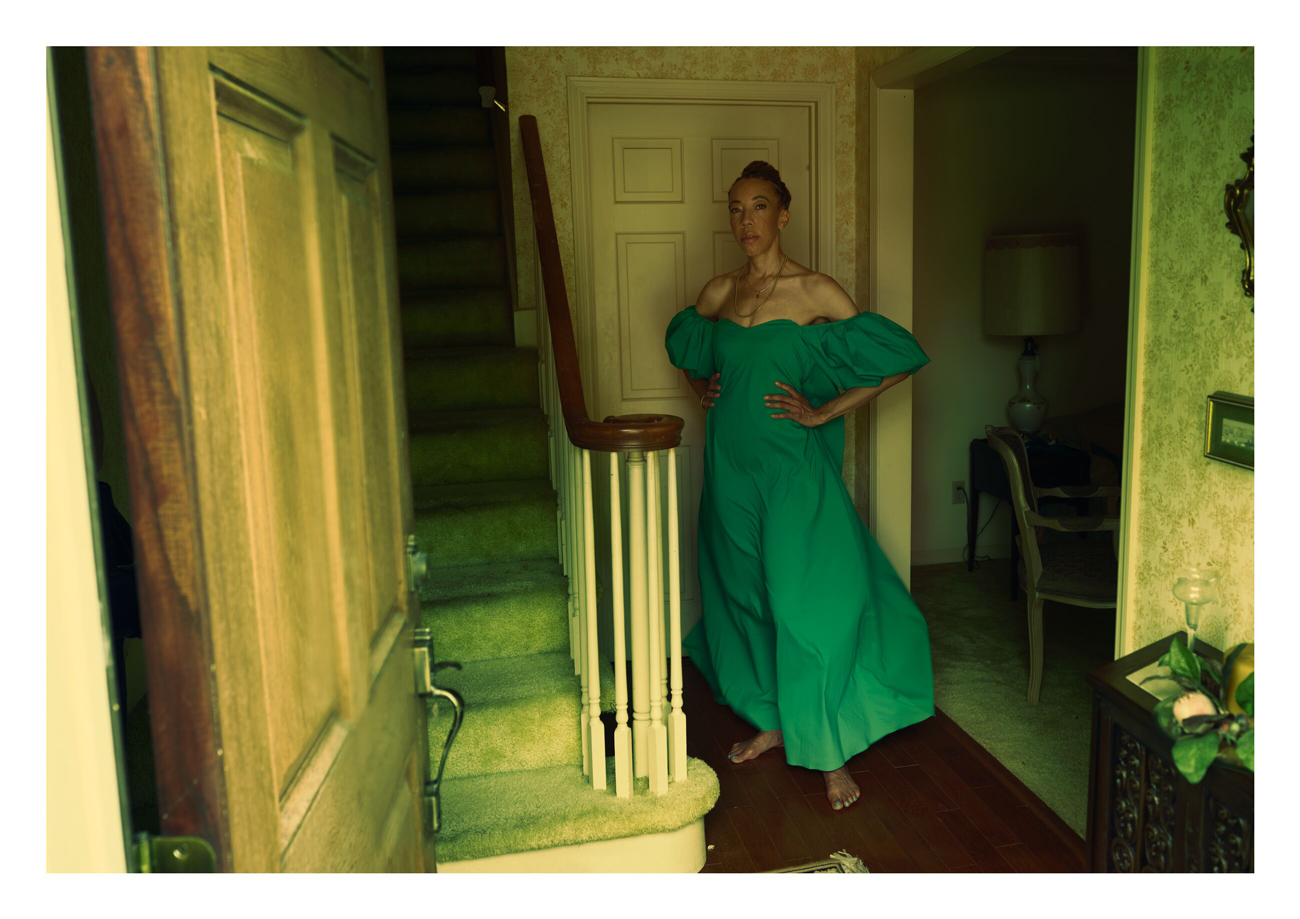
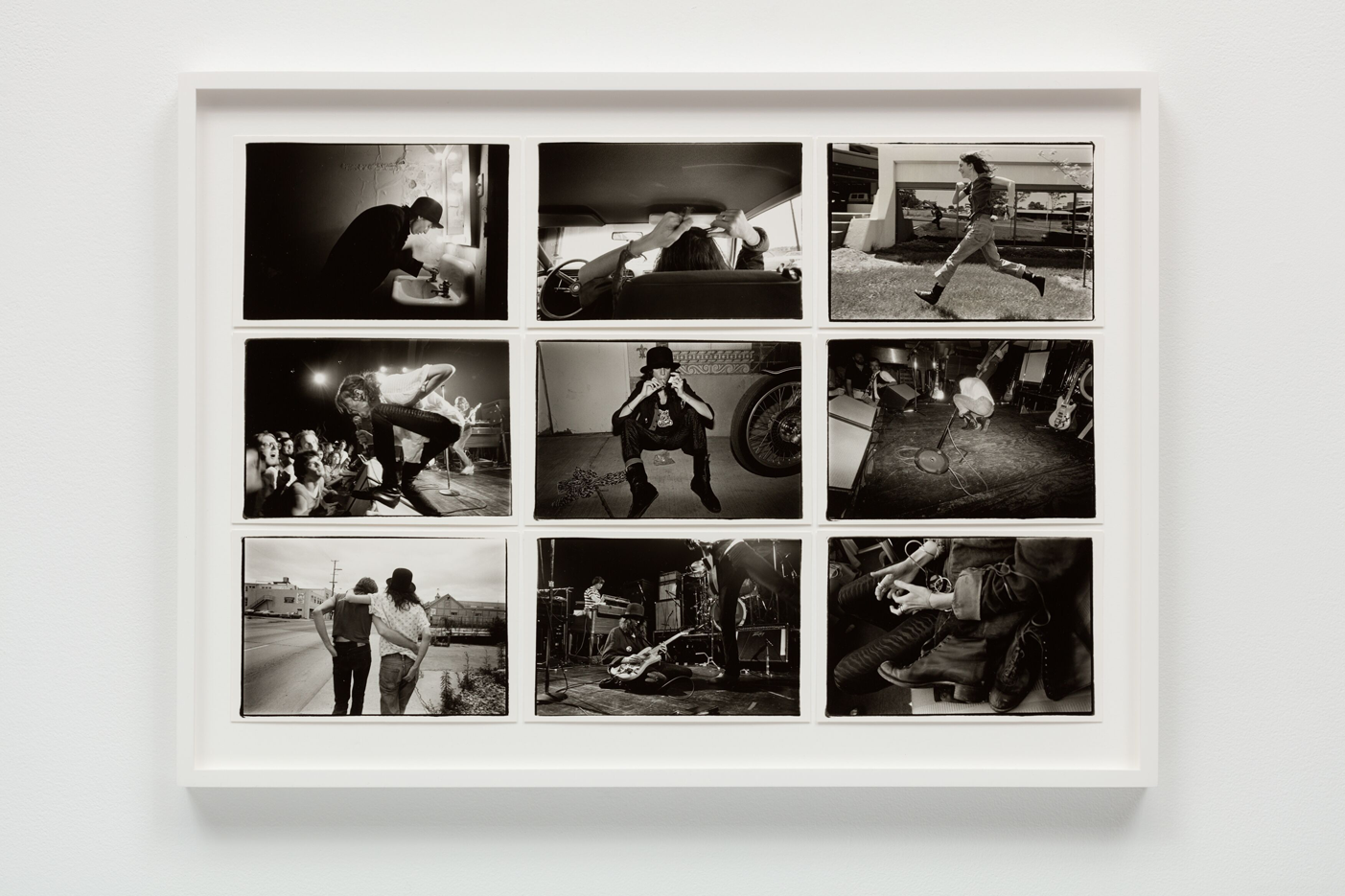
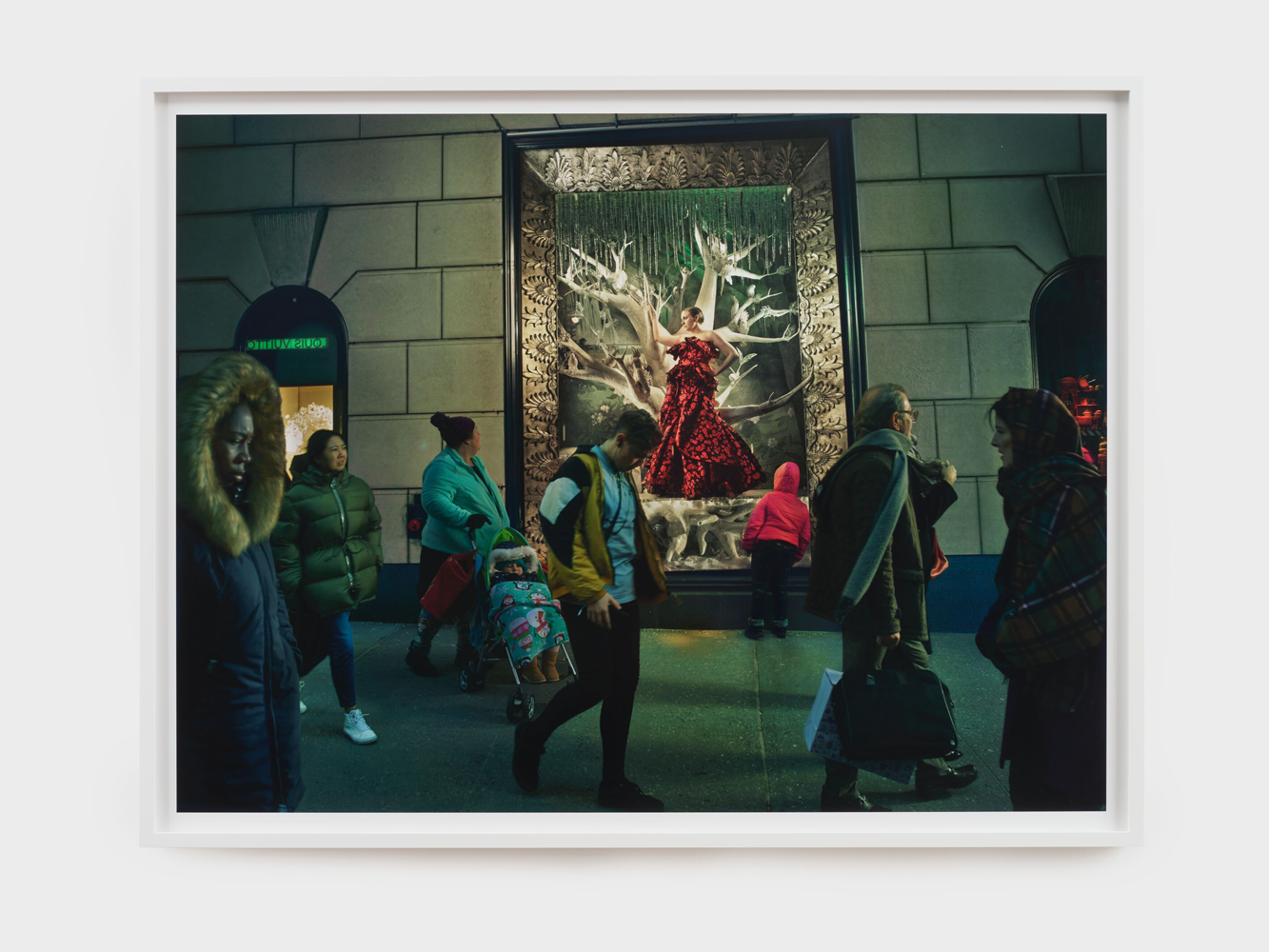
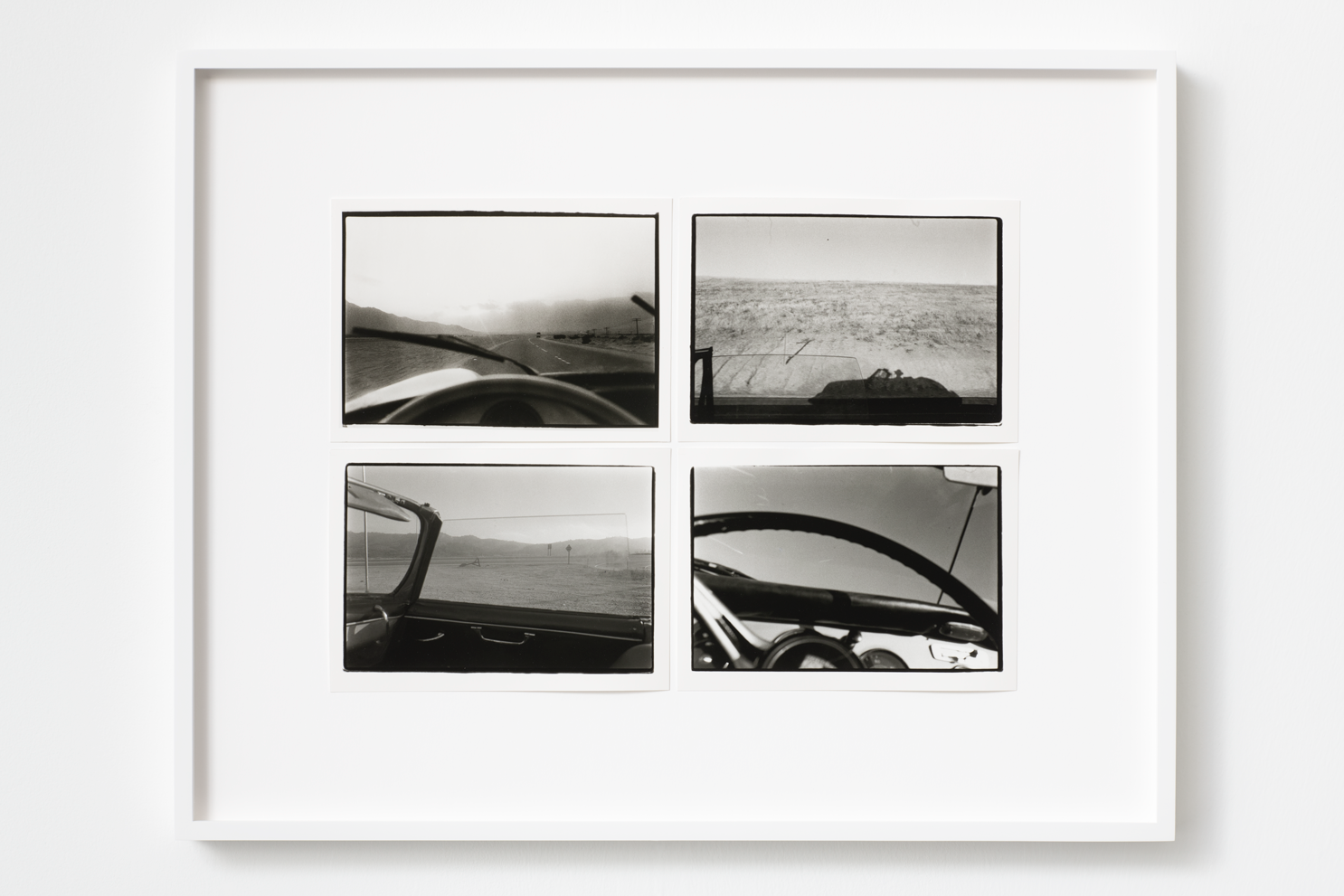
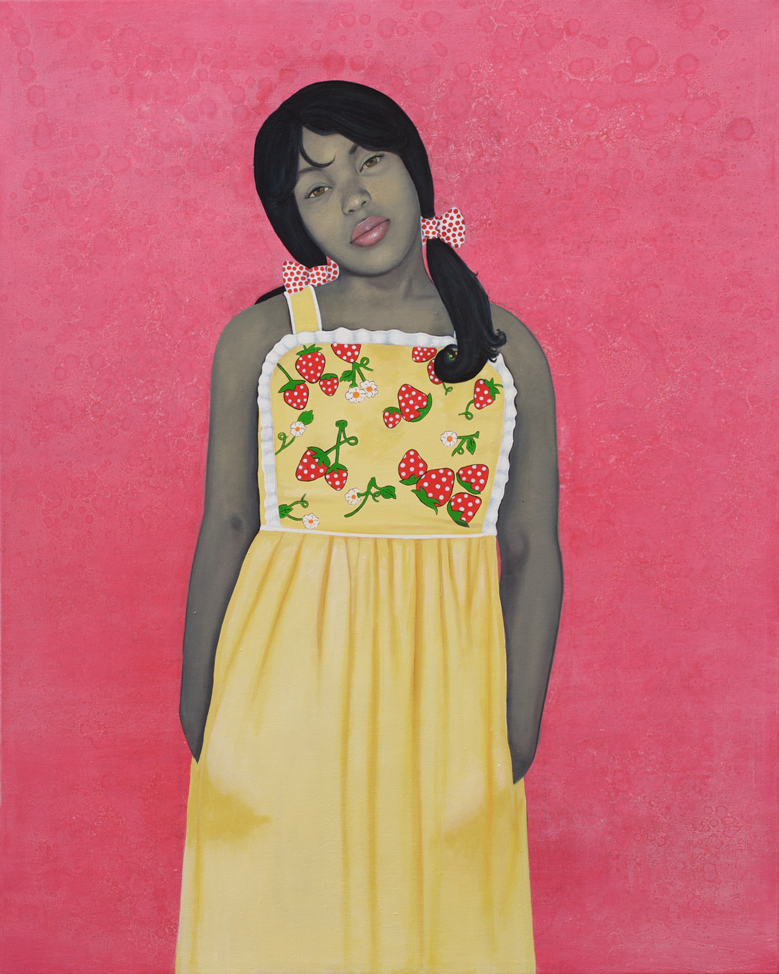
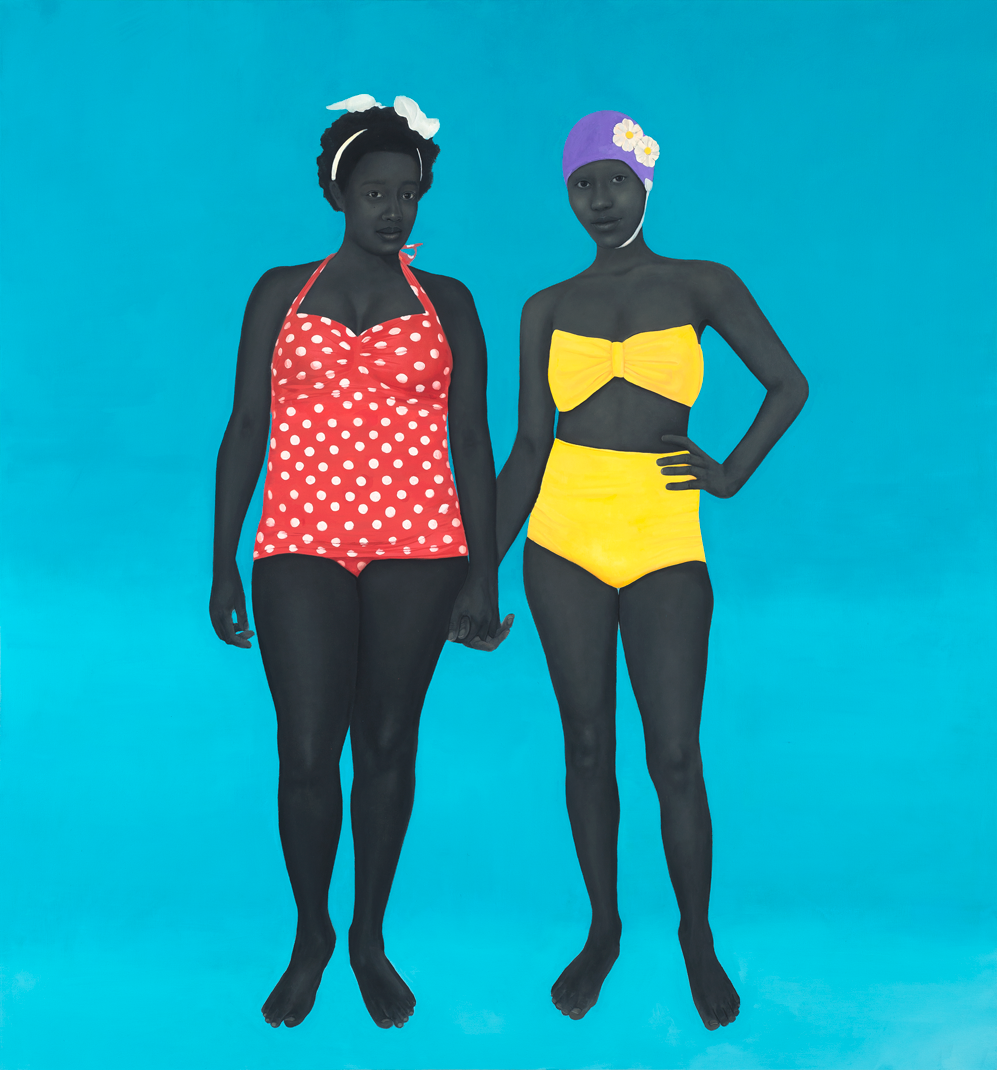
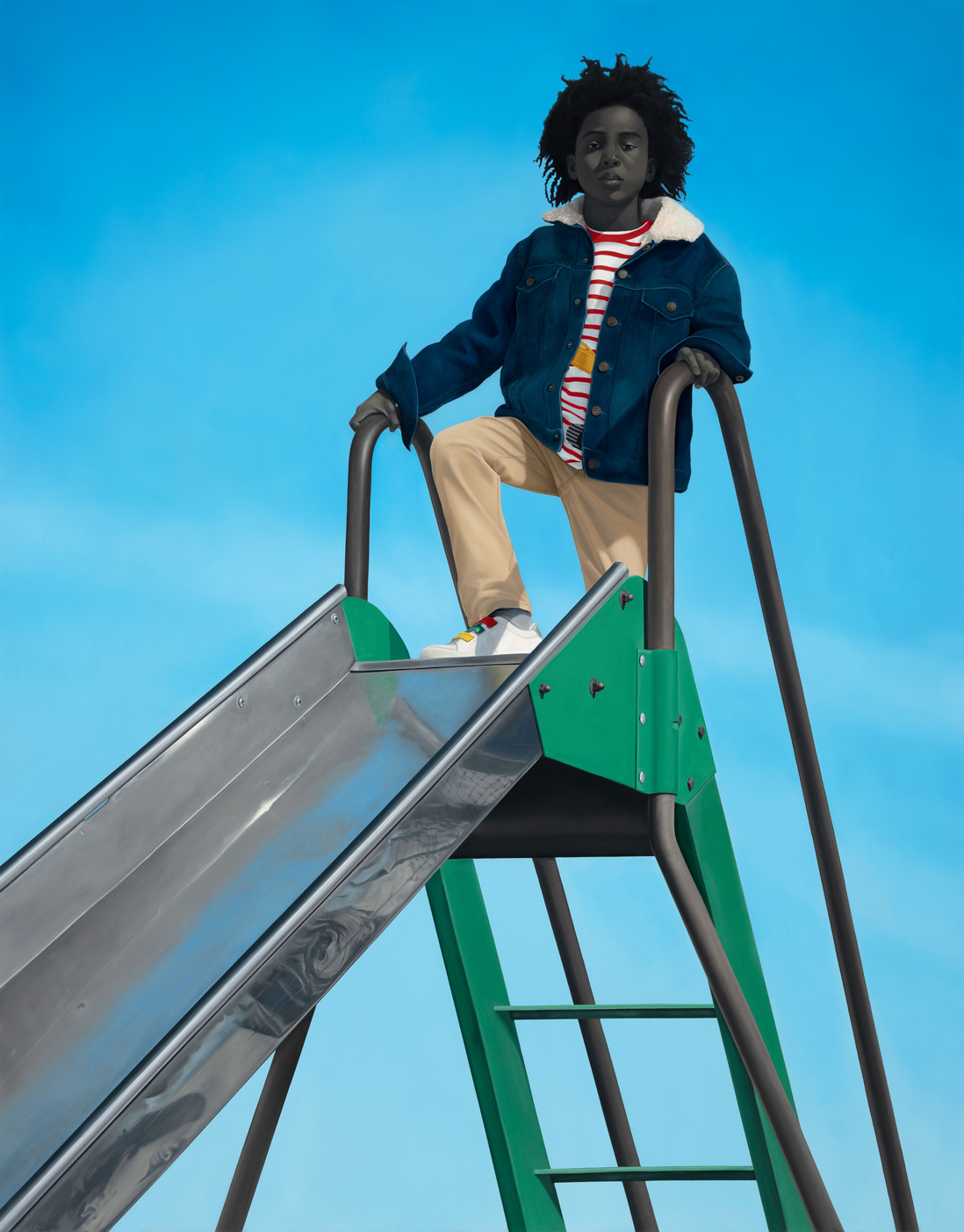
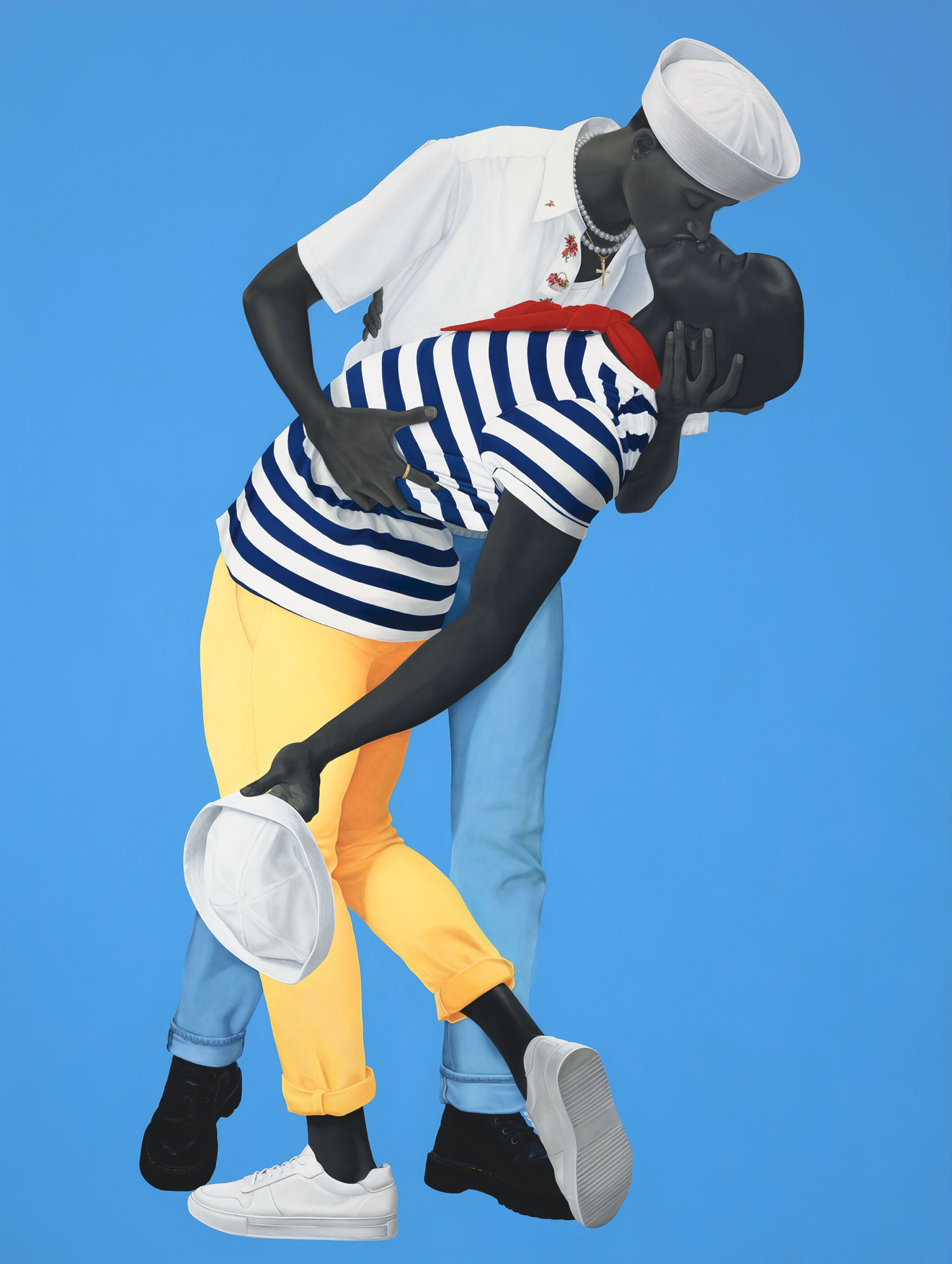
















Our Voices
Annie Leibovitz is a legendary portrait photographer whose work captures the intersection of intimacy, theatricality, and cultural history. Known for iconic images like Demi Moore: More Demi Moore and John Lennon and Yoko Ono, her career spans decades of documenting the human experience through the lens of storytelling and visual artistry.
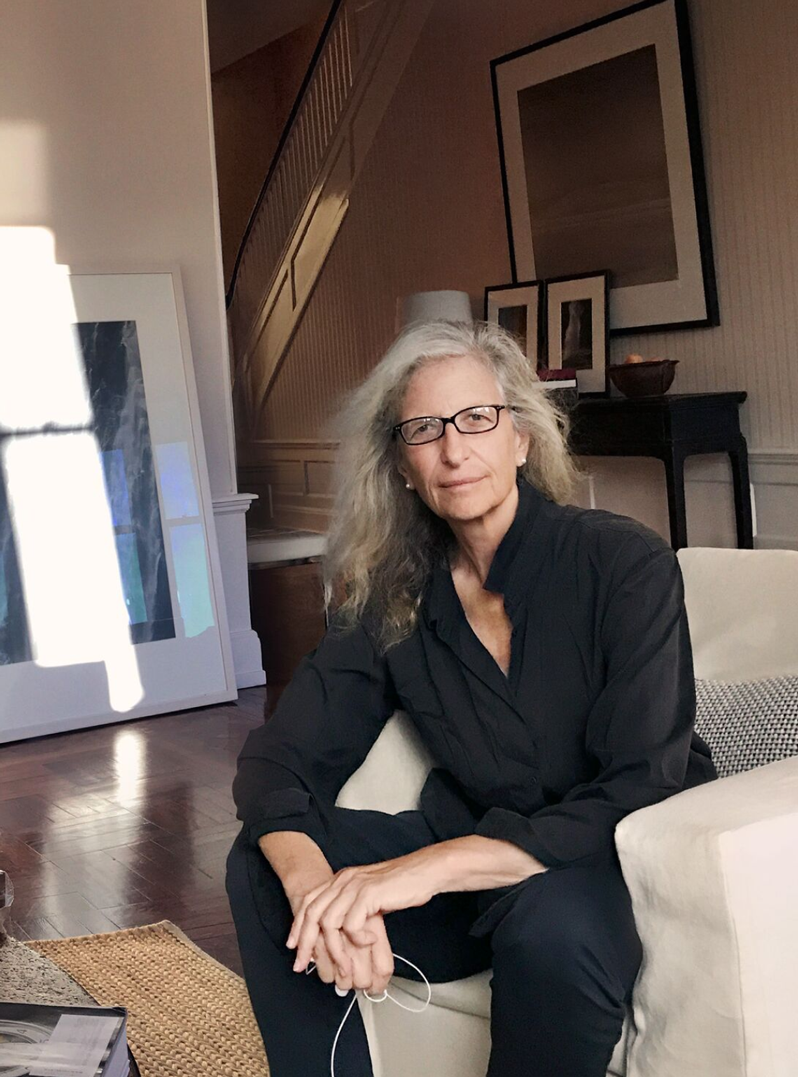
Amy Sherald is a celebrated painter whose vivid portraits reimagine identity and American culture. Best known for her iconic portrait of Michelle Obama, Sherald’s work combines emotional depth with luminous color to explore narratives of Black identity and collective memory.
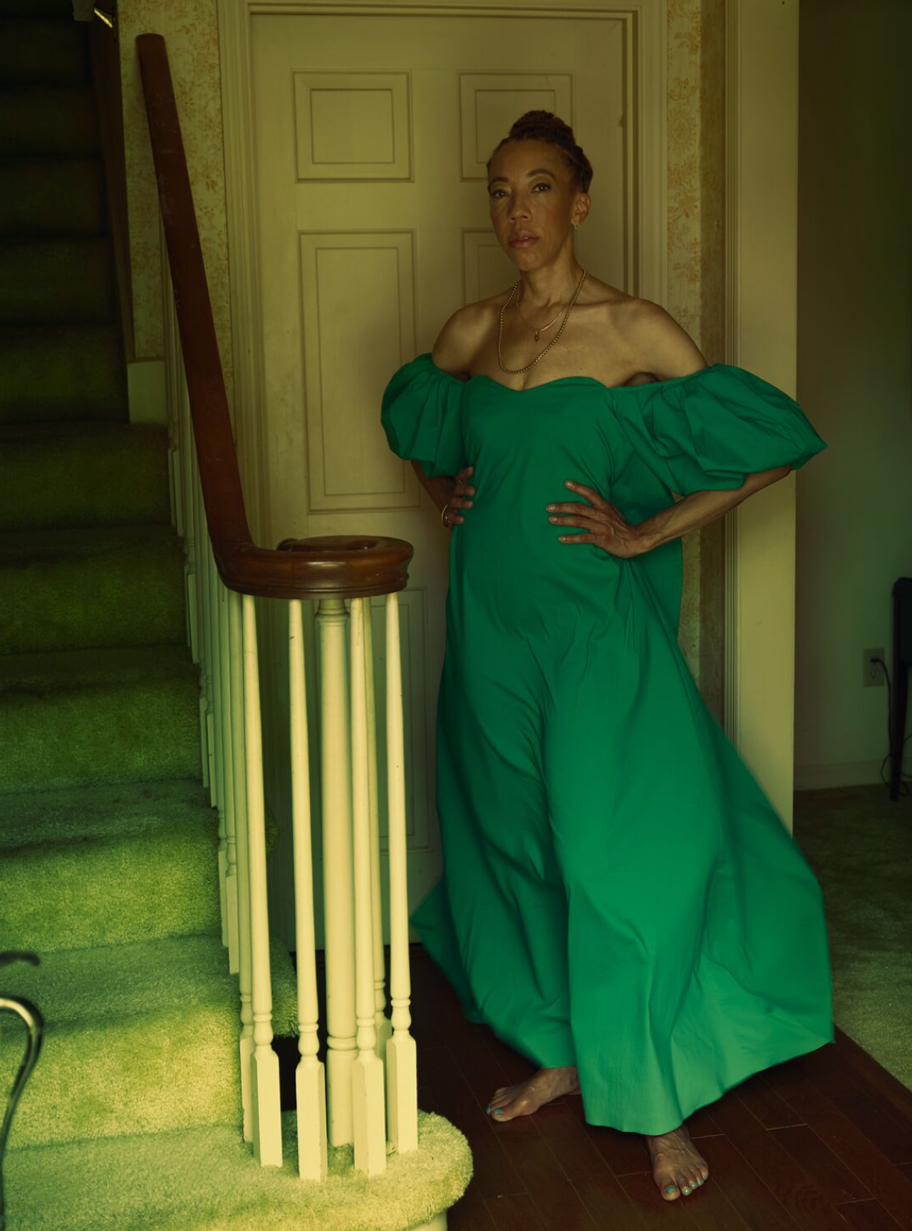
Darren Walker is the president of the Ford Foundation and a philanthropist dedicated to advancing social justice. Under his leadership, the Ford Foundation has redefined modern philanthropy, focusing on equity, inclusion, and progress. He serves as a director at the National Gallery of Art, where his passion for the arts aligns with his mission to promote cultural equity.
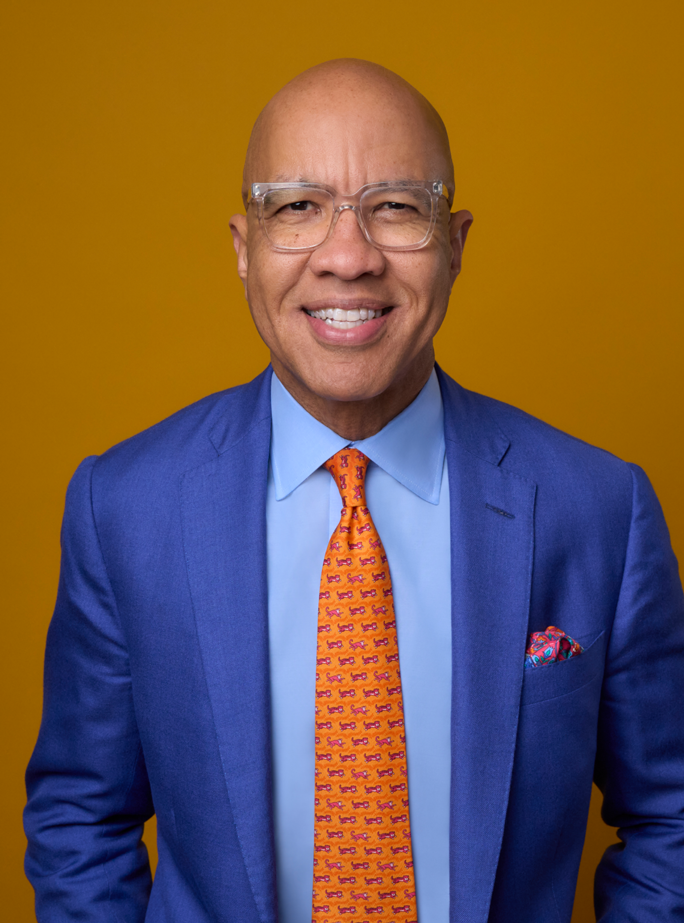
Explore Other Episodes
with
dream hampton
Listen Now →
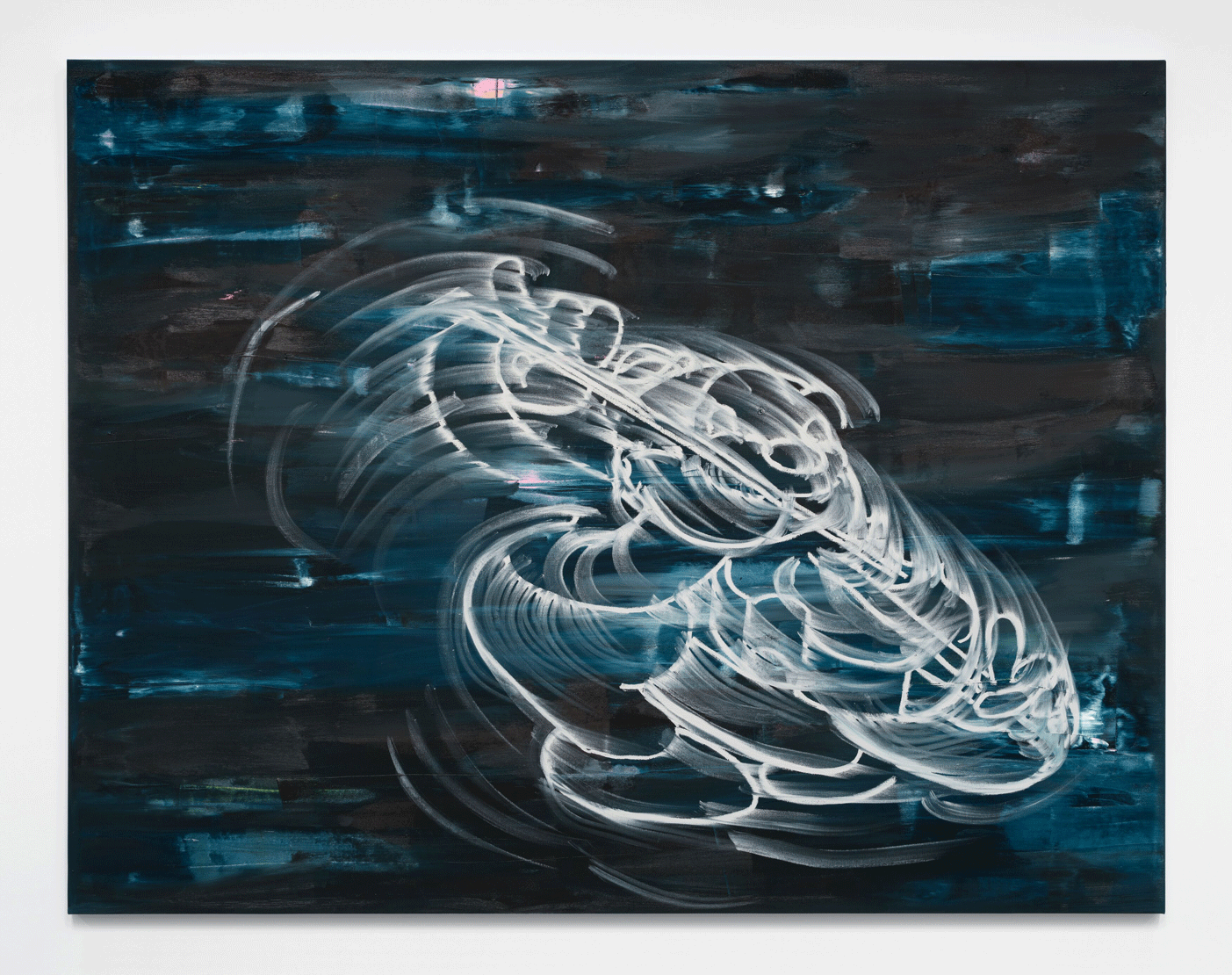
Gary Simmons
with dream hampton
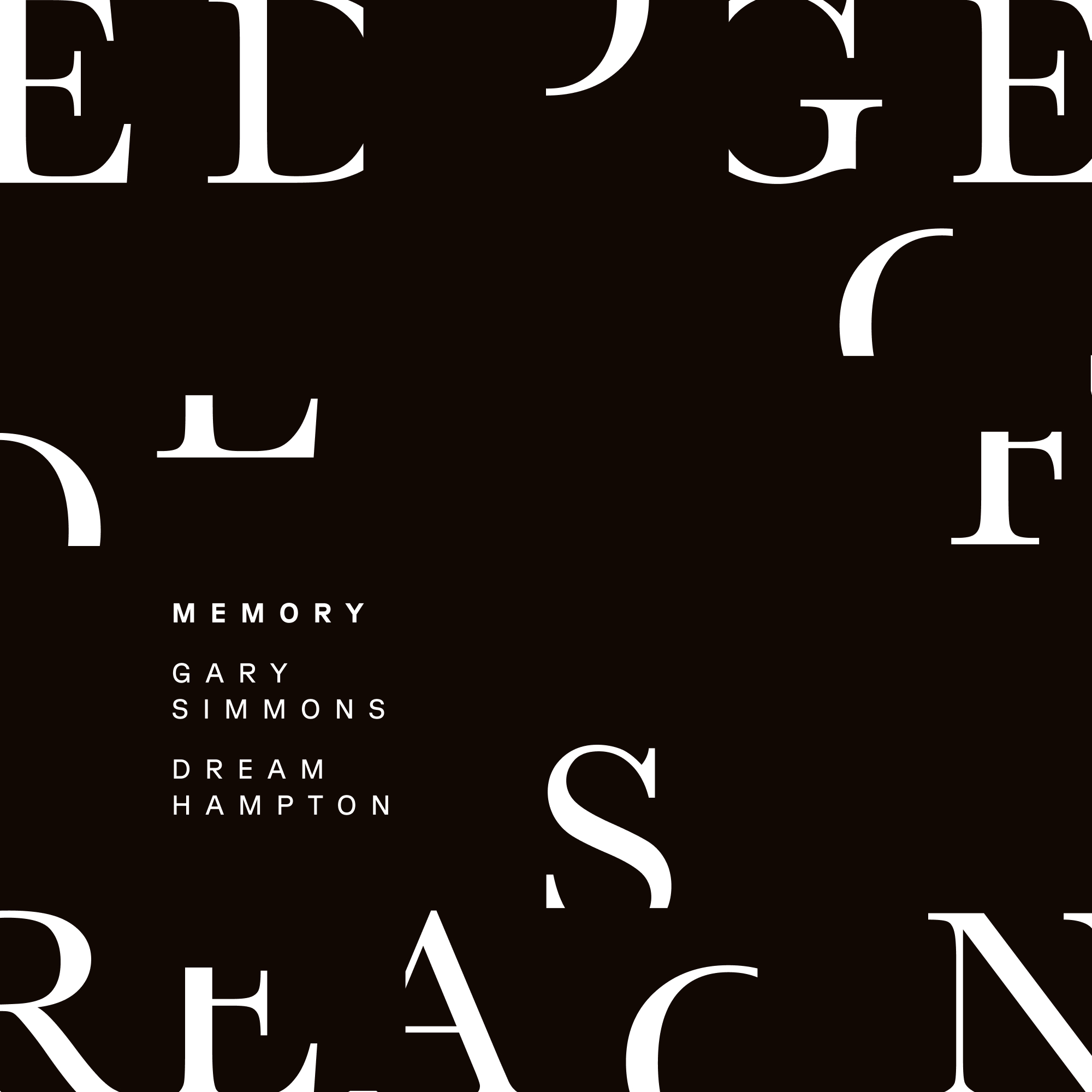
MEMORY examines how personal and collective recollections shape our identities and histories, inviting us to reflect on what we choose to remember—and what we forget.
In this episode, artist Gary Simmons and filmmaker dream hampton delve into the ways memory shapes our identities and our collective histories. Simmons reflects on how cultural memory—particularly through race and erasure—has influenced his work, from his iconic chalkboard drawings to his installations that blur the lines between representation and abstraction, while dream hampton offers insights into the silencing of certain memories and the power of remembering and reclaiming erased narratives. Together, they reflect on the personal and societal implications of memory, how it shapes art, and how art, in turn, redefines our understanding of the past and future.
Edge of Reason, Season 2 | Memory
SECTION ONE | THE THEME
Jeff Chang Welcome back to Edge of Reason. This season, we’re shifting from Enlightenment-focused ideas to something more personal, exploring the big ideas and forces that shape art and life. Memory, perception, attachment, and the magic hidden in everyday moments. These are some of the themes we’ll dive into, themes that touch both the individual and the collective, where logic meets creativity, and where art helps us make sense of it all.
In today’s episode, we begin with memory. Memory can haunt us, soothe us, or even elude us. It stirs nostalgia, puts us at ease, or reminds us of what we’d rather forget. Some memories we create together, shaped by shared experiences. While others connect us to people, we’ve never even met. How fluid or fixed must memory be to hold power?
What happens when some memories are best left forgotten? And how does memory influence who we are, both individually and collectively?
These are the questions we’ll explore at the Edge of Reason.
<< Theme Music >>
Jeff Chang …a limited-series podcast produced by Atlantic Re:think—The Atlantic’s creative marketing studio—in partnership with Hauser & Wirth—a home to visionary modern and contemporary artists.
Joining us today are two visionary artists who explore the complexities of memory. In the late 80s and early 90s, Gary Simmons made a name for himself with his erasure technique, using blurred images to investigate race, history, and cultural memory. Dream Hampton, a groundbreaking filmmaker and writer, captures both personal and collective memory in her work, shedding light on forgotten stories of survival and justice, highlighting the true power of narrative.
Together, they offer powerful insights into how memory influences art and how art can shape our understanding of ourselves and the world around us. And I’m lucky to call both of them friends.
SECTION TWO | THE ARTIST
Jeff Chang Gary, I’m so excited to dig into this with you. Welcome to Edge of Reason.
Gary Simmons Jeff, thanks for having me, brother.
Jeff Chang Today, we’re diving into memory and shared memory. And you and I both came up as hip hop heads, uh, around the same time, even though we didn’t meet up until much later. And I remember first encountering your work. It might’ve been Line Up, that piece that you did, the installation with the gilded shoes on a platform in front of a mugshot gallery.
Or it could have been your early erasure drawings where you had sketched out cartoon characters that were rooted in blackface, like, like Mickey Mouse, right? And then you erased them on chalkboards. And all I know is your work gave me chills. It was like this bolt of recognition where it was like we shared the same memories.
Uh, but for our listeners, I’d love for you to unpack this. Where did those ideas for those pieces come from, and how do you approach memory in your work?
Gary Simmons You know, I think that I’d have to go back a bit to my undergraduate years. I was fortunate enough to go to the School of Visual Arts in New York and Cal Arts in LA, and the foundation of my education was really a lot of minimalism, a lot of conceptualism.
Most of it was through a kind of white male Lens at that time. And although I was drawn to it, I never felt like there was a me in there. I didn’t feel like my voice was being heard through minimalism and conceptualism. I started drilling into the history of education and black kids and public school and where we learned.
And the earliest forms of memory that I can think of and education combined was cartoons. Those images left a massive impact for me. Um, but when you start to look back and critically deconstruct what it is that we were looking at, that’s where it became very interesting, you know, it was embedded with a lot of very racist imagery.
So one of the earliest is probably Disney. So I was looking at things like Dumbo. And thinking back about, you know, here’s this little elephant, has this shortcoming, so to speak, of these gigantic ears, and he gets taught how to take what’s perceived as a negative and turn it into a positive. What’s interesting about it is that the characters that teach him to use that shortcoming for his benefit are blackface crows.
And I started to realize that the memory of that cartoon started breaking down along racial lines. So, you know, thinking about the blackface crows, black folks remember those crows completely. And non black people were looking at the cartoon and thinking about just the elephant. And so I started to dig deeper and try to find race cartoons.
That’s where that started to come about was how we track our memory, how we break down things that we’ve seen and recall and the snatches of information. that are lost in between the reality and the perception. And therein lies that blur that my work sort of hovers. It’s sort of between representation and abstraction.
Jeff Chang I know that theme has been a continuing through line in your work, and I wanted to ask, what were you hoping to achieve, or what are you hoping to achieve with the meaning of these images, uh, by blurring them or erasing them as you do?
Gary Simmons What happens is when you’re a young artist, you’re trying to make a mark for yourself. You’re going to make these big statements. You know, and I think there were a lot of things at the time that I could draw on. It was a really rich time visually and culturally, and hip-hop was starting more or less. And I started to pick up on the idea of sampling and cutting back and forth. Where you’re taking this kind of soundscape and creating something different.
And that application went into literature, music, fashion, art, all of that. If you were probably downtown or in LA or Detroit or wherever, and you were a young kid in the city, those images, those sounds, those things spoke to you. You know, that was the first time that you’re up there and it’s like, that’s us.
There’s a strength in that.
Jeff Chang There’s so much to impact there. And we’ll dive into some of those questions shortly, but first, let’s welcome our guest dream hampton. dream, originally from Detroit, is an acclaimed filmmaker and journalist. She started out as one of the few women involved in early hip-hop journalism, working in music, culture, and politics.
She’s gone on to produce and direct Surviving R. Kelly, which earned her a Peabody Award. Her recent work includes Freshwater, and It Was All a Dream. Among her many accolades, she was named one of Time’s 100 Most Influential People.
SECTION THREE | THE GUEST
Jeff Chang: dream, my old friend, welcome to Edge of Reason.
dream hampton Thank you. I’m so honored to be here with both of you.
Jeff Chang Your work from writing and organizing with Black August to your films, your filmmaking, has always focused on uncovering silent stories. I’ve heard you mention this before—cultural amnesia. How do you define that? And what does it mean to you?
dream hampton So erasure, right, is, um, I often talk about this as a black feminist praxis, right?
It’s citation, right? We’re constantly having to put ourselves back in a history. So doing things like putting Cindy Campbell back in this story, and that has since been contested, but whatever. Like, so Kool Herc’s sister who throws the actual party that we call the beginning of hip hop is a perfect example.
Even just the history of women in hip hop period gets erased. I saw something: Tony Hawk is holding his grandson and apparently, the grandson is his son’s kid, with Francis being Cobain, and the tweet was saying Tony Hawk and Kurt Cobain are the grandfathers, and I was like, wow, Courtney Love can get erased too.
Like, you know what I mean? Like, and she made herself enormous, you know, but it’s… so, so women are always in danger of being erased. It’s just how it is. It’s the truth of like patriarchy and the insidiousness of it and the everywhere ness of it.
Jeff Chang If I may, I wanted to quote Gary here, who talks about memory.
Uh, you said once, I think of memory as more than what we are willing to tell ourselves. It’s also composed of our refusals, our failures to account. With that in mind, dream, I wanted to ask you, what responsibility do you feel towards memory, particularly those memories that are silenced or ignored? How does absence or silence play a role in your work?
dream hampton We’re always racing against time and the bandwidth that we have to like, remember and keep people in our histories, to keep it alive and So, you know, I’m thinking about like this Black feminist generation that so shaped me that we’ve already lost Toni Morrison and Tazaki’s still here. But, you know, um, I just saw June Jordan and Audre Lorde’s notes around Palestine become this huge, um, talking point.
I was thinking about how we’re projecting a today’s politic onto their moment, but that moment wasn’t that far away. It was the 80s and sadly so many of the issues remained static. So I was thinking about how these questions. are at once, like, a history and a present and a future. Um, and sometimes the players are just shifting.
So the questions remain the same. In my last documentary, the questions of misogyny, the questions of erasure of women, the questions of when and where we enter this work and how we criticize it, they all remain the same. So, I mean, I don’t know what the work is. I always say that I want problems worth having, and that usually means new problems, right?
Like I, back to hip-hop, like Fat Man Scoop dying on stage, or Elvin Jones, you know, great drummer. dying in the morning after a gig, right? I don’t want to spend my, like, last breath arguing with some rapper about misogyny, right? Or any man, right? So, there’s that work, and then there’s that exhaustion from that work.
Some of it is memory, but some of it is still right now. And sadly, like, the future that we face with the same problem.
SECTION FOUR | THE CONVERSATION
Jeff Chang Let’s bring both of you in the conversation. Now, Gary, as you’re listening to dream, what’s coming up for you?
Gary Simmons I mean, I agree completely with what dream’s saying. I think to add to it, I think not all memory sits in that glow of amber light. I think that sometimes memories are painful and create certain traumas for certain people, and it’s how you deal with that moving forward, right? And so I think colored folks have a long history of needing to reinvent certain histories. I think that there’s, because we’re oral historians in a lot of ways historically, right? There wasn’t things written down. There was things that are passed down and how that, you know, it’s almost like a game of telephone where I tell dream something and then she tells it to Jeff, and so on and so on.
The basis of the story stays the same, but there are little nuances. Or, you know, even if you get into something where you translate material from one language to another, there’s slippages and loss between those two. And I think that you’re, that our memory works in a similar way. The further we move away from an event, the blurrier it gets. And there’s a kind of desperation to to complete the gap between the actual and what we’ve now sort of preserved. I don’t think, you know, to use dream’s word, I think it’s extremely fluid. It goes back and forth, and there’s ebbs and flows and things like that that we’re forced into completing.
I can remember sitting in the kitchen, and I idolized my grandmother. She was my everything. And I would watch even the way that she moved through the kitchen. And, you know, she’d be making codfish cakes or something, and nothing is written down. So I’d say, “Gram,” you know, “How much pepper or scotch bonnets do I put in for that?” She’s like, “Oh, sweetie, you’ll just know. And, you know, you just kind of sprinkle it in.” And I’m… I’m like, wait a minute, yeah, like I gotta get this down so that I could make this for my daughter and her kids and so on. She’s like, oh yeah, you’ll just pass it on.
And I think there’s something really beautiful that the meal kind of subtly shifts, but somehow in our memory, our grandparents have that perfection that they always get the meal right. And I think as a boy child in this household full of women, very strong women, West Indian women, you know, that oral history passed down is essential.
There’s this photograph that I talk about, that’s me and my sister in the backyard. I think my sister’s in her diaper or something, you know. It’s like nineteen, late 1960s, early 70s or so. I’m aging myself, obviously. And I have one of those little tin pedal cars that we all had. And my grandmother must have told me what was going on in that photograph probably a hundred times before she passed. Now, what’s interesting about that is I can’t really, truly recall what happened. But the retelling of that event has become so like, like part of my own history.
That her recollection of that photograph has become my memory. And I think that that’s a really fascinating thing to deal with. And it sort of represents the way all of us have grown up with that way of how we deal with recollection, even if it’s once removed. And somebody’s retelling you the history that you went through, and you have to respect this, and you have to respect that.
Jeff Chang You’ve touched on so many things here. First, the impossibility of memory. the need to fill a kind of a vacuum and then how the artist takes memory and brings it forward. It actually makes me think of this line from Freshwater dream, like where you have that beautiful yet devastating line from your grandmother about water never stopping and I’m getting chills just thinking about it, but this idea of water always moving.
Uh, and then you show these powerful images of your family in the flood and you talk about how the floodwaters consume your memories and that a flood is water that can’t move, that is not allowed to flow.
So as you listen to Gary’s reflections, uh, on memory, what comes up for you and maybe for both of you, what role do you think the artist has in shaping memory for the present and, and even for the future, like for your kids and for your grandkids?
dream hampton Well, something that struck me that Gary was talking about is actually a lesson, like, as I now have an adult child, and nieces and this idea of the photograph, right? Which becomes kind of a shared family memory, but really there’s someone who’s dictating it. Or the photograph, we don’t actually remember the birthday party.
We remember the photograph of the birthday party. So I’m also trying. not to be too prescriptive when it comes to the past, you know? The other thing I thought about when he was talking about the opposite of memory being in an amber glow, I was thinking about something I don’t talk publicly about often, um, just because it never feels that safe, but like, intimate and love relationships, you know?
And being older and having the distance and sometimes the wisdom to not judge them and cast them in the same ways. that I did when they caused me so much heartache or trauma, right? And, and in not like judging and casting the relationship in a particular light, I then free that person, that lover, from a memory that I associate with my own suffering.
And then it becomes a more generous exercise in like, what love is really supposed to be, which isn’t just about your own self. Like that kind of the ego way that we are constantly processing the world is through our own lens and our own feelings. I hate that, um, Maya Angelou quote, that it doesn’t matter what happens.
It matters how you felt about it. I’m like, no, it matters what happened, right? Although I know that to be true, I know that she’s accessing like a fundamental kind of truth about how we process. But then to give yourself again, not just like your lover the grace or your family member the grace, this also could be like love isn’t just our, romantic and, you know, sexual relationships.
It’s like you’re giving your parent that grace to know that the time that I actually, like, really judged my mom and hate her for failing or whatever, she was like 20 years younger than I am now. Right. And I still haven’t figured it out. Right. And the same obviously with our dads, you know, like, like, I, you know, all of the stuff that like, um, men are learning and relearning and have been forced to kind of reckon with, like, then to try to give some of the, you know, male figures in my life some grace, you know, um, so that has been an exercise that is connected to like, remembering and honoring.
And But it’s also like a rewrite or a remix. So it’s like crate digging, but the remix.
Jeff Chang I’d like to pivot here to talk about Greg Tate. For listeners who aren’t familiar with his work, He began as a writer at the Village Voice in the early 1980s and went on to define what would come to be called hip-hop journalism. Greg was a fearless writer, critic, and musician who was a dear friend and mentor to all of us. His sudden passing left us all feeling a deep sense of loss.
We memorialize him in our work, often asking ourselves, “What would Greg have done? What would make Greg say, ‘Okay, let’s talk about this’?” I think we all hear his voice in our heads, and it raises a bigger question about how we fill our memories and pass them on.
Dream, in Freshwater, you ask if the stories and memories we have today will still be around in a thousand years. Gary, if we knew the answer to that, how would we feel? What does it bring up for you, thinking about memory on such a long scale, especially as we honor Greg’s legacy in this moment?
Gary Simmons Well, first of all, so one of my dearest things about Tate was I could bump into him on the corner of Broadway and Astor because he would just hold court there. And if you walk down Broadway, you saw Tate in his Carhartt and his boots just, and his bag over his thing, and somewhere lurking, if you’re lucky, A.J. shows up.
Jeff Chang For our listeners, A. J. is Arthur Jafa, a renowned visual artist, cinematographer, and filmmaker best known for his work with Julie Dash, Solange Knowles, and Jay Z. And for his piece, Love is the Message, the Message is Death, he was a longtime friend and intellectual sparring partner of Greg Tate.
Gary Simmons If you get in a conversation with Tate and A.J. and yourself that, that conversation can take hours. I mean, dream can attest to this. I mean, it’s like hours. My wife, Ellen, she’s been with me when I bumped into the two of them on the corner. I lived around the corner from there. I still have that apartment. So every time, talk about memory, every time I come out of my apartment in New York and I go to the corner of Astor and Broadway, if she’s with me, I instantly go, this is the Tate corner like this.
This is what this is where it all happens. And for me, I used to ask him, why do you stand here and do this? And yes, his office was there. But for him, it was like life comes to you and through you and, you know, those things that he may have said, a lot of them are very poetic and accessible to many people.
Each of us had these like, intimate relationships with Tate that defined how we understand him. I think there’s also when you start to hear other people tell stories, you click into those things, and there’s a kind of unity to it. It’s like, Oh, you’re one of us. It’s almost like that movie Goodfellas, like, oh, yeah, he’s a good fellow.
You know, you name it and it passed through them Even in my studio, and that was, that’s a very special talent to be that griot and filter that people of all backgrounds and forms of production pass through. Like, it’s just, it was one of those moments in New York downtown that you had all of these incredible people, I can actually still see dream walking down from Union Square towards Astor Place and dropping in for like a minute.
You know, and seeing us like sitting there talking and just being like, you guys, man, I got to get up out of here. It’s too much testosterone here for me.
dream hampton I felt like I was Elaine in Seinfeld. I don’t know who A.J. would have been, but We had a 20-year throuple thing happening, and it was all conversations, but you know, I was, as you were speaking, Gary, I was thinking about place, and I think about this all the time.
It’s so sweet that you still have your place in New York, but no place stays the same. Nothing is static about place. And I knew, like, when I landed in New York, people were bemoaning the 80s. They were like, it’s over. You just missed Jean Michel and, you know, Fabricating his stories of, like, what the 80s were like.
And then that, when I arrive in 1990 to attend NYU, there’s a whole nother New York. And so a city like that is constantly resetting itself. So I have this sadness of, like, you know, New York without Tate is not New York to me, right? I also don’t, I’m not a nostalgic person, so I know that there’s a New York that’s happening that feels like what you were talking about, Gary, where people are still just running into each other.
They’re having their queer day parties in Brooklyn, and there, it’s just something we don’t have access to. Like, we’re not the kids anymore, so we have our memories, and we’re standing in front of a Duane Reade like, this used to be Nell’s.
Gary Simmons Haha, It’s totally true.
Jeff Chang dream, I wanted to bring up Gary’s backdrop photos, especially since you were the subject of, of one of them. These were scenes where Gary took portraits of friends and strangers, and they were like real-time snapshots, I guess, in a way, much like what we see on today’s social media. But over time, they’ve become a, this collection, something deeper, a self-portrait, maybe of a community in a specific moment.
How do you see artists, including yourself, activating the process of, of capturing and preserving collective memory within a community? And how does that process shape the way we, as a community, make history through shared memories? I’d love to hear your thoughts.
dream hampton I don’t know that one should be thinking about history when one is in the process of making work, you know?
I think that If you feel the work is important, and I haven’t always felt like everything I do is important. But when I am, particularly when I’m holding other people’s lives in my hands or stories in my hands, I do always take it as a serious and important work. And I’m not concerned, you know, this is this question of being present in the moment.
But you don’t have an idea what’s to come. And when I’m shooting Biggie, for my class at NYU, which is really the thing that’s in front of me. And then later for a documentary that I was calling, And It Don’t Stop. I’m shooting him for that. I have no way of knowing the fatal standoff that’s gonna cost him his life, the some rat beef.
I have no way of knowing what lies ahead for all of us. It’s important to just be present in that moment and to be I don’t even want to use words like honest, you know, um, because maybe honesty isn’t always the assignment, but an authenticity definitely isn’t always the assignment, you know, so it doesn’t always have to be literal.
Um, it doesn’t even always have to be honest. You know, I love a good yarn, a good tail. And I think about that with family members who spend these yarns for us, right? Like that. Okay. You know, that is just as important. That becomes its own kind of truth. It’s the lies you tell to survive something, to, you know, to spruce it up, to spice it up.
But either way, the idea of history shouldn’t be at our forefront as we’re creating.
Jeff Chang dream, you were speaking about the importance of being present as an artist in the moment when you’re creating, not thinking necessarily about what the impact is gonna be down the line, uh, about making history, so to speak.
And I’m thinking about the ways that that kind of immediacy also connects up with Gary’s work. Gary, could you talk about your Black Ark installation and how that captures memory and history, especially in the context of creating something in the moment that later takes on a deeper kind of historical meaning?
Gary Simmons That’s interesting. I think something like the Ark taps into some of the things that dream was just talking about. That’s a very personal piece in some ways for me that I leave out of the equation or out of the way it’s talked about or defined. Generally, you know, music was very important in my household, and my father had a really quick fuse temper, and it could get scary sometimes, and uh, one of the ways that we chilled it out was with music.
So if I got myself into some problems I’d look at my sister, and she’d be, like, scrambling around for Johnny Nash records.
I think about why that piece was called Recapturing Memories of the Black Ark was, it’s based on Lee Scratch Perry’s studio, which goes to memory to begin with. He burned down his studio, I think, two or three times, and that was called The Black Ark. So, I always loved the way the Jamaican sound system worked as this center in a community, this booming sound, and I thought, I want to take some of what was left behind from Katrina.
I was invited to do this show in New Orleans, so I drove around the Ninth Ward, collected a lot of wood, and got together with a carpenter who was also a musician. And I said, listen, I want to make a Jamaican sound system out of all of this. This discarded wood, this terror, really, of these destroyed houses and lives.
It’s terrible, really. The thought of destroyed houses and lives. I thought it would be great to, to put something together that was positive. And what completes the piece is, I invite other artists to come and perform on the Ark. So once it gets turned on, by whoever, we record it via video, and it’s, it’s put into a kind of library that just keeps going, but it’s, it’s fantastic to watch how people see this object interact and mesh into different cultures. It’s fantastic.
It’s, to me, that’s how memories formed is almost collectively to put a, you know, a cherry on this.
Jeff Chang Well, it’s been incredible to share memories with both of you today. Your insights and stories have given us so much to reflect on, from the personal to the collective, and how memory continues to shape our art, our communities, and our histories.
Thank you both for allowing us to listen in and explore these powerful connections together—here on Edge of Reason.
<< Outro music >>
Jeff Chang Well, it’s been incredible to share memories with both of you today. Anytime I can get with either one of you is amazing. But both of you together at the same time. Wow. Thank you both for joining us on Edge of Reason.
I’m Jeff Chang, and you’ve been on a journey to the Edge of Reason. Join us next week when we speak to Hauser Wirth artist Charles Gaines and acclaimed fashion designer Grace Wales Bonner to explore how perception versus truth drives their work.
If you enjoyed what you’ve just heard, Like and review on Apple Podcast, and help spread the word about our series to other listeners like you.
GALLERY
to see more
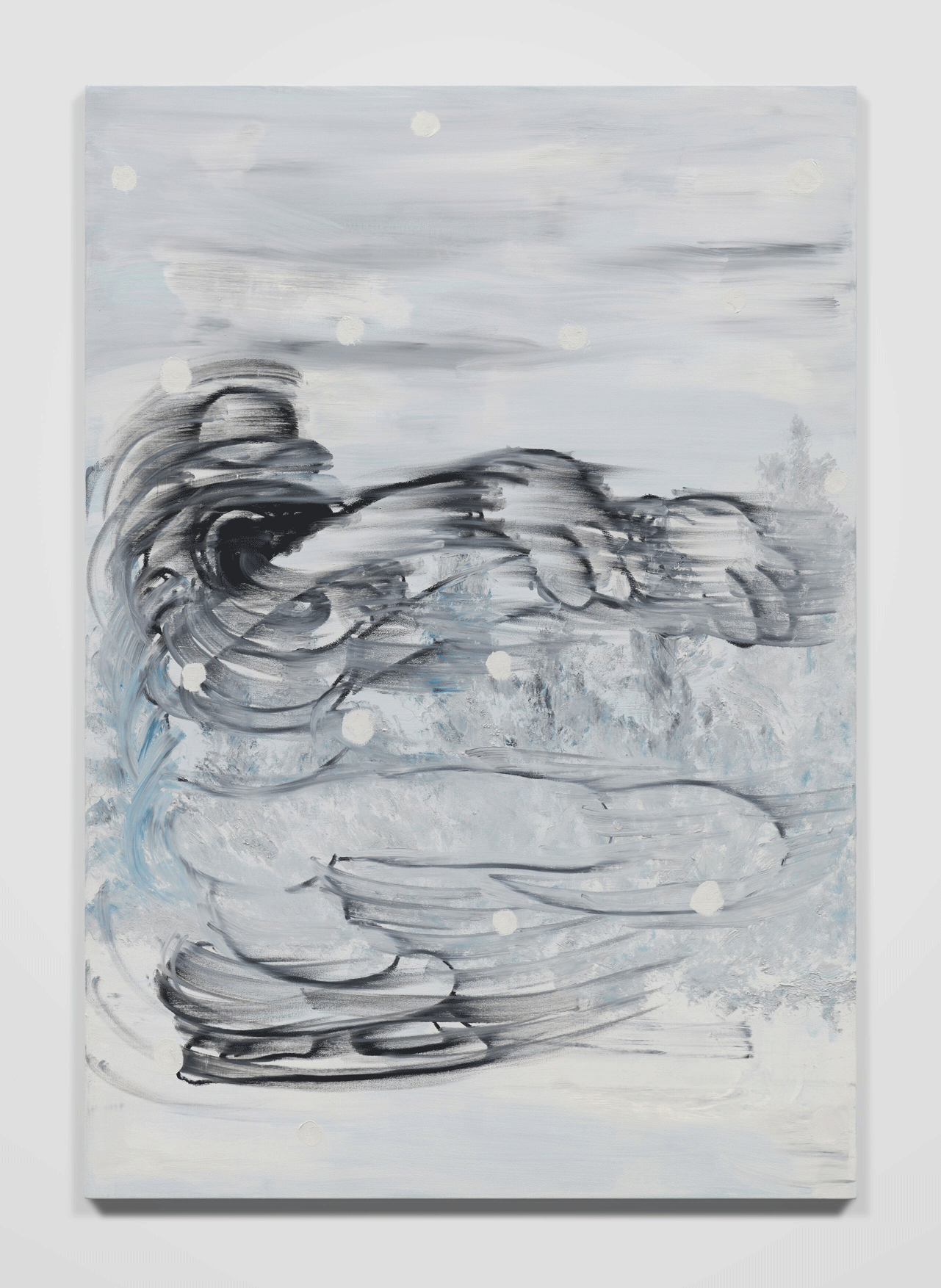
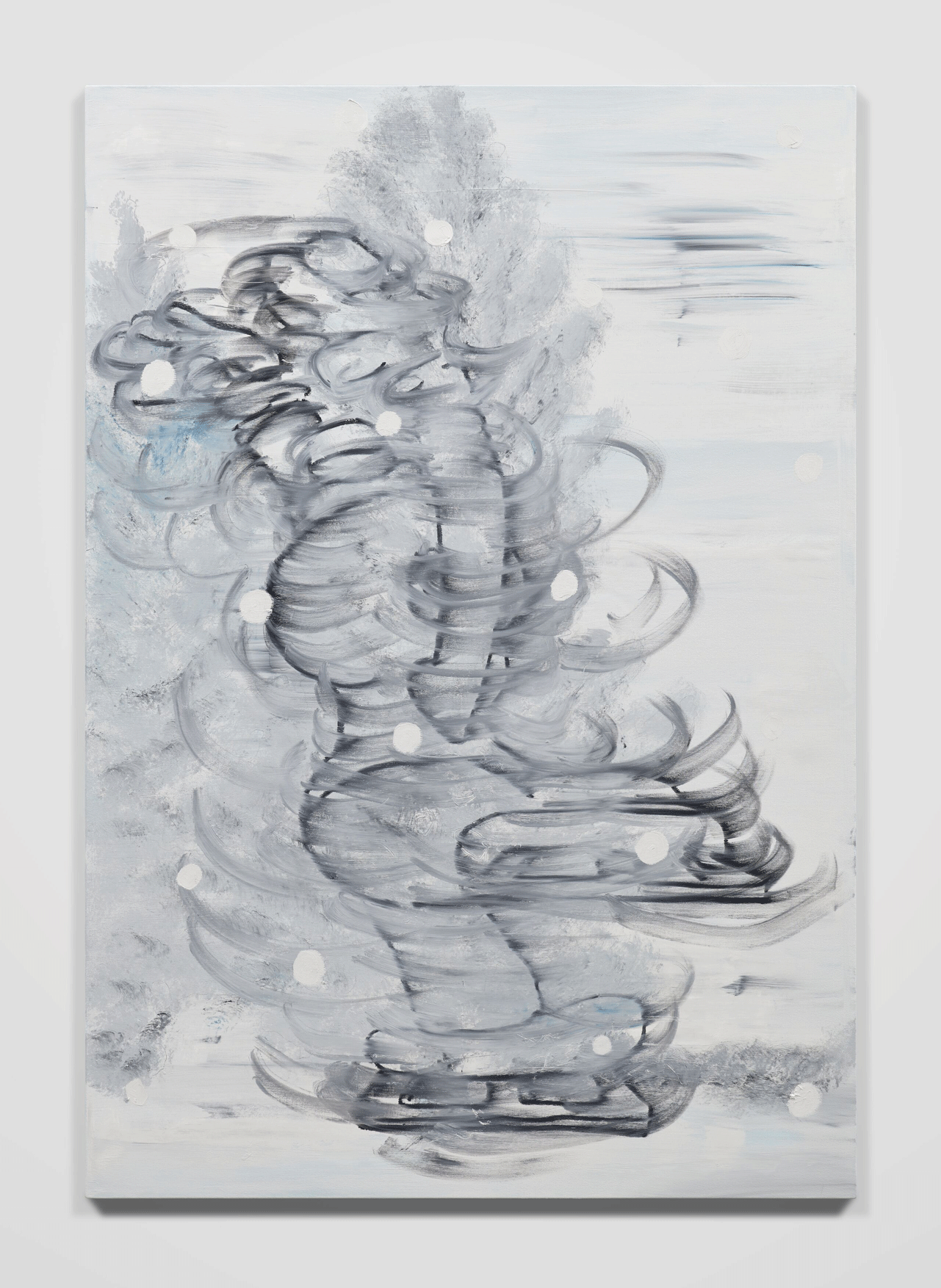
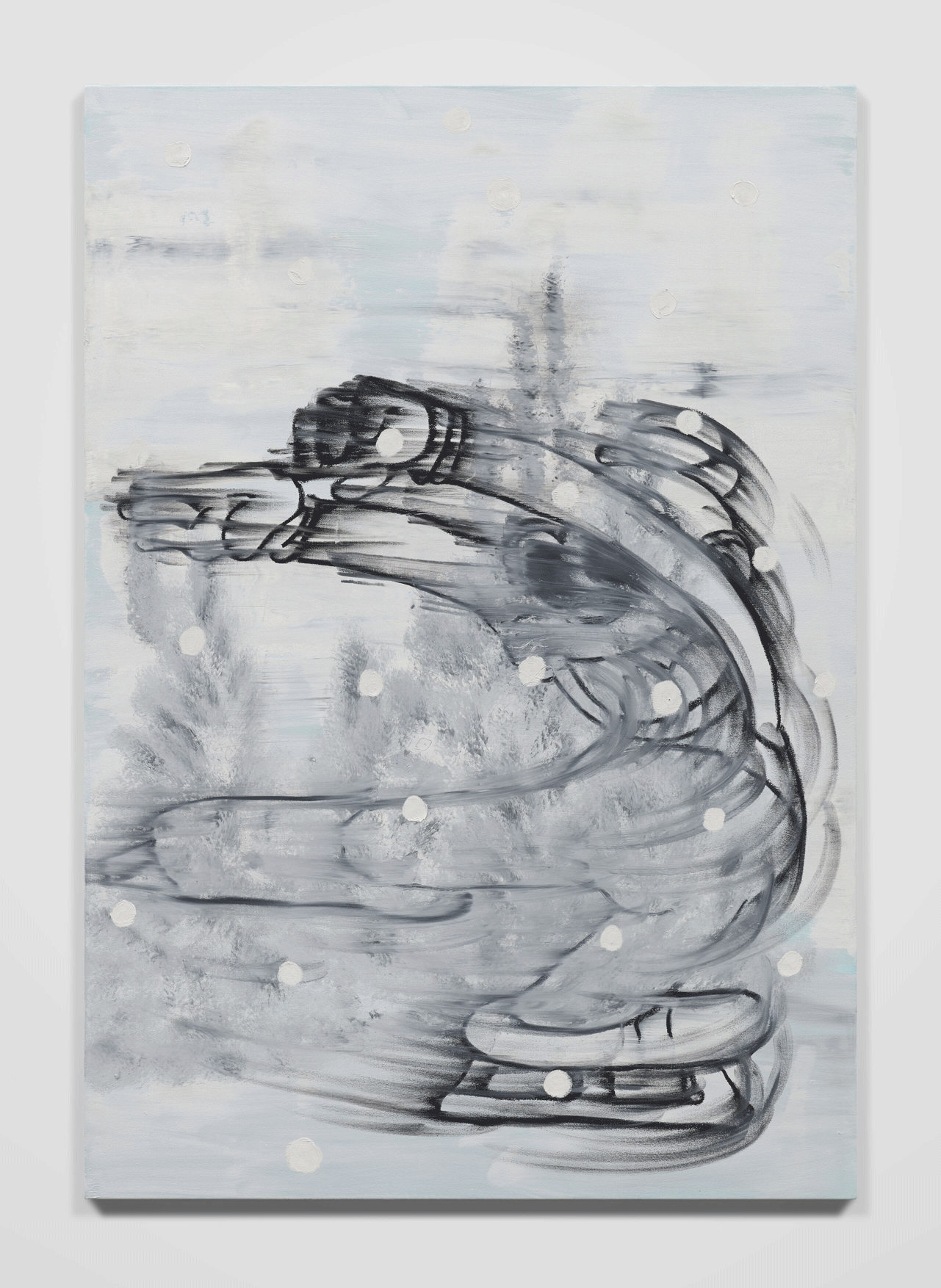
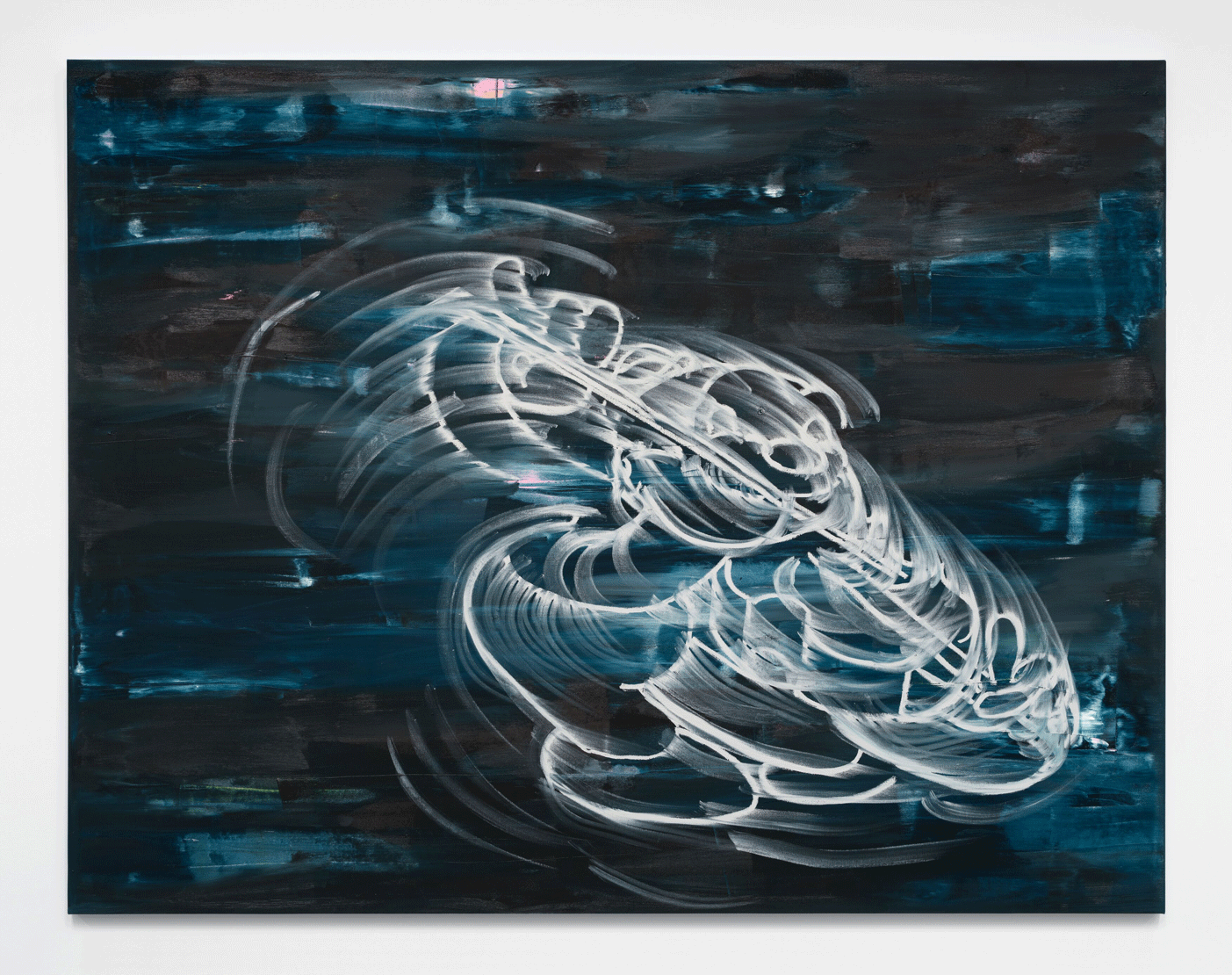
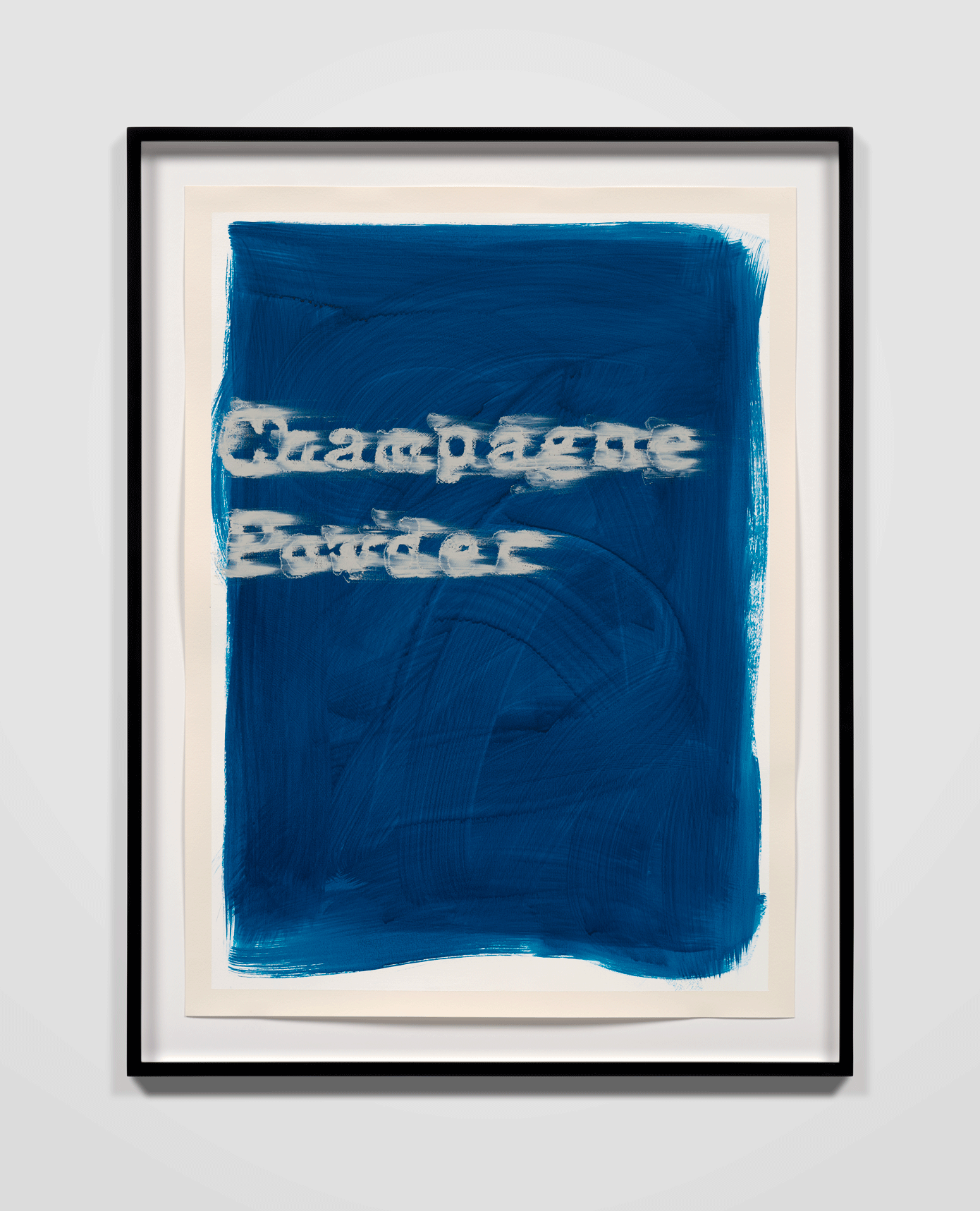










Our Voices
Gary Simmons is an acclaimed artist known for his signature “erasure” technique, blurring imagery to explore themes of race, memory, and cultural history. His multidisciplinary practice spans painting, sculpture, and installation, revealing the hidden narratives and collective memories embedded in popular imagery. Through his work, Simmons challenges viewers to reconsider how memory is constructed and how it shapes our understanding of the past and present.
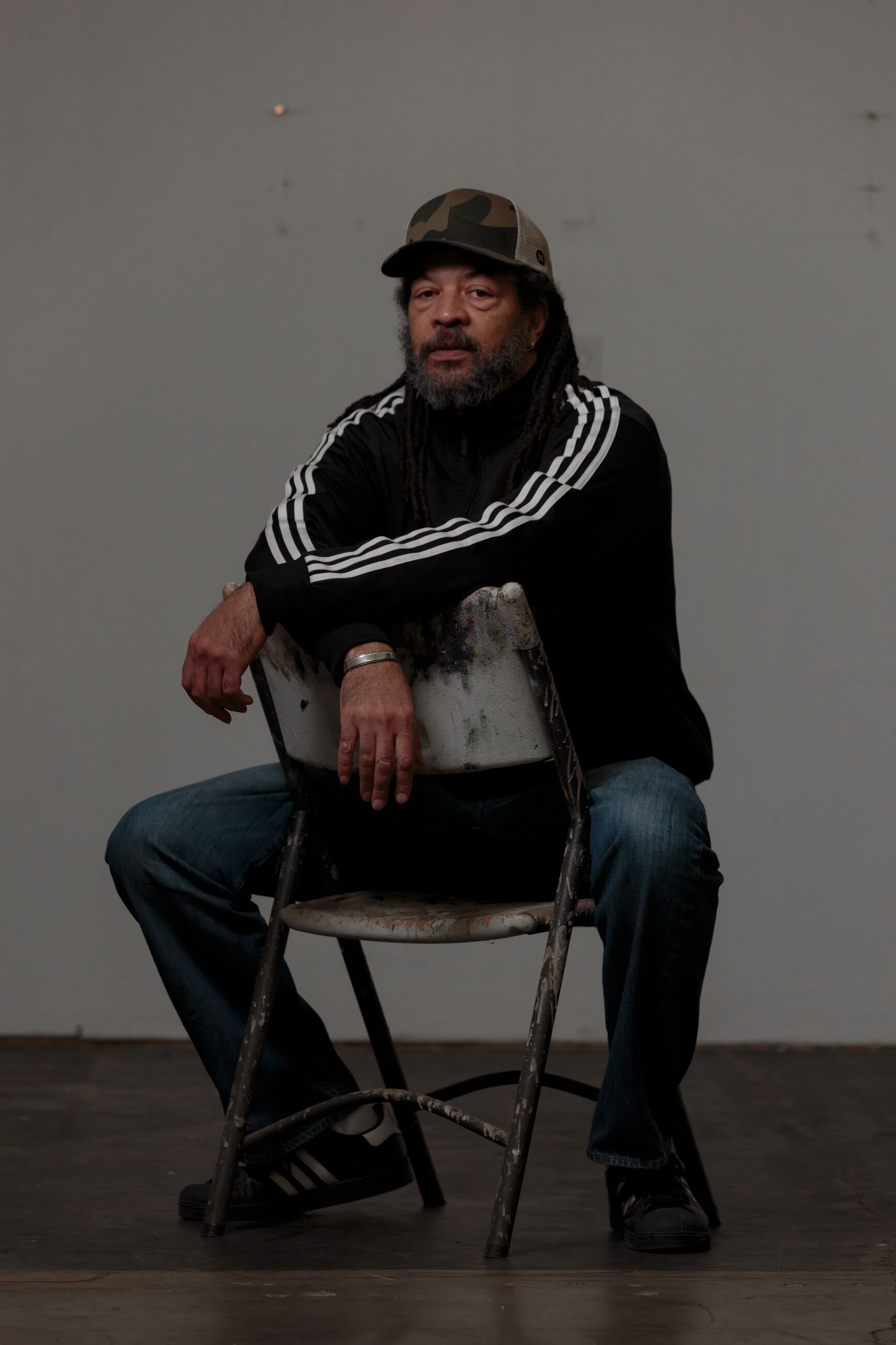
dream hampton is an award-winning filmmaker, writer, and activist whose work centers on issues of race, gender, and justice. Perhaps best known for her groundbreaking documentary Surviving R. Kelly, which earned her a Peabody Award, hampton has spent decades amplifying underrepresented voices and uncovering silenced stories. Her influential career spans journalism, film, and activism, positioning her as a leading figure in the exploration of cultural memory, identity, and truth.
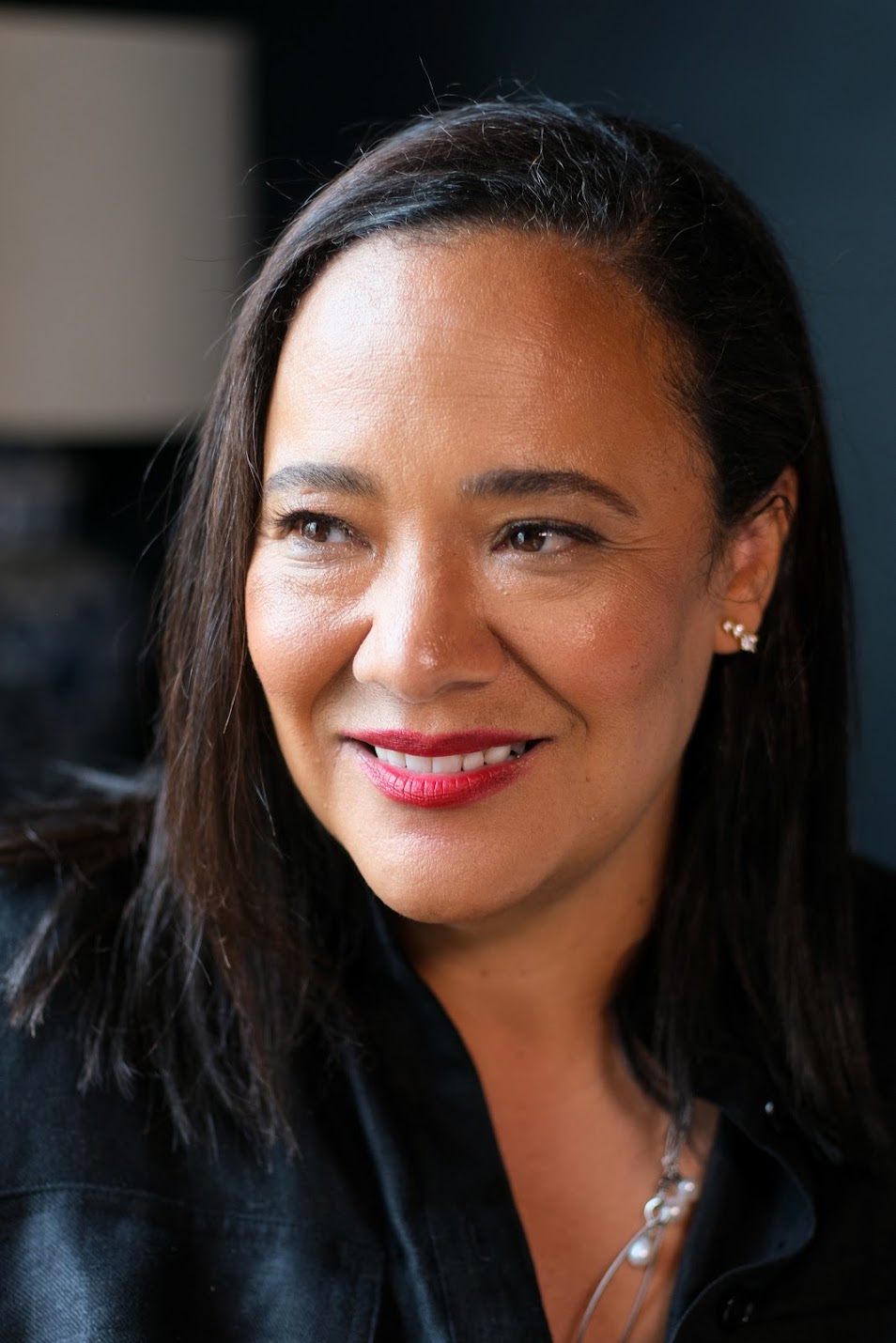
with
Grace Wales Bonner
Listen Now →

Charles Gaines
with Grace Wales Bonner
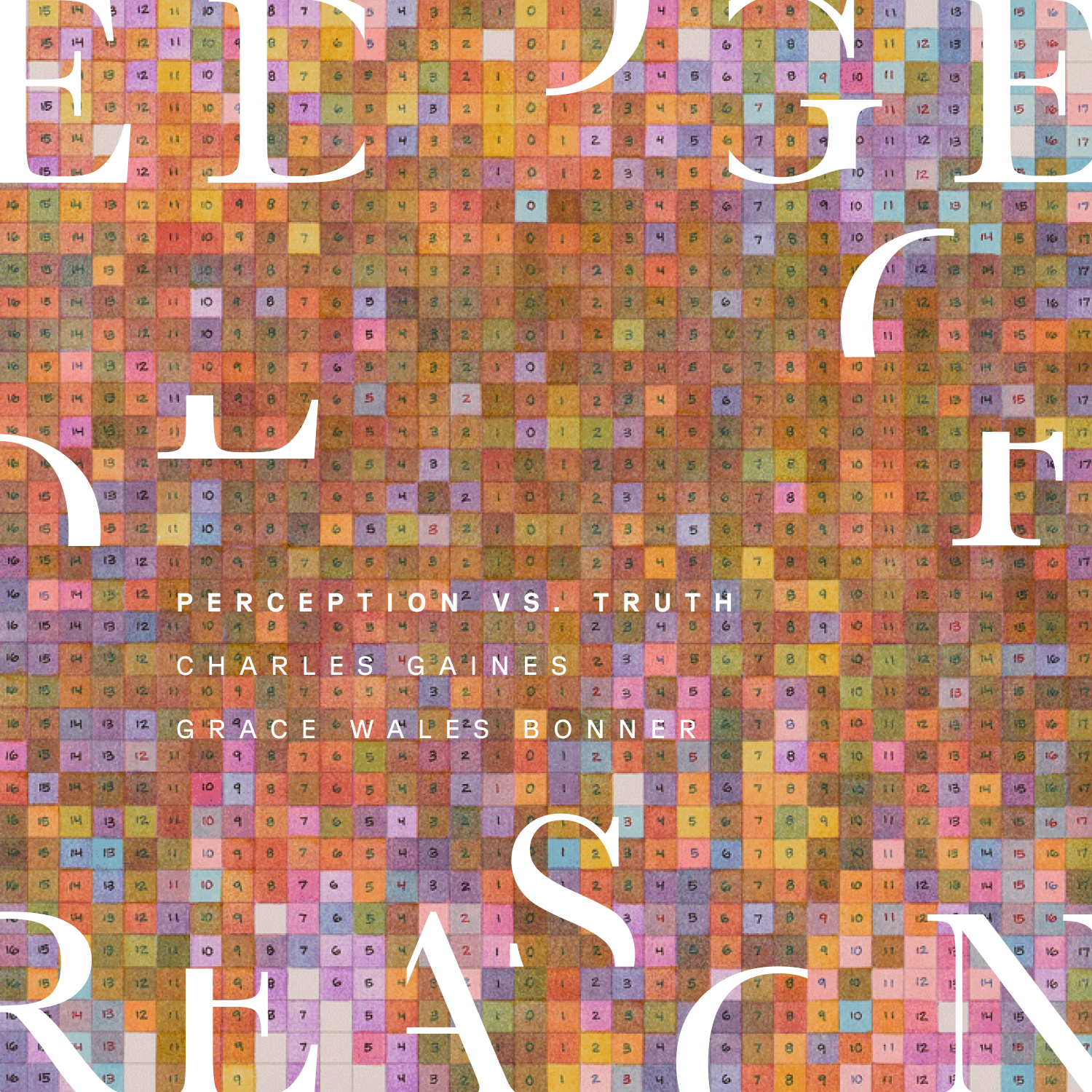
PERCEPTION VS. TRUTH explores how subjective interpretation and objective reality intersect, challenging us to question the blurred lines between what we see and what is real.
In this episode, artist Charles Gaines and designer Grace Wales Bonner delve into the ways in which subjective interpretation and objective reality shape our understanding of the world. Gaines’ conceptual systems challenge the notion of a singular truth, while Bonner’s fashion designs reveal the layers of identity and history embedded in her work. Together, they reflect on how art can bridge the gap between what we perceive and what is real, prompting us to question and deepen our relationship with truth.
Edge of Reason, Season 2 | Perception
SECTION ONE | THE THEME
Jeff Chang: In a world where the lines between image and reality, between perception and truth are increasingly blurred, understanding reality feels more complex than ever. For centuries, artists and thinkers have pursued this question: how can we represent the world in ways that get people to think and to feel? Today, we’ll explore the idea of “Perception” and “Truth.” A theme that challenges us to examine the ways in which artists reflect and reveal society. How do artists move their audiences to perceive the world and experience truth? How do they mold how we think and how we feel through the paintings, the music, even the clothing they make? Is a common shared truth even attainable? These are some of the questions we will encounter at the… Edge of Reason…
<< Theme Music >>
Jeff Chang: …a limited-series podcast produced by Atlantic Re:think—The Atlantic’s creative marketing studio—in partnership with Hauser & Wirth—a home to visionary modern and contemporary artists. This season, we explore the line where left brain meets right brain; where logic and reason end and creativity begins; and how personal and universally resonant themes—like “Perception” and “Truth”—connect art with the human experience.
Joining us on this episode are two visionary artists who embody this exploration. A pioneer in conceptual art, Charles Gaines uses systems and algorithms to challenge how we perceive reality. Grace Wales Bonner, an acclaimed fashion designer and visual artist, blends Afro-Atlantic aesthetics with European tailoring traditions, crafting garments that tell deeper stories about identity, race, and culture.
Together, they offer profound insights into how art can bridge the gap between perception and truth, leading us to a deeper understanding of ourselves and the world around us.
SECTION TWO | THE ARTIST
Jeff Chang: At 80 years old, Charles Gaines has had a long, storied, and multi-hyphenate career. He has made paintings of palm trees, the faces of multiracial people, and other objects that layer images upon images upon grids, as a way of showing us how we make order of points of data. But he is also an accomplished composer and drummer. His work challenges us to think about how we individually and collectively create truth and beauty.
Charles, welcome to Edge of Reason.
Charles Gaines: Thank you for having me.
Jeff Chang: I wanted to start with a question, actually, about growing up in the 1950s in the Black neighborhoods of Newark. You excelled at art and at music but some of your teachers, underestimated you. And I’m wondering, how did this shape the artist that you became and the way that you chose to make your art?
Charles Gaines: I was born in Charleston, South Carolina, and moved to Newark when I was five years old with my family. And we moved into a neighborhood that was almost all black.
But it was a neighborhood in transition. There was a high school called Arts High School that you can say was the first, high school dedicated to to music and art.
I got a really good education, but I had this feeling of being overlooked, which I understood later, to be a general feeling that black people have in a area or a neighborhood that they aren’t dominant.
And one of the things that was with me from a very young age is a certain curiosity about the way things come to be. A certain interest in the values and meanings of the social and cultural situation around me.
Obviously, the the most important of those questions was: Why am I black and why is there racism? Why are white people privileged and black people aren’t?
And I think that they, reflecting back on the past, they got me to, to believe that my general interest in the critical assessment—social-political assessment about my environment— was something that came out of that experience of: first, Jim Crow laws in the South and then the, kind of, de facto segregation that happened in the North.
And I read what those things meant, and it didn’t make sense to me. I thought it was completely unjust and unfair. And I wondered about how those things got put into place.
Jeff Chang: Mmm. I want to come back and ask you a lot more questions about how that drove you into conceptual art as opposed to other types of forms that your work might have taken.
But let’s bring in our guest right now, Grace Wales Bonner…
As one of the most exciting young fashion designers in the world, Grace makes some of the most beautiful and desired clothes in fashion, which reveal an attention not just to detail and fit, but also to the storied history of Black art and artmaking.
The details are often subtle— a monogram here, a stitching there, a detail from a Kerry James Marshall painting or an image by Sanlé Sory or an inspiration from a poem by Ben Okri.
Grace, welcome to Edge of Reason.
SECTION THREE | THE EXPERT
Grace Wales Bonner: Thank you so much for having me. It’s a pleasure.
Jeff Chang: Grace, I’m wondering, you know you grew up in in London in the 2010s—a much different time, a much different place. And as you’re listening to Charles’ story, I’m wondering how you reflect upon your own personal experiences and how that shaped your particular approach to making fashion and art that live in the world.
Grace Wales Bonner: Yeah, it was interesting hearing Charles and those were definitely things that I could relate to in what he was saying in terms of certain questions around identity and also thinking about systems and structures that can support or hinder expression.
So I grew up in London, and it’s quite a multicultural city. So I think that informs the way I think about culture and cultural expression. And, kind of, questioning also having a white mother and a black Jamaican father. I guess I was thinking a lot about representation, as well. But I think at a formative age then I started to, kind of, think about, for example, being Black doesn’t need to be fixed in any way.
I think my work has been very guided by showing a sense of its expansiveness and possibility. And I think I’ve also been gravitated towards expressions of beauty and elegance, which I guess I’ve probably grown up around. When I think about representation, a lot of what I think I do now is about connecting with history, connecting with a living archive and revealing threads that have always been there, really.
My work very much interacts with the past, but it’s looking to create a future reality. And I think that something that guides me is an exploration of beauty. And if I think about what I did growing up, I was seeking images. I was seeking images to confirm a sense of identity and belonging.
Even if if I was somehow dislocated, say, from family in in Jamaica, I think I used images as a way to connect to people.
Jeff Chang: The two of you recently connected to collaborate recently on Grace’s Spirit Movers exhibition at the Museum of Modern Art in New York City. And yet you all, the two of you haven’t had a chance to really sit down and and talk. So it’s an honor for us to be able to be here and listen in on this conversation.
We’ve begun talking a little about how perceptions shaped your identity, and how, in turn, these shaped your approach to making art. I’m wondering what you think of these words: “perception” and “truth” and how they show up in your work?
Charles?
SECTION FOUR | THE CONVERSATION
Charles Gaines: When I started teaching—university teaching— I developed a class that didn’t use those two terms, but actually speculated on those two ideas and how they related together. The idea that truth is a fiction.
But I recognized the problem with resolving those two concepts appeared in my work almost immediately because when I was in graduate school—Rochester Institute of Technology, as a painting major—I was immediately unhappy with ah the strategies and methods of making paintings.
And I queried that. It turns out that was the first time this question of truth and meaning appeared for me in quite a meaningful way because I saw that the idea of being a painter was a strategy and a methodology. To everybody around me, it was a type of existence. It was a type of being in the world. You know, it’s not something that is strategic or political or structural, but something that actually is an identity as a painter.
And I thought that if, well, I if I made paintings, based upon these kinds of assumptions they had about what a painting is and how to make one, I won’t be happy as a painter. Because I didn’t assume or absorb those assumptions.
The first thing was the assumption that what you make as an image is a product of your subjectivity. That subjectivity, which is invisible, materializes in some process of making into a concrete object in the world. And it was supposed to be a continuous relationship between that concrete object and the motives or intentions of its making, which are not observable. They’re they’re not empirical. They’re just mental or psychological. And I came to the conclusion quite early that the idea of being a painter is not a state of being, but it’s something that you learn to be. And I thought then that you can change that. You can change the terms of what it is to make a work of art.
I thought quite simply that a system can be substituted for my subjective imagination. So that when people experience the object and experience what the affects that the object produces, rather than saying those affects are somehow poetically a part of the creative imagination of the artist, they would have to know that it was a product of a system uh that I invented but yet have the same experiences that they would have had if I sat there heavily designing the work.
And I thought that strategy of using systems was in fact, a critique and and an analysis of the relationship between representation and truth. In this case, the idea of truth being a continuing fiction that we create, that culture creates around us as we move through life.
I’m not belittling that. I think that’s very important, but the idea of it being an absolutism is dangerous because I think these constructions of absolutism are a product of the colonial past.
Jeff Chang: Grace, working in the fashion world, you’re constantly upsetting these notions of what a designer is supposed to be about and producing.
How does perception and truth show up in the work that you do?
Grace Wales Bonner: I think I think with the way that I create, I often like to put myself really in in the background in terms of how I will communicate something. So I feel like I’m also resisting a sense of fixity in terms of how I would connect to uh a world.
And I think part of that is about inviting lots of other people into the process of creation. I think a lot about kind of multiple schools and perspectives or ways of seeing a lot of the time it’s about inviting people in whether it’s photographers or writers or connecting with something historical, revisiting it. It’s never about me person—my personal view of something. I understand that creation can come around through shared experiences. So i think I think part of my attempt to complicate things in a way or it just kind of show complexity is is is also interacting and collaborating with other people and often in the process, I might have a theme I’m researching or a collection I’m thinking about.
For example, I worked on an exhibition at the Serpentine Gallery in 2019 called A Time for New Dreams, which the title came from a collection of essays by Ben Okri.
I was really inspired by his writing of the wrote in the 90s, but then I reconnected with him. and he was such in a different place. So, you know, sometimes I idealize certain moments in time as well, but interacting with people, once you start to engage, everything becomes a lot more complex.
And I think I’m quite drawn to that–revealing the complications and revealing complexity through dialogue and collaboration.
Jeff Chang: Both of you strike me as artists who bring a lot of research and rigor to bear on your work.
And I’m wondering, why does this matter to you? When someone sees a grid painting by you, Charles, or wears a piece of clothing by you, Grace, they may not understand all the references and philosophy and ideas you have put into it. So what’s the importance of of research and rigor?
Charles Gaines: Well, I mean, this reflects on an issue that I’ve talked about in the past, too: that as part of our colonial education we’ve come to have an idea that the meaning of visual imagery, speaks for itself.
The clear-cut impact of how limited that idea is that as soon as you as you leave the history of Western European art, that as soon as you go into the history of the production of art in any other culture from the standpoint of Eurocentric or Western view—you don’t have any idea of what you’re looking at.
And so your immediate thing is to experience it based upon what you know, your learning. But, you know, that you’re inadequate.
And so the idea to to me is that rather than saying that art is constituted by a visual language that is outside of verbal language or critical thinking, you can say that a work of art is a combination of discourse and image.
And it’s always that. So if you’re involved in an art practice that you know is sort of bringing new ideas to the field, then that needs to be told. It’s not going to come naturally from the image. And the entire context of working with others becomes a discursive space that you have to understand in order to go beyond what you find most immediately when you’re looking at a work.
So it doesn’t bother me to then insist on various levels that we need to have a conversation about what you think that’s going on, rather than just looking at the thing and being pleased.
Jeff Chang: Grace, I see you smiling a lot.
Grace Wales Bonner: I mean, in terms of my own process - even my research process, which is kind of a grounding point to everything I do…I think actually I’m doing that more for myself. I see the research practice as a spiritual practice in a way because it’s very intuitive and pure. So I’m not necessarily doing that to even reveal it, there’s a lot of work that I do that’s very personal and not part of an artistic practice. I’m also trying to create the space to not have there always have to be an outcome to that process, as well.
Jeff Chang: And at the same time you are doing what Charles talked about // I think of your collections and the way that you are using it as a way to pull people into looking at Amiri Baraka or Ishmael Reed’s work.
That you, in your collaborations, are creating space for people to be able to enter into a different maybe kind of experience than one would normally get in in and the white art world.
Grace Wales Bonner: I share a lot of my I guess thought process research process and it’s to be transparent it’s to say that I’m not creating in a vacuum. Everything I do is very much related to her what’s come before and I just use that to be transparent about my points of reference.
And I don’t also think that someone that might want to buy a jacket that I design necessarily needs to know that. I, … But I have that available there. I think that kind of interaction is what motivates me to actually want to design. So it’s quite, it’s it’s personal. I need a lot of that context and understanding and connection, emotional connection to be motivated to to design. I couldn’t be a designer that’s purely focusing on aesthetics without the context of it. So I and i kind of understood that that’s what that’s kind of what I need in order to create. But at the same point in terms of what what I’m creating, that should really only be judged on the aesthetics, like it needs to function in a way that’s beautiful, it needs to be attractive and seductive. That’s how it should be measured. My own way of getting there is…is different.
You know, It’s personal, but yeah I want to be able to seduce and attract people through what I create purely on the merit of the design.
Jeff Chang: I’m struck by the fact of your generational difference, the difference in time and place in which you came up, and the differences in the kind of work that you make.
But you are also so similar in many ways. I’m wondering what each of you really admires about the other’s work.
Charles Gaines: What I admire about the work is that it draws in for me, you know, and not being really sophisticated to the idea of history of fashion, that the forms that these, these fashion objects, the forms and shapes that they make it when they’re on and off the body, reflects a certain social and cultural experiences that I don’t usually associate with fashion and do it so damn elegantly. I can’t, I can’t get over that these really, what I call them large or you structured shapes, they fall, when they fall— they fall on the body, they soften.
Charles Gaines: You know, I think that’s amazing. Just completely astonishing that that kind of transformation can take place.
Grace Wales Bonner: Wow, thank you Charles, big compliment. I think I really admire your intelligence and very methodical approach to creation, and that a very complete ideology that is felt very holistically across it through everything you do. I feel like I’m not someone that’s— I’m not the most articulate. I think I’m able to communicate much more through what I create, but I feel there’s a really amazing balance between your ideology and the consistency of the output as well, which I really admire.
Jeff Chang: Let’s listen to a sample of the work that Charles created for Grace, reimagining a score by the Black Fluxus artist, Ben Patterson. This is Manifestos 6.
Charles Gaines: I’m still ah curious Grace to what you’re thinking about bringing me into your project at MoMA, particularly, in terms of my performative work.
Grace Wales Bonner: Well, I think working on “Spirit Movers” and the a lot of what I was thinking about was this kind of translation of sound into other materials or artworks or experiences.
Your work and your Manifestos were very much in mind throughout the whole research process and thinking about this act of translation from one thing to something else. I think a lot of works that were in the exhibition were… had gone through multiple forms of evolution and had multiple lives. So I was really interested in your Manifestos and and your performances and how you get to the outcomes of the performance. And also looking at being so connected with MoMA’s history and photographic archive, a lot of what I was using to understand sound or performance was like the photographic archive, as well, so I guess interested to understand the kind of complexity of your work and the complications of it as well.
Charles Gaines: What I did it for that was a uh work where I translated the text of Ben Patterson’s music composition. So Ben, his compositions were written in…in words uh rather than musical notations and so I used the letters of that when translated those letters ah to musical notes and applied those notes to a system that arranged them in terms of melodies and harmonies.
The music is uh diatonic, so it has and is sort of a very familiar aesthetic sound to Western ears. And it has a sense of …a sense of organization, and that’s different from what you would think of a musical composition that was put together by chance because this is really, you know, the taking what’s given to you and organizing it. It’s really operating basis of chance. And so I kind of understand a little, Grace, that that the application of research that goes on in my work.
I can read in the way you dealt with that; your use of research in organizing the exhibition and the kinds of themes and associations and connections that essentially you discovered and through your research process. And it’s interesting that Manifestos is sort of uh another uh example of something that was intrinsic to a part of the installation itself.
Grace Wales Bonner: Mmmhmm. Something that I found really kind of powerful in the performance that you did at MoMA of Manifestos was that hearing the composition and seeing the score that Patterson had written, seeing those two things together gave me such a deeper understanding and connection to Ben Patterson’s work, as well.
Charles Gaines: Mmhmm.
Grace Wales Bonner: I had a very different perception and felt kind of understanding of it. I think we talked a little bit about that, as well, but I don’t know if you had anything to share about that.
Charles Gaines: My work is based in systems, but one of the reasons why I like working this way is because I’m always surprised by the result. That there is —Things happen in the process of forming these relationships between unrelated things. but In this case, it was text, the series of letters, and the performative space of sound and instruments that’s produced by that. The connection is to make a relationship between language system and musical system and layering them together in this format.
Generally, when I work like that, the process brings me to experiences that I could never have imagined and thoughts that i would that would never have occurred to me because I think our subjective judgments are limited by our experiences. And we need to find some way of, let’s say in the Olympics term, high jumping those experiences or pole vaulting over those those limitations. And I use a system to do that. And very much in the way that I think the Fluxus people used uh these kind of organized performative relationships to create these kinds of ah authentic experiences that would be new to the viewer and often to the artist too.
So, similarly, as I started developing that work and getting engaged in the writing and getting engaged in the quite different experiences of writing melodies…
Grace Wales Bonner: Yeah.
Charles Gaines …that combination gave me a deeper insight to the work, but also gave me an interesting uh moments in the work itself. Even this one section where Patterson and his musical score told people to lay the bass on the side and to tap it with their hands like a drummer, like a drum.
Grace Wales Bonner: Mmhmm.
Charles Gaines: And while that was going on, and there’s some pizzicato going on in the score. And of course, there’s this chance and an arbitrary coming together, but it somehow made it a really interesting point of how you know things that happened by chance are just as meaningful as things that happened by intention. And I think that that the way Ben was telling people to use a bass in ways that you would never use a bass, it’s the same kind of, you know, same kind of gesture.
Jeff Chang: We could talk all afternoon. I wanted to throw in one last question here and actually goes to a little bit of how you all think about the reception of your work. We’ve been hearing you talk a lot about your processes, which has been really illuminating and brilliant. I’m curious how you all think about what you’re trying to instill in the viewer or the listener or the person who is experiencing your work, in terms of perceptions, in terms of truth.
Charles Gaines: Methodologically Grace and I are a little different. Not a lot different, but a little different. So with respect to that, I’m i’m very much interested in pulling out the things of art-making that are part of our cultural language rather than our aesthetic language.
I think the aesthetic language is going to happen anyway because we’re working with visual forms. But there is this issue of taste where we’re determining whether that aesthetic language is interesting. And that goes on, and it’s very important. But I want to undermine as much as possible the notion that you know our discursive thoughts and our affective feelings and experiences are diametrically opposed to each other, that they are opposites. I want to sort of undermine that to say that they’re always working together, you know, to a greater or lesser degree depending upon the artist.
Grace Wales Bonner: It’s an interesting conversation because I think you definitely come from very different perspectives and have a different —very different process, in terms of what I’m creating, I think that I’m trying to connect with some sense of soulfulness, trying to think about how that could be embodied in into clothing. So it’s trying to create this translational—have ah almost a musical quality and into what I’m creating, which is quite an impossible challenge, but it’s something that motivates me.
So I think there’s a lot of feeling and emotion and tenderness towards either people I’m representing or a sense of care that I want to kind of transmit through what I’m creating in terms of clothing. So as a designer, I feel like there’s a real closeness and intimacy with with people in terms of creating something that’s worn so close to the body.
And so I think that that translation is quite emotional in terms of that translation into garments and this idea of almost devotion and craft and using hands, using repetition to create something. I think I want this kind of intention to be embedded in what I create. But I have a ah way of getting to that point, which is which is yeah also quite personal.
Jeff Chang: Well, this conversation has felt quite personal and intimate. Thank you both for allowing us all to listen in here on Edge of Reason.
Charles Gaines: My pleasure.
Grace Wales Bonner: Thank you very much.
<< Outro music >>
Jeff Chang: I’m Jeff Chang, and you’ve been on a journey to the Edge of Reason. Join us next week when we speak to Hauser & Wirth artist Mika Rottenberg and the author and theoretical physicist Felix Flicker to explore how the “Magic in the Mundane” drives their work.
If you enjoyed what you’ve just heard, Like and review on Apple Podcast, and help spread the word about our series to other listeners like you.
GALLERY
to see more
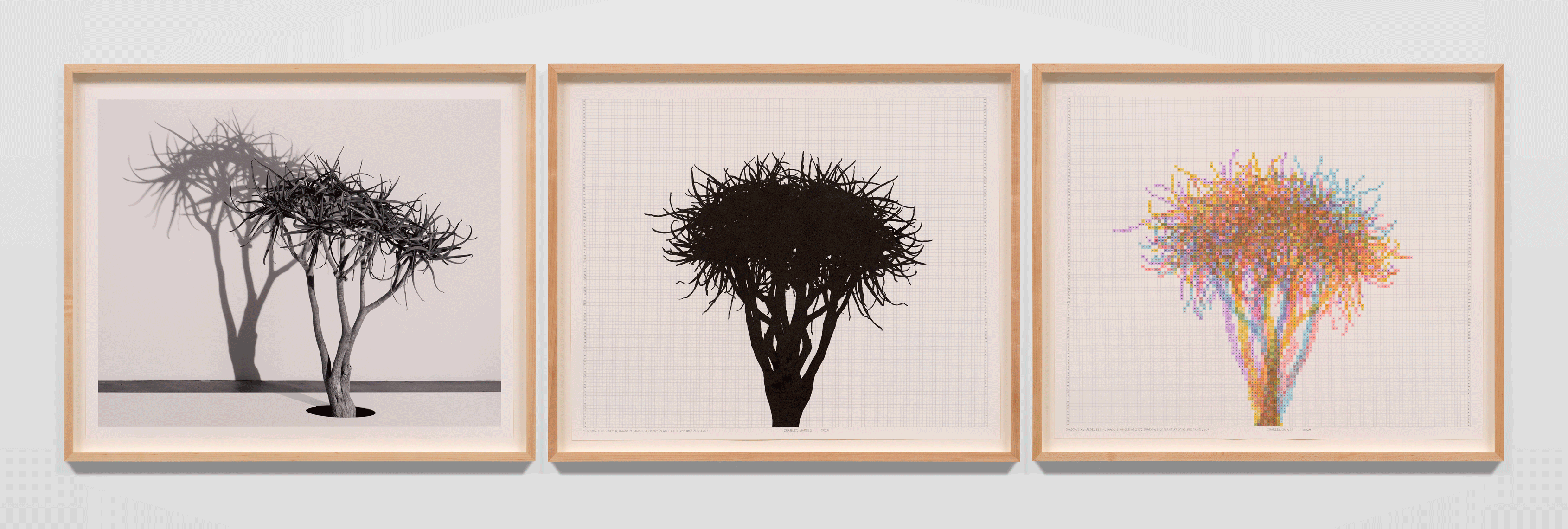
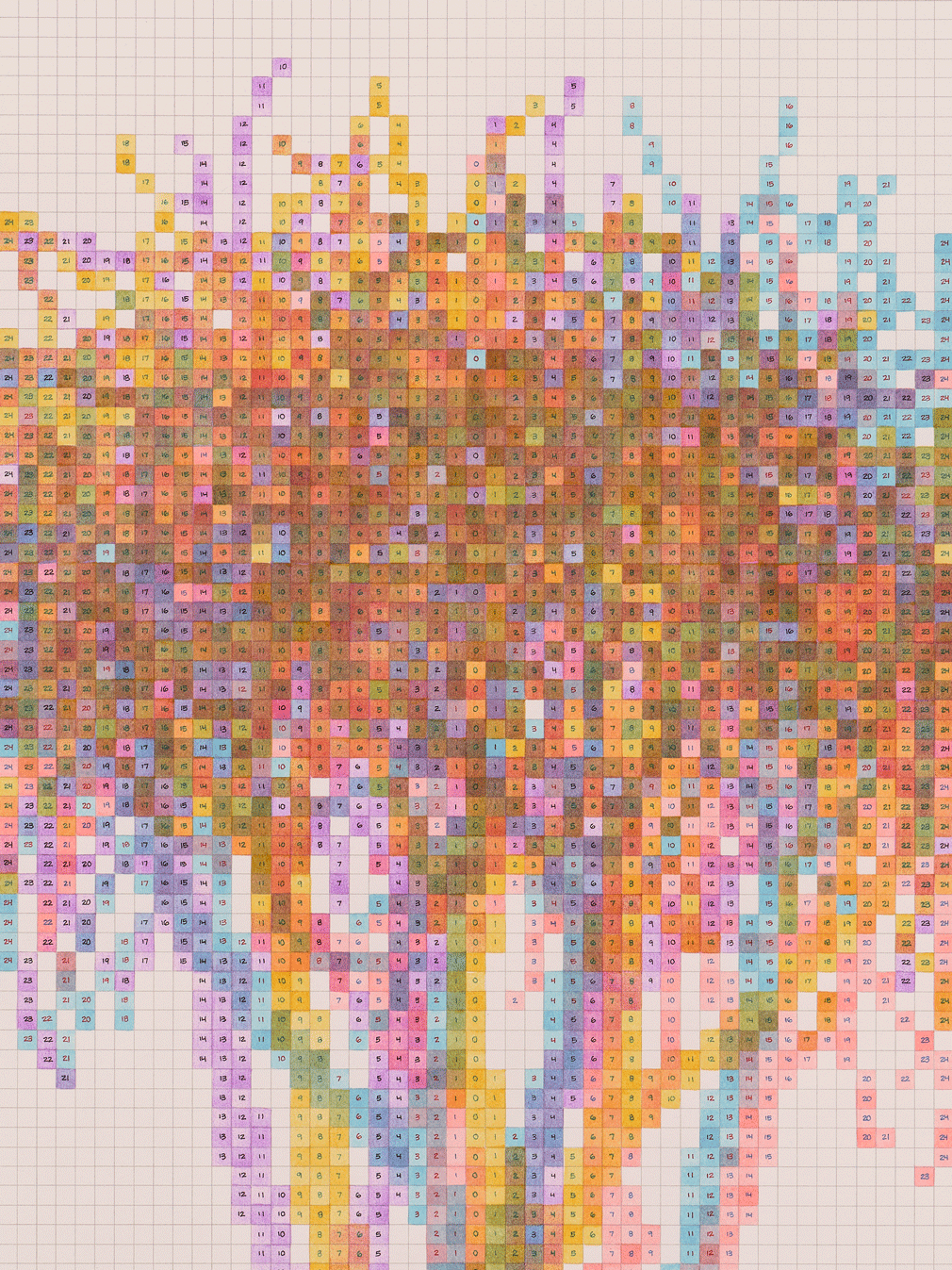
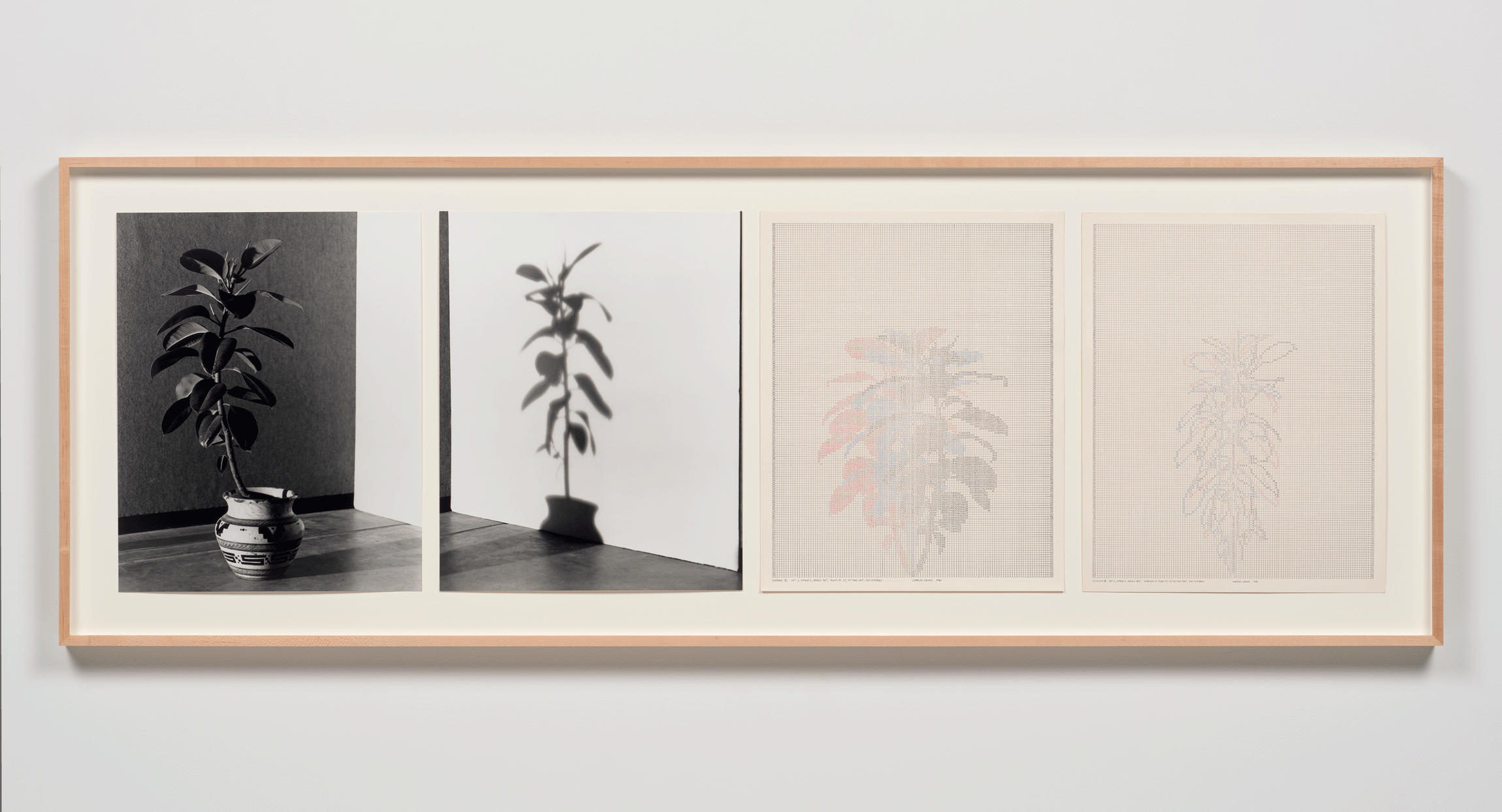
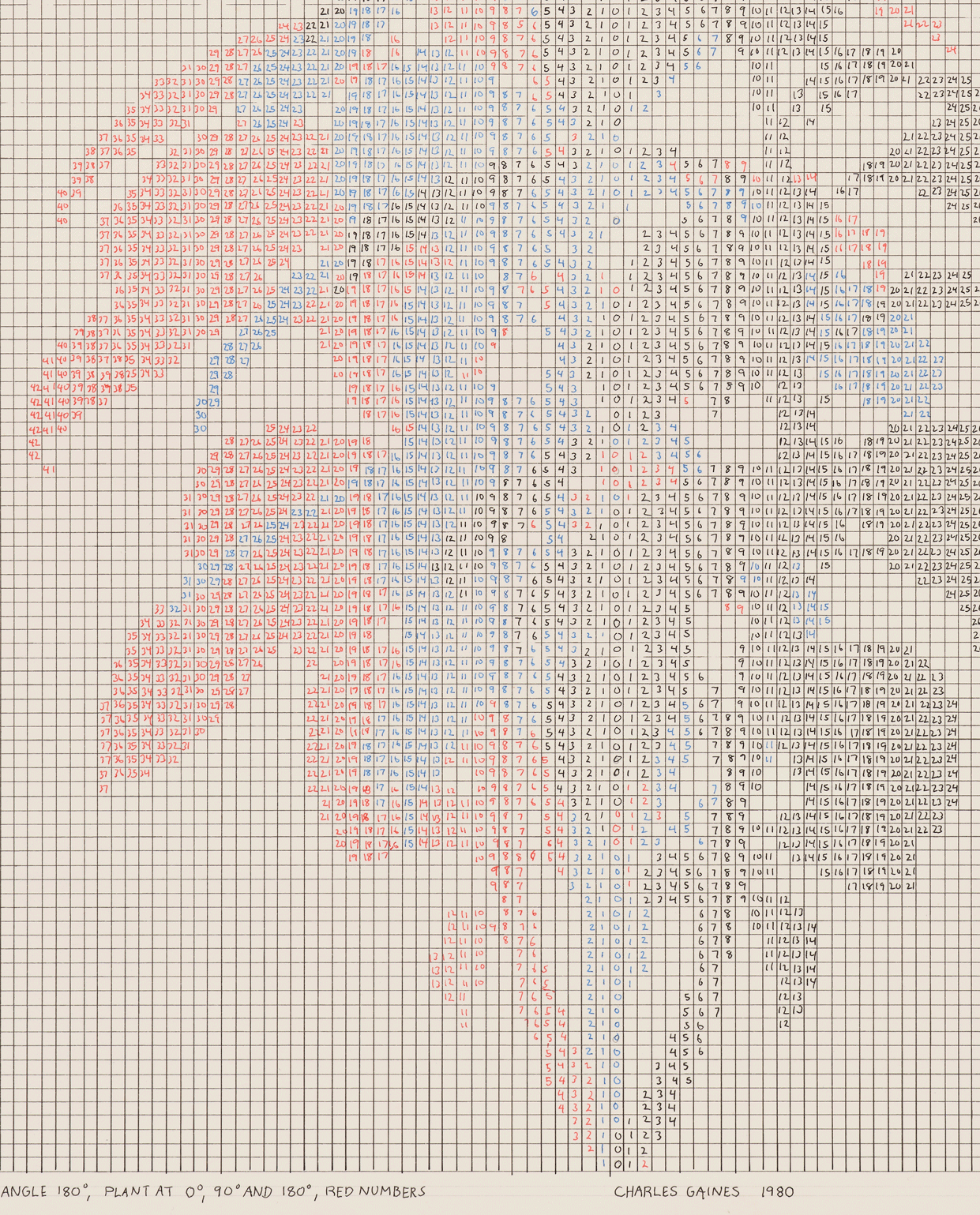
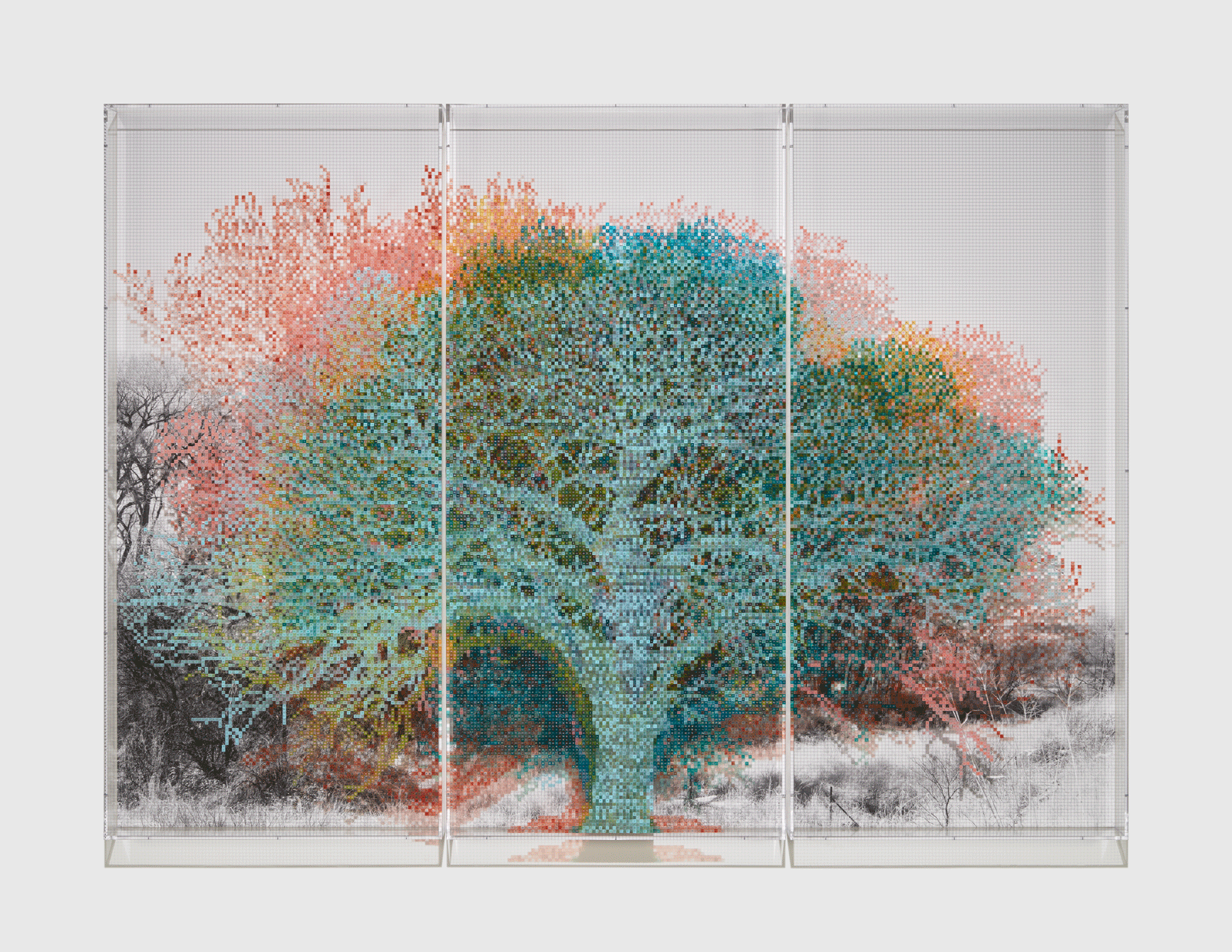













Our Voices
Charles Gaines is a pioneering conceptual artist known for his use of systems, grids, and algorithms to explore the relationships between perception, representation, and truth. His work challenges traditional notions of identity and objectivity, revealing the subjective processes that shape how we interpret the world. Through his multifaceted career, Gaines continues to push boundaries, blending art, politics, and philosophy to question the constructs of reality.
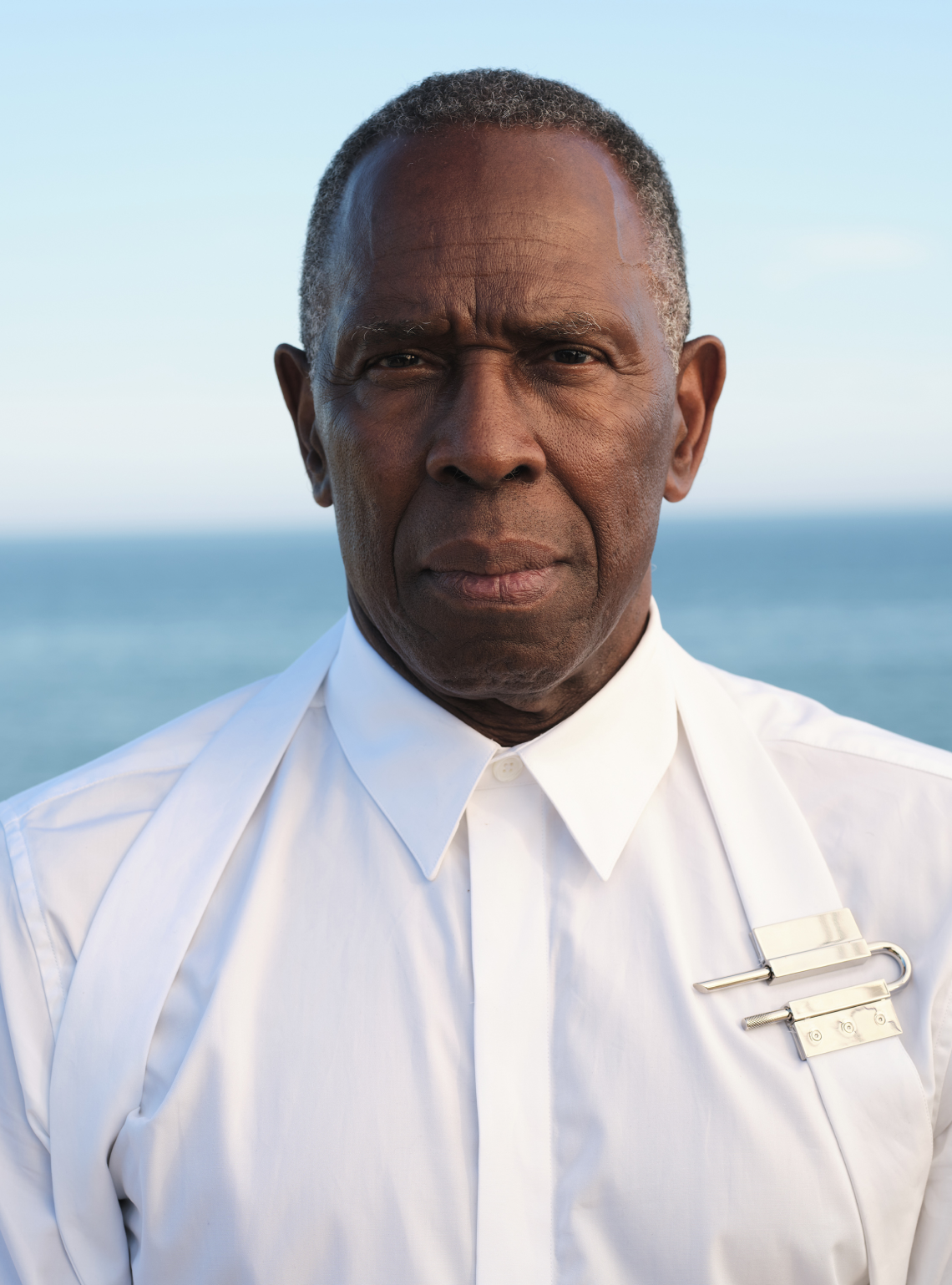
Grace Wales Bonner is an acclaimed British fashion designer and visual artist celebrated for her Afro-Atlantic aesthetic and intricate approach to storytelling through clothing. Blending European tailoring with global cultural references, her work explores themes of identity, race, and heritage. Bonner’s visionary designs challenge conventional notions of fashion, using history and artistry to create deeply meaningful and visually striking collections.
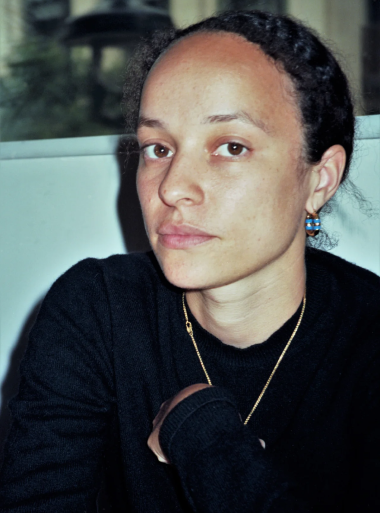
with
Felix Flicker
Listen Now →
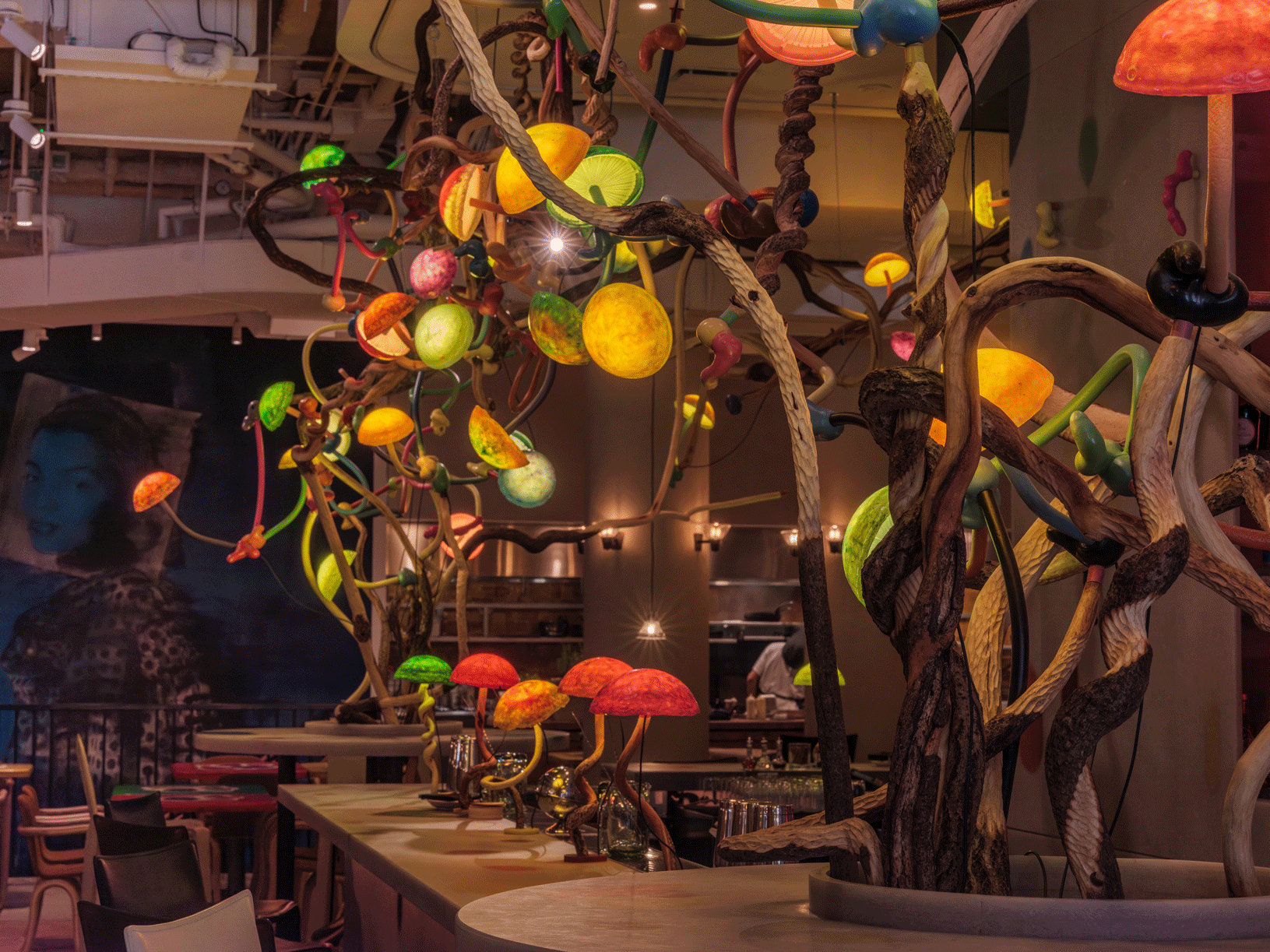
Mika Rottenberg
with Felix Flicker
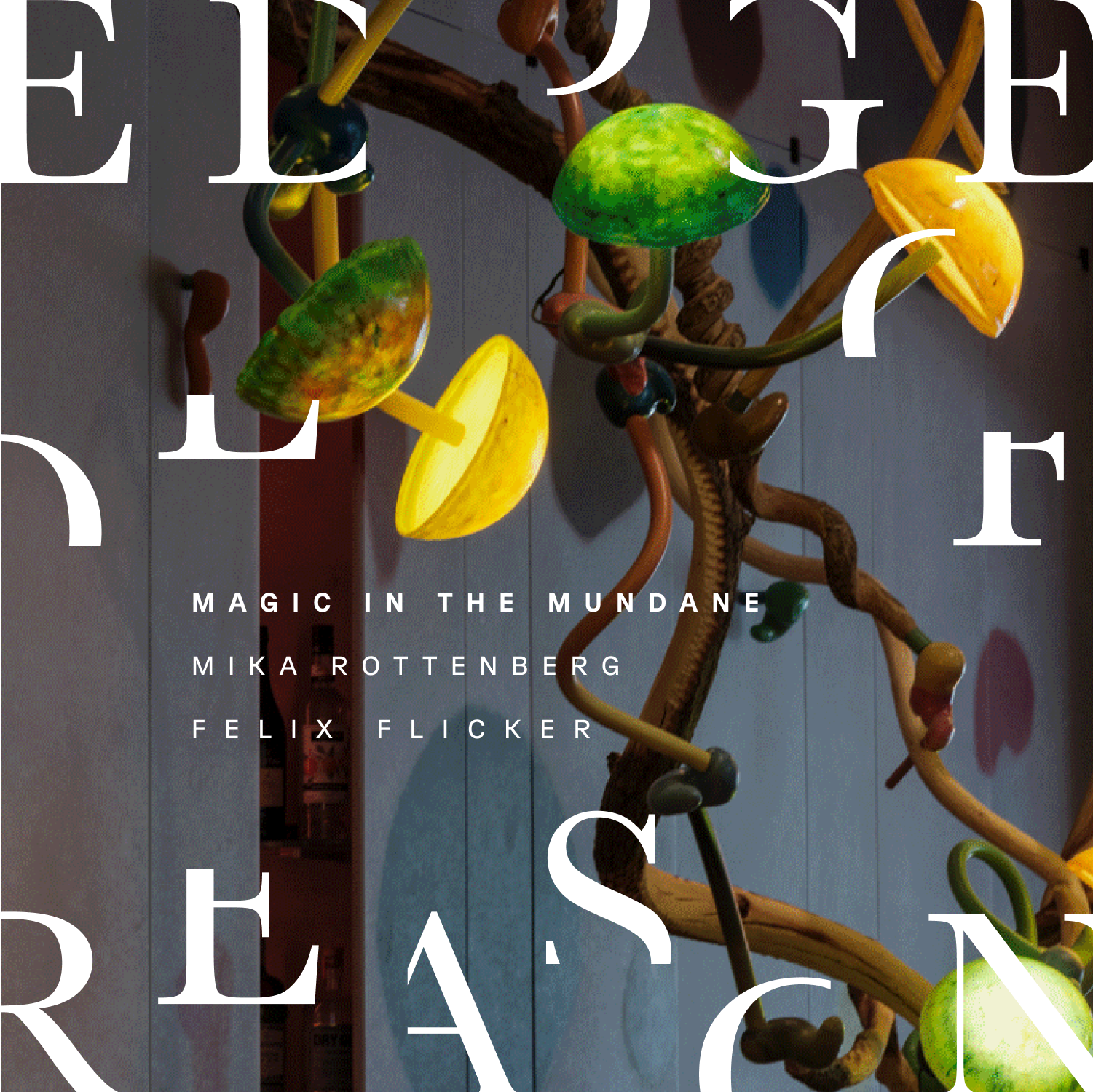
MAGIC IN THE MUNDANE uncovers the hidden wonders embedded in the ordinary, inviting us to rediscover the beauty of the world around us.
In this episode, artist Mika Rottenberg and theoretical physicist Dr. Felix Flicker delve into how art and science merge to reveal the extraordinary within the everyday. Rottenberg shares how her work transforms familiar materials, like waste plastic and bathroom tiles, into portals of unexpected wonder, highlighting the intricate connections between humans, their environment, and global systems. Dr. Flicker discusses condensed matter physics and the profound properties of common objects, illustrating how scientific curiosity can make the mundane magical. Together, they explore the balance between observation and participation, and how both disciplines encourage a renewed appreciation for the world we often take for granted.
Edge of Reason, Season 2 | Magic in The Mundane
SECTION ONE | THE THEME
Jeff Chang: The idea of magic isn’t only reserved for life’s grand moments. It can live quietly within the ordinary. Most everyday objects—a glass of water or a plastic lamp—hold unexpected complexities and beauty. When we look closer, these items can transform into portals, revealing surprising realities. And to understand this magic, we’ve continually turned to art and to science.
Have you ever seen patterns in floor tiles and felt like you might be glimpsing into hidden worlds? Or touched a metal fork and thought about the particles moving inside of it, keeping it solid? How do artists and scientists tap into this childlike wonder to reveal the extraordinary in the everyday? Join us as we explore these questions and discover the magic in the mundane…
…here on Edge of Reason.
<< Theme Music >>
Jeff Chang: …a limited-series podcast produced by Atlantic Re:think—The Atlantic’s creative marketing studio—in partnership with Hauser & Wirth—a home to visionary modern and contemporary artists. This season, we explore the line where the left brain meets the right brain; where logic and reason end and creativity begins, and how personal and universally resonant themes connect art with the human experience. Today, we’re joined by two creative visionaries who help us find wonder in the world around us. Mika Rottenberg, an artist known for her work in video, sculpture, and installation, transforms the everyday into something remarkable, using familiar objects and settings to explore themes of labor, value, and our connections with the environment, the global economy, and one another. We also welcome Dr. Felix Flicker, a theoretical physicist who specializes in condensed matter—studying how the ordinary materials around us, like metals and crystals, hide extraordinary properties that allow us to look at the world with fresh eyes.
SECTION TWO | THE ARTIST
Jeff Chang: Mika, we’re thrilled to have you here on Edge of Reason.
Mika Rottenberg: Thank you for having me.
Jeff Chang: I wanted to start by giving listeners an idea of the narrative and emotional breadth of your work. You’ve created videos. Videos featuring elaborate, seemingly purposeless machines maintained by unseen labor, a Chinese restaurant that serves up miniature businessmen tied to underground economies of the U.S.-Mexico border, and a feature-length film in which portals connect women around the world in the near future.
You’ve spoken about your fascination with “how we are made of materials and how those materials consume us as we consume them.” Can you recall when this fascination began—maybe even a moment from childhood?
Mika Rottenberg: You know, I have this one moment, looking at my grandma’s bathroom tiles. I would actually lie on the tiles and just, you know, like you find in the clouds, like shapes and stuff.
I just have a memory of finding like whole little worlds in it. And I love to make little holes, too. I’d like, I can play like dentist or something and like, uh, you know, dig little holes. So, you know, that’s kind of one moment,
I think I was always interested in mechanization, but I wasn’t the kid that was like fixing anything; it was more like breaking down and gluing it to stuff.
Yeah, just, just the way things work the way things are, but from a total, like poetic astonishment, uh, never from a kind of scientific or, or that kind of aspect.
Jeff Chang: Your work uncovers ideas about production, value, and the circulation of materials and objects—which are ideas that seem to me, to be closer to economics than physics.
So, I’m curious to know what drew you to visit CERN, the European Organization for Nuclear Research in Switzerland—a kind of mecca for particle physicists.
Mika Rottenberg: I was researching for a new piece, and I wanted it to be about matter. It’s a big topic, right? But kind of thinking about materialism, both philosophical theory, and also capitalism, and New Materialisms, was a book that I was reading that I was really into. My work has always been about all these hidden forces, uh, in objects and, and things that we, uh, interact, uh, I think I say that we consume and in return consume us back, but like, I don’t know where, you know, who consumes who first.
And then I’m also really fascinated by machines, as I said, um, and scale. So I was really into this is like the biggest machine ever made to find the smallest particle that ever observed. And this whole piece Spaghetti Blockchain is about, um, scale in a way. So it kind of made sense that to go there, and then apparently, they do have an artist residency. So I ended up doing that, which was great.
Jeff Chang: So you have a show that was inspired by your time at CERN and the work you got to witness around the Large Hadron Collider that you called Antimatter Factory. And I’m wondering if you could you share how pieces in the show, like Spaghetti Blockchain, were influenced by your experience there.
**Mika Rottenberg: ** I think I look at things from a kind of visual surface value, and surface doesn’t necessarily mean uh flat, but it could, I kind of knew how the machine looks like. And I knew that the Higgs Boson, that thing, there is no shape to it. Like, I won’t be able to see that.
Jeff Chang: For context, the Higgs Boson, often called the “God particle,” is theorized to be the fundamental particle responsible for giving mass to all other matter in the universe. And its discovery at CERN in 2012 is considered one of the most important achievements in modern scientific research.
Mika Rottenberg: I was blown away that they put tinfoil on everything. Cause I think this is like more for like, uh, math labs or, uh, artist studios and stuff. So I was amazed that they actually put tinfoil from the supermarket on, on these tech machines. That was a revelation.
Jeff Chang: < laughing > Ok, now let’s bring in Dr. Felix Flicker, a senior lecturer in physics at Bristol University and author of The Magic of Physics: Uncovering the Fantastical Phenomena in Everyday Life. Through his work, Dr. Flicker helps us deepen our appreciation for the beauty embedded in the familiar.
Welcome to Edge of Reason, Felix.
SECTION THREE | THE GUEST
Dr. Felix Flicker: Thank you for having me.
Jeff Chang: Felix, I wanted to start with the same question that I asked Mika: was there a moment, maybe in childhood, when it was clear, “Oh, Felix is going to be a scientist”?
Dr. Felix Flicker: There was no particular moment, uh, I basically always wanted to be a scientist since I can remember.
I definitely, by the time I was four, which is about as early as I can remember. I liked the equations, the kind of the weird symbols for things, you know, they’re sort of like magic spells, you know. When you’re four, you don’t know what they mean, but you kind of know that they have some power to change the world. And they, they look kind of cool, basically.
Jeff Chang: So now you work in condensed matter physics. What is that and how does it help us to see the magic in the mundane?
Dr. Felix Flicker: So it’s, it’s the study of the, just the stuff around you basically—matter—like solids, liquids, and gases, but it’s also the working out of how the stuff around us comes about through the really quite strange world of quantum mechanics for individual particles like we have these elementary particles like electrons and protons and things, and those things behave really weirdly. Um, but somehow they add up in, in a lump of matter to give you like mundane stuff that you wouldn’t really, you know, value typically, but it’s got that kind of magic hidden within it.
So Mika mentioned something really interesting, which was, I hadn’t thought of it this way, but so CERN is using the biggest machine in the world to look at the smallest things in the universe.
It’s like with astrophysics, say when you’re looking at like black holes, or you might be like doing cosmology and looking at the whole universe, there’s something inherently quite like exciting or magical about thinking about the biggest possible things. They’re very different to your, like, everyday world.
Um, and then there’s also something similarly magical about thinking about the smallest possible things, like the individual particles; there’s something very different to our everyday world. But then the matter that’s around us, you sort of think, well, that’s a bit mundane. You know, that’s a bit boring because it’s, I’m familiar with that. My entire experience is like lumps of stuff. So it’s sort of not got that magical appeal.
So I wanted to try and explain why studying lumps of stuff around us is, is actually, I think as magical as, as like looking at the extremely small and extremely big, but that’s what it is essentially the world around us. The familiar world, but, uh, how it comes about from this unfamiliar world that’s kind of hidden beneath.
Jeff Chang: How would you summarize what you do as a theoretical physicist working in condensed matter for someone like me who flunked physics?
Dr. Felix Flicker: Oh, well, so as a theoretical physicist, I mean, it sounds very fancy, but all it means is we don’t actually do any experiments.
Then a condensed matter physicist would specialize in matter on various different scales, and experimentalists would come to us with results, and we try and work out what’s going on by thinking about like what the particles are up to basically.
There’s a kind of catchphrase for it, I suppose, which is that the whole is more than the sum of the parts. I think that’s the simple take-home message. So it’s like, it’s made up of these individual particles that are individually weird, but when they come together, they make something fundamentally different to those particles.
So it might be like, you know, you can take a load of water molecules, and you can stick them together, and they make water, but they could also make ice. And that’s very different to water. So there’s something more than just the individual molecules there. And that difference is the thing that we’d like to study.
SECTION FOUR | THE CONVERSATION
Jeff Chang: Mmm. Okay, we have the artist and the theoretical physicist— and it’s time to bring ya’ll together in conversation.
So, to get us started, I’d like to ask: what role does curiosity play in each of your work?
Mika, I know you’re drawn to finding hidden worlds in everyday objects, while Felix, you’ve written about the magic in things like crystals and clouds. Where does curiosity begin for each of you, and how do you choose the materials you want to explore and work with?
Mika Rottenberg: I’m not sure if it’s curiosity because I seem to be very curious or gravitate to certain things, and certain things I’m not, you know? I feel like my brain is very like a single track and there’s like something that is in there, um, and, and I think there’s, it’s movement maybe that I’m really fascinated by. And, you know, I love that. I think it’s physics in general—there’s so much movement, right? It’s all about, kind of, movement, uh, between these particles.
I think it’s more gravitating to certain things, and that might be forces and movements and something like that, and then getting really curious about that. Uh, yeah.
Dr. Felix Flicker: I agree. There’s a sense that you feel like you’re supposed to be generally curious about the world but in reality it’s more like there are specific things that I get obsessed with, and then neglect everything else.
Mika Rottenberg: Right.
Dr. Felix Flicker: Uh, and then it’s a very strong obsession. But I’ve never worked out exactly what it is that is the underlying thing that links them.
Jeff Chang: Felix, I love what you said about the specific obsessions that drive us, that pull us toward certain forces and ideas.
Mika, your work seems to reflect that same sense of focused fascination—especially in your time at CERN, where you were surrounded by the world’s largest machine studying the tiniest particles.
How did being at CERN in that environment, observing physicists working with antimatter, influence your practice and thinking about your art?
Mika Rottenberg: I wasn’t so much observing them because I think it’s the machines that spit out data, right? And then they look at it. So I was looking at the machines. Which most of them are magnets, right? Like the, all the mass is basically the magnets. You know, I’m a visual artist or how it looks.
I don’t know if it’s to my practice, but it was amazing the mystery that still remains, you know. I don’t know, it was like non-scientists. You think all scientists may, they know exactly what they’re doing or that. Or like you think, oh, economists like bankers know how the economy, like nobody knows, you know.
Dr. Felix Flicker: I agree.
Jeff Chang: Maybe that’s where the magic is, right?
Mika Rottenberg: Yeah, exactly. That’s where the magic comes.
Jeff Chang: It’s interesting how you both touch on this idea of ‘not knowing’ as part of the work, right? As part of the process. How each discovery adds to a larger understanding, even if the full picture is still kind of out of reach.
Mika, do you ever feel that kind of uncertainty in your own work? I’m specifically thinking about your most recent work, which is a departure from video. Now you’re making sculptural lampshades that look like elaborate mushroom forests, and you’ve made them by repurposing waste plastic from detergent bottles.
What was the genesis of this? How did this begin for you?
Mika Rottenberg: This is from one hand, pretty new to me because I usually make, uh, you know, videos, and I make a lot of stuff for the video. So I make the sets and all that. So it’s not that different in terms of the practice,
I decided that now I’m gonna, like, zoom into a material. I wanted to use a material that I have a different kind of relationship with. Uh, and I wanted to, uh, all of the work explores modes of production in a way, the way things are made. So I wanted to not necessarily just reflect on that. I wanted to create my own very small, small-scale mining operation. So we kind of mine, uh, the streets for, for what is like natural resource at this point, which is the plastic and, make stuff from it
And you know, we’re doing it because that there is no recycling in the U.S. hardly— it’s a failing system. And it’s, uh, it doesn’t work. It’s not, you know, the people that should be doing it is the people that make these stuff, you know, it shouldn’t be me, but no, they, they’re not doing it.
I like the, the metaphorical, uh, kind of, uh, alchemy in a way in it is that, uh, you take something and what it is, it’s, it is fossil fuel is it is like ancient life in a way it is a natural material, uh, that is just cannot go back.
Jeff Chang: This material has traveled from ancient life into fossil fuel into everyday plastic. It’s fascinating because plastic, unlike water or ice, which can shift between forms, these materials are reaching a kind of end—like an Anthropocene endpoint, if you will, where consumers just discard it, and it becomes waste that can’t go back into the ecosystem. But you’ve turned it into a source of wonder and awe.
Felix, I wonder what all of this means to you, what it stirs up in you.
Dr. Felix Flicker: Historically, there was this idea that scientists like, uh, study the world that is sort of separate from them so that’s like this idea of objectivism, I guess, right. That, like, you can affect the world and it doesn’t affect you back essentially.
I’m not sure if that was ever true really, but now I think there’s a kind of move towards—we’ve kind of deconstructed the world and understood the, the, the elementary particles, like with the help of CERN, the Higgs Boson being the, the sort of last piece of the puzzle in the standard model.
So now I feel like the, the task is to sort of put that all together and say, okay, we’ve understood like breaking it apart, but now we need to understand that we’re not separate from the world we’re studying—it’s affecting us, and we’re affecting it. And I think there’s sort of deeper kind of environmental consequences for that mindset, right?
We’ve, we’ve gone from this idea— not even that long ago— that the world is, is this thing that we can draw things from and it doesn’t affect anything else. So we can, we can take petrol out of the ground and all these things. I think it’s kind of similar to what you’re saying about it’s, um, it’s a very one-sided thing, but you need to acknowledge that, uh, you’re, you’re affecting the world by doing that. And the world is affecting you in the process.
It might be a bit of a lofty idea, but I like to think that condensed matter physics is a kind of a—you naturally can’t separate yourself from the world. Matter is always on like a human scale in a sense, like you’re made of matter, and it is familiar and there’s a, there’s a reason behind that.
So you have to kind of acknowledge that you’re part of the system you’re studying. You can’t really isolate yourself and pretend you can take stuff from the world without it, um, without having a sort of deeper consequences, I guess.
Jeff Chang: So Felix, I’m curious how this changes the way that you approach the questions you’re interested in? I was struck earlier because I had assumed both of you started with objects and moved towards a process to make those objects. But it sounds like you both begin with questions and a process, and then you let the objects emerge from that or the insights emerge from that.
Dr. Felix Flicker: You have to be kind of obsessed with doing the day-to-day work because otherwise, you know the amount of work you have is a lot more than like a working week so, it has to be like your hobby and your job as well. So the actual doing of it has to be the motivation, I think.
So, like, if I give an example of something we’re thinking about right now,
There are these kinds of particles that can exist that aren’t individual particles. They come about through the interactions of other particles. Um, we’re even debating now amongst ourselves, if these things are really particles or not, we’re not certain about this, but they’ve got some really cool properties.
Mika Rottenberg: But when you say it’s a different kind of particle. Can you explain, like, how did you make it? And do you mean, like, the way it’s organized? Like, uh, what do you mean by that?
Dr. Felix Flicker: Yeah, this is the thing we’re probably the most interested in in condensed matter.
So, as like an elementary particle, you have light, and we call it a photon. And a particle is also a wave at the same time, so light is a wave, but you can describe it as a particle.
And you can think of it either as waves of light coming out or a stream of individual particles. So, inside materials, you can have these particles that just couldn’t exist by themselves. So, like, light can exist by itself. But you can’t hear the sun because sound can’t travel through a vacuum,
But when you have something, it can travel through, like a metal, say, then sound can travel through it like a wave. And that’s the usual description, but you can also perfectly well describe it as a stream of particles again.
And then those things are called phonons rather than photons. You can’t, like, look for phonons at CERN because, in a sense, they’re just vibrating atoms.
But mathematically, they’re completely equivalent.
Mika Rottenberg: Everything is a vibration in a way, you know?
Dr. Felix Flicker: Yes, you could say that, I suppose. That’s, uh, one, uh, unique way to put quantum field theory, I guess. Everything’s a vibration.
Mika Rottenberg I think about, in a way, my videos more and more as evoking these kind of, vibrations. Uh, and it can be like vibrations and like connections in your brain or on your body, like at the ASMR-y kind of.
‘Cause it is on a human scale. Like how we are that magic. You know, all these things that you’re, uh, describing are in us. They’re not something we observe. It is how we’re made. And there’s like a kind of a fundamental principle in it
So I don’t know, as an artist, I think you often try to map your existence too, in one way or another, you know, within these systems,
Dr. Felix Flicker: There’s this um thing there’s a quote from uh from Alan Watts where he’s saying something like people have this relationship to the world like an apple to a tree. Cause you, you think you’re separate to it, but really, well, you’re breathing in air and then like that, the molecules become part of you.
And then you breathe out, and you become part of the air, and like the apple, it’s not really part; it’s attached to the tree, and it’s come from the tree. And it’s, it’s like exchanging stuff with the tree, and you sort of think, well, they’re, they’re similar, but then when the apple drops off the tree, then you’re like, Oh, they’re totally separate things, but that’s a very strange way to look at it really. And it’s also strange to think you’re separate to the world.
Mika Rottenberg: Right. That’s why I also love these things like nails and hair and all that, because it’s like, where do you end …and like the world begins.
But, I guess you, you mentioned how that kind of way of thinking, that we’re not a separate thing that we observe that we are part of that. But how does that way of thinking change, uh, physics?
Dr. Felix Flicker: In the early 20th Century, say, we kind of thought we could isolate systems, study them independently of us, and we were breaking things down into individual particles. Then, in like the ‘50s/‘60s, we got complex enough in our calculations we could start considering lots of things together.
And I think there’s like a natural progression as we sort of build things back up. And we stopped trying to be reductionist; in that sense, we’re instead looking at how things behave collectively. And then that really links up to other stuff like economics or, you know, big-scale systems that you could study.
Like, the Nobel Prizes this year have all gone to these AI things. Two of them were really condensed matter physicists that are doing that. They were studying condensed matter physics systems that, uh, then turned into this modern understanding of AI because really you’re looking at like collective behaviors of things, and they don’t have to be like molecules making liquids, say, it can be information that’s combining.
Like you said, Mika, it can be like humans who individually don’t really know what they’re talking about, but collectively the end result is programmed.
Mika Rottenberg: That’s like…I’m fascinated that you could look at how matter is. And then from that movement, like kind of analyzing that movement. Then you could conclude how language works.
That is so, it’s amazing that there is like, uh, this code in anything, in everything,
Jeff Chang: Mika, I love that idea of a code that runs through everything. It makes me wonder—do you see that ‘code’ as a link between the exploratory work of art-making and the proof-seeking work of scientific research?
For our listeners, I think they’d love to understand how you process the similarities and differences between these worlds of art and science. How does what Felix does and how he thinks compare with your own process and your own practice?
Mika Rottenberg: I guess it’s similar to art in a sense that I got to prove that this is interesting to other artists and viewers, I mean, I could still do it and it could actually be great work of art, and they just don’t get it, which is the same as for an experiment. But, uh, I don’t know how you prove that a piece works, you know.
I’m working on a new film now, and it has all these elements and all these connections, and I work with the collaborators. So we talk a lot about these things in the sense but it’s our way of making sense of the world. And, you know, it’s been a year of trying to make sense of it.
And then, when you make it, people get a whole other sense from it. Of course, they want to know what your sense is, but hopefully, they get their own story from it, and I don’t have to explain to them because, for me, that’s a failed piece. If I have to explain to them if they don’t have an experience watching it.
Jeff Chang: This has been an amazing conversation; we’ve explored how the ordinary world holds mystery and magic, from simple materials to cosmic forces. For this last question, I’d like to bring us back to the idea of finding magic in the mundane. Every day, we encounter countless familiar things that pretty much go unnoticed, but your work shows that these objects have stories, have mysteries that we’re still beginning to uncover. Do you see yourselves as discoverers, as folks who are inviting others to view the world with fresh eyes? Dr. Felix Flicker: < laughing > I feel like I’m just trying to point out that this subject exists. So it’s more like other people have done the showing by and large. And I’m just saying, Hey, you should notice that.
I do think there’s quite a, yeah, there’s a magic in the mundane, I guess. There’s, uh…I think people should like, appreciate the stuff around them.
I was in the desert. In America, actually. And uh, I was talking to this magician there who I bumped into— I didn’t know him— and, um, I asked him if he knew this English magician called Deron Brown, and he’d heard of him. He said he thought he was like the best magician in the world, which was cool. And so he used to have a TV show in England that was very exciting and I said I, the reason I think this guy is is the best magician is because he like makes you believe in magic again.
Cause, uh, he does these tricks and he sort of says, well, it’s, it’s based on like psychology, and he does kind of like mind tricks on people that makes them behave in strange ways and this kind of thing. And you think, “Wow, we know so little about our brain.” And of course, you know, we really don’t know a lot about our brain, and it’s so bizarre cause it’s, it’s our entire existence and that, and you can do all these tricks to it.
But with more time, you start to see that a lot of his tricks he’s doing are really just like standard magic tricks because he framed it in this way that made it, you know, he made you believe in the magic again. So you sort of fallen for the trick.
And I guess I came around to thinking that’s kind of what we do in science. Like when you’re young, the world is just magical. Like children do just sort of pick up random objects in front of them and find them, like, intriguing. And then when you get a bit older, you start to think, well, I kind of understand that I don’t need to, like, pick up these random objects and inspect them in detail because I’ve got a, a basic idea of how everything in the world works. So you kind of lose that sense of magic.
But then scientists devote their lives to studying those things that are right in front of you so they must be seeing something magical again in it. So I think that’s the trick to try and return to that sense of wonder you had like when you were growing up. But now with that understanding you’ve got when you became an adult. So you want to like get that bit but still find it magical again. So I guess i’m trying to point that out to people.
Mika Rottenberg: That’s really great. I mean, I love that the more you know, like the kind of more like actually back to being naive, you could be…or not really, but like charmed, you know.
I was also thinking a lot about, uh, magic also as a, from a psychological perspective, like also like a pre-verbal state, uh, where, you know, this lack of separation between the self and the world. So there’s that rapture at some point where, like, I think it’s like mirror stage or whatever, that you understand that you’re separate from the world, uh, you can affect things.
And until then you think that you have this magic thing. So I like to think about the way I make the work from that to this pre-verbal, pre-, kind of, separation space, you know, which in a way is magic. Because that’s what magic is, it is like this belief that you could affect things just from your mind, meaning that you’re one with it.
And then to look at it also from the physicist’s point of view, which is, in a way, that kind of magic. Which is similar because again, it’s, uh, that we are all part of the same system and the same kind of principle and the same kind of movements.
<< Outro music >>
Jeff Chang: I’m Jeff Chang, and you’ve been on a journey to the Edge of Reason. Join us next week when we speak to Hauser & Wirth artist Glenn Ligon and multi-hyphenate artist Solange Knowles to explore how “Multiplicity” drives their work.
If you enjoyed what you’ve just heard, like and review it on the Apple Podcast, and help spread the word about our series to other listeners like you.
GALLERY
to see more

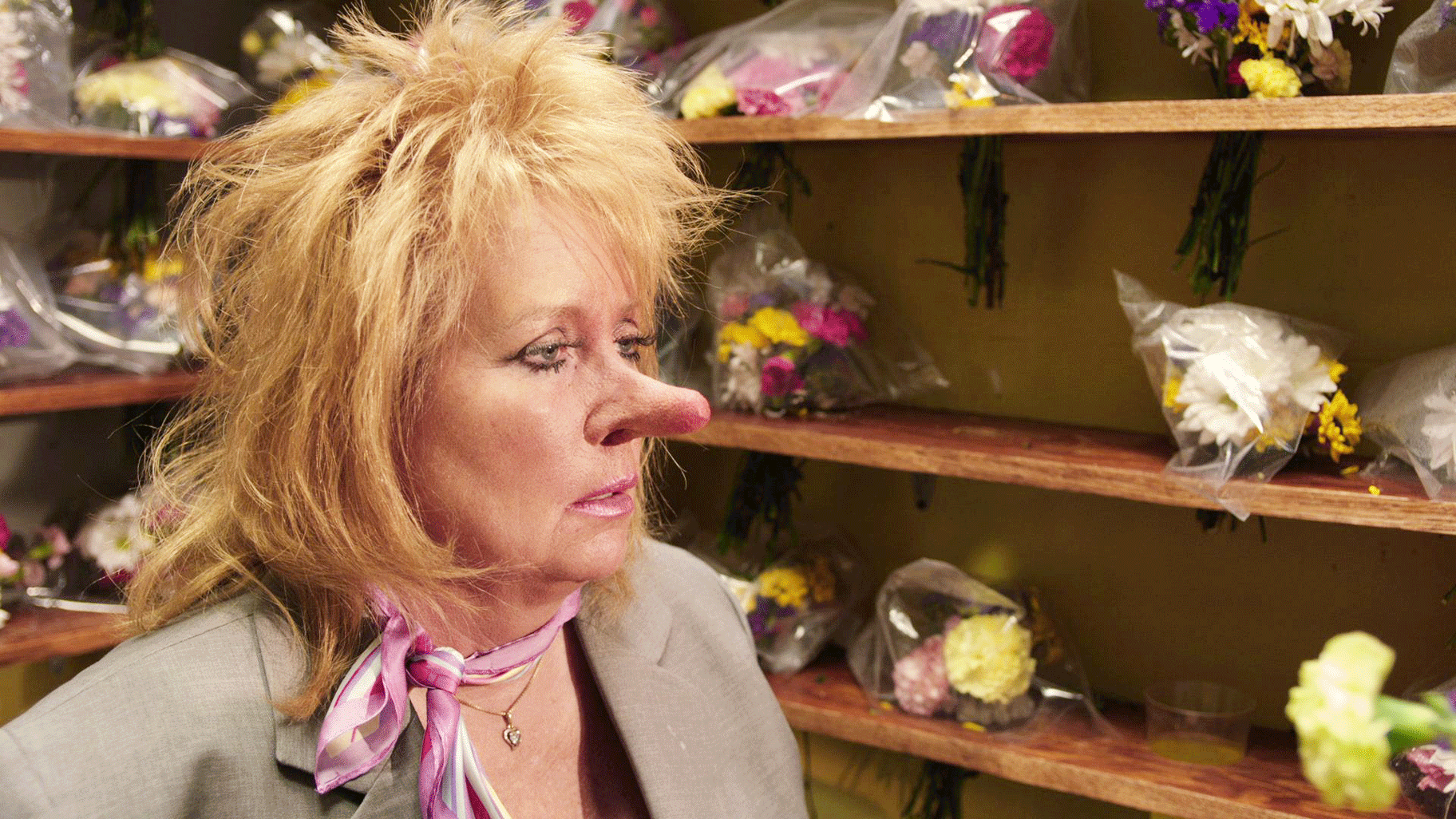
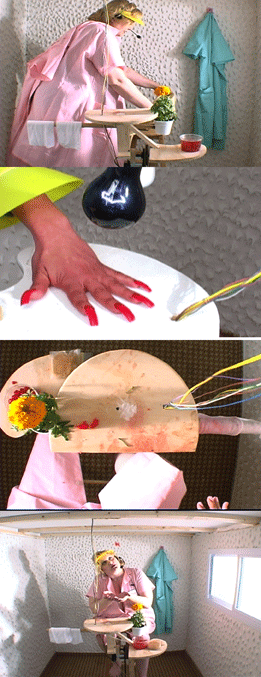
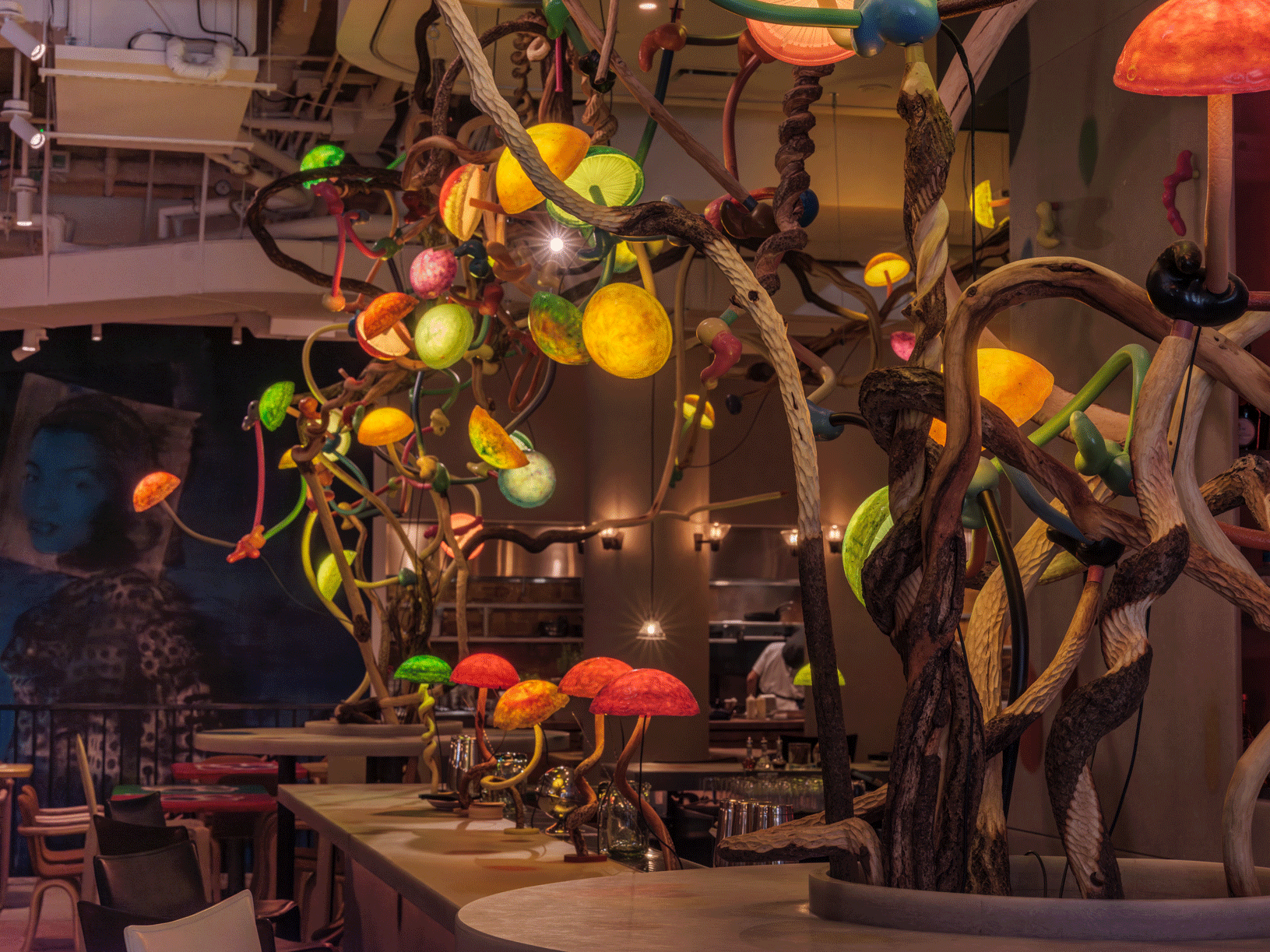











Our Voices
Mika Rottenberg is a celebrated multimedia artist known for her unique approach to video, sculpture, and installation. Her work often transforms everyday objects and scenarios into mesmerizing explorations of labor, value, and interconnectedness. Drawing inspiration from particle physics and the mundane, Rottenberg uncovers the surreal and the magical in the materials that surround us. Through her art, she challenges viewers to see the familiar with fresh eyes, inviting them into a world where the extraordinary hides within the ordinary.
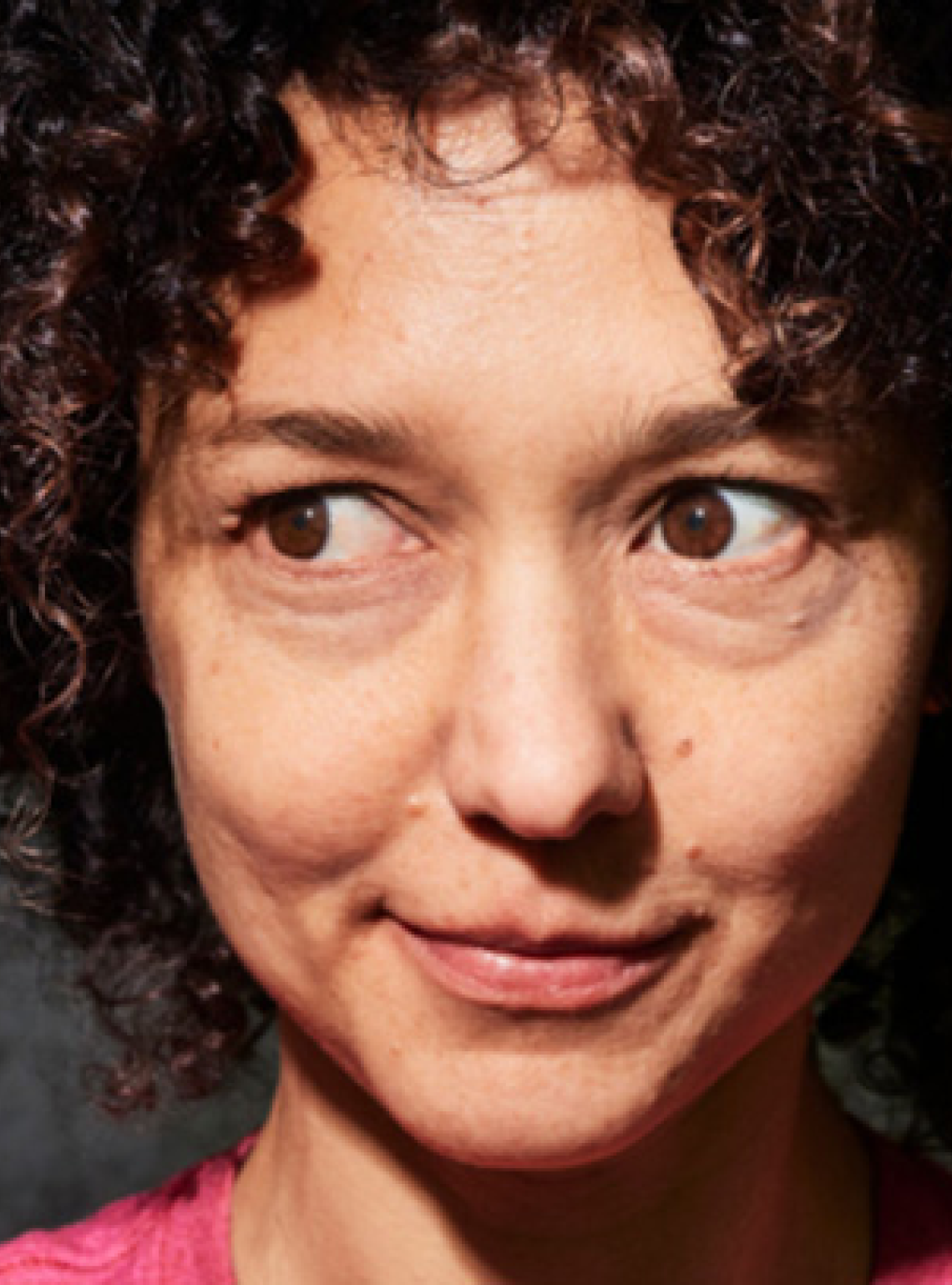
Dr. Felix Flicker is a theoretical physicist specializing in condensed matter physics and the author of The Magic of Physics: Uncovering the Fantastical Phenomena in Everyday Life. His work sheds light on the profound, often unseen properties of the materials that make up our daily lives. With a passion for revealing the wonder embedded in the ordinary, Flicker brings a fresh perspective to how we understand the world around us, bridging the gap between scientific inquiry and childlike awe.
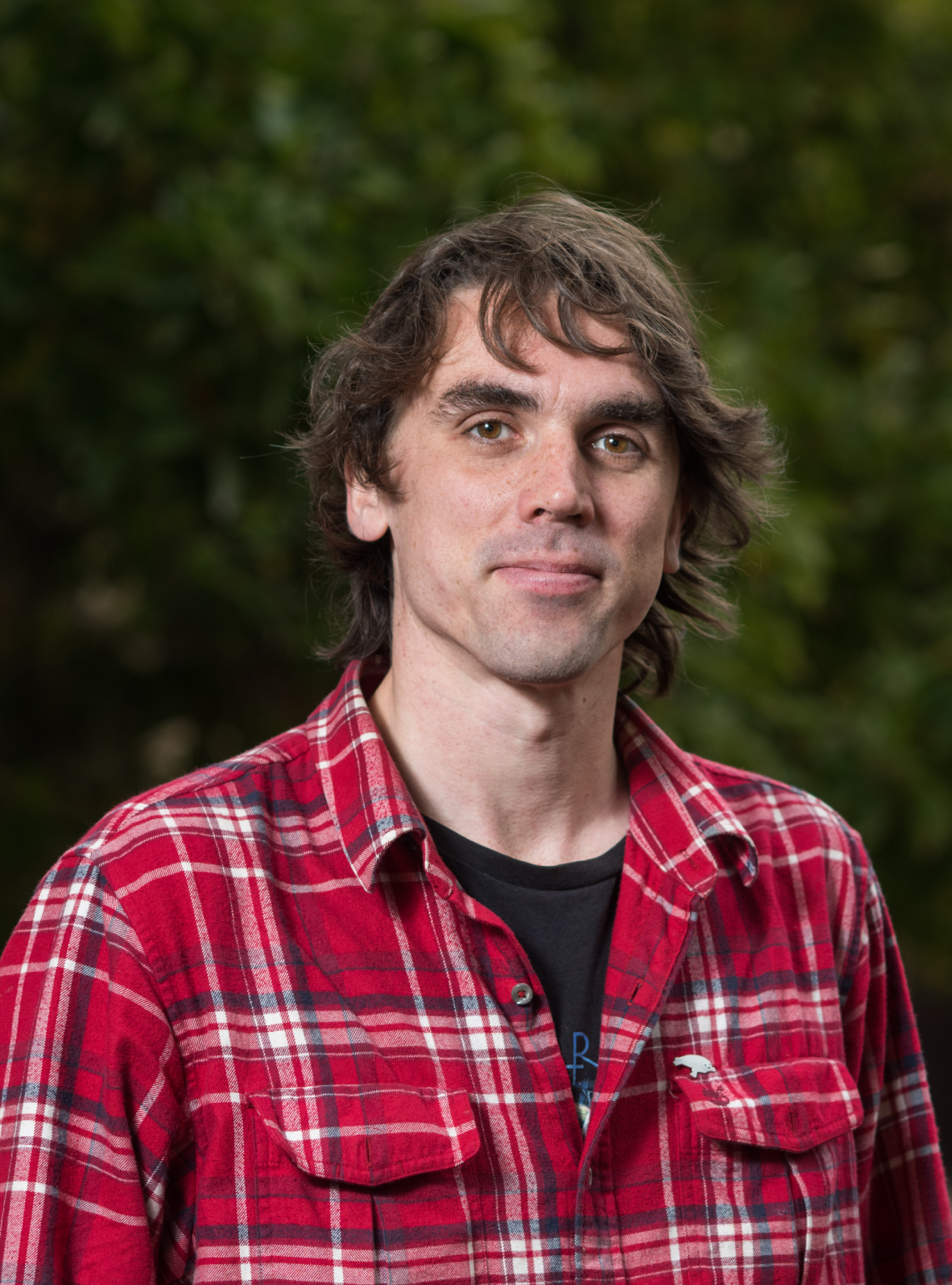
with
Solange Knowles
Listen Now →

Glenn Ligon
with Solange Knowles
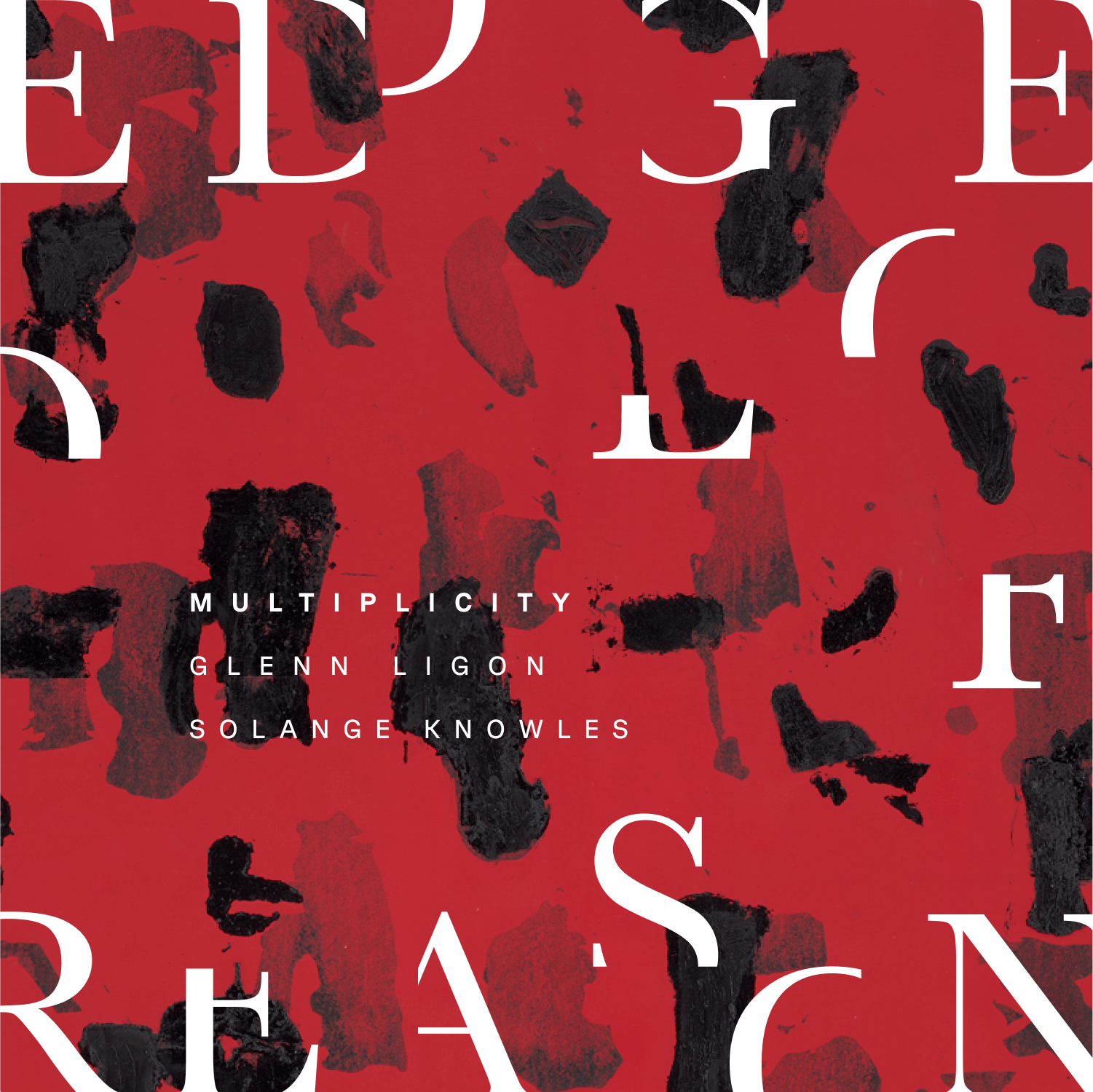
MULTIPLICITY delves into how embracing the many facets of oneself and defying boundaries can redefine artistic freedom, fostering a deeper understanding of identity and collective creativity.
In this episode, conceptual artist Glenn Ligon and multidisciplinary creator Solange Knowles discuss what it means to live and create with multiplicity. Ligon reflects on his evolution from abstract expressionism to pioneering text-based works that challenge perceptions of race, language, and history. Solange shares how her journey as a musician, performer, and curator began in childhood and expanded into world-making through art, music, and performance. Together, they explore the courage it takes to step into new creative spaces, the importance of collective experiences, and the transformative power of artistic risk. Their conversation invites listeners to consider how embracing all parts of oneself can open doors and inspire the next generation of artists to do the same.
Edge of Reason, Season 2 | Multiplicity
SECTION ONE | THE THEME
Jeff Chang: Multiplicity: the idea of the self as everything, everywhere, all at once. It’s the freedom to express the many selves we are and the ones we wish to be. Even as the world tries to box us in with perceptions, stereotypes, and expectations, the artist’s journey to express multiplicity reflects the universal desire to be seen.
But how does this journey begin? What inspires artists to find their voice and express their many selves? How do they summon the courage to reveal themselves in the face of new challenges and uncharted territory? What does it mean for artists to live on the edge, to take risks, and present themselves to the world?
Jeff Chang: These are some of the questions we’ll explore today…
…on Edge of Reason
<< Theme Music >>
Jeff Chang: …a limited-series podcast produced by Atlantic Re:think—The Atlantic’s creative marketing studio—in partnership with Hauser & Wirth—a home to visionary modern and contemporary artists. This season, we explore the line where left brain meets right brain; where logic and reason end and creativity begins; and how personal and universally resonant themes connect art with the human experience.
Jeff Chang: Joining us on this episode are two visionary artists who fully embody the power of being multifaceted, both as creators and as individuals. Glenn Ligon is a conceptual artist best known for his work exploring race, language, and history. Solange Knowles is a musician, performance artist, and creative visionary whose work moves fluidly between disciplines.
Together, they’ll explore what it means to embrace creative freedom, to reject limitations, and to carve out space not only for their own multiplicity but also for those who will come after them. Their work serves as a reminder that we are never just one thing, and that through art, we can open new paths for expression and understanding.
SECTION TWO | THE ARTIST
Jeff Chang: Glenn Ligon, I’d love to start with you. You’re a visionary conceptual artist whose work transformed the art world in the 1990s and continues to push boundaries across mediums. Known for iconic text-based pieces like Untitled (I Am a Man) and the Runaways series, Your work embodies the idea of multiplicity. By blending historical and personal narratives, you reveal the many layers that define us, challenging us to see identity as fluid and ever-evolving.
Jeff Chang: Glenn, we’re so happy to have you here on Edge of Reason.
Glenn Ligon: Thank you for inviting me.
Jeff Chang: I wanted to take you back to the start of your artist years. because very early on you began as an abstract expressionist painter. And I, I wonder was it hard back then to give yourself permission to break out of that mold?
Glenn Ligon: Well, I think, you know, if we’re talking about freedom, you know, abstract expressionism in the late 70s, early 80s, when I was in school, was for me some kind of model of, you know, absolute freedom.
You know, you just put a brush on canvas and start a painting and see what came of it. But at that point, you know, late 70s, early 80s, abstract expressionism had been around for 30, 40 years. So, at best, I was a third, fourth-generation abstract expressionist. And I didn’t feel like the content of the work had any relationship with, to in some ways, the content of my life. You know, all the things I was reading, all the things I was listening to musically, you know, there was no space in those paintings for that.
And so I had to, in some ways, make a break from that freedom in order to find a way of working that could incorporate all the things that I was interested in or touched by, or was reading.
Jeff Chang: What did you have to do in order to give yourself the kind of freedom to express yourself in a new way?
Glenn Ligon: Literature was super important to me when I was in college. And it was my introduction to Baldwin, Richard Wright, Zora Neale Hurston—you know, the classics, the giants of African American literature.
But it took me maybe seven, eight years, maybe even longer, to realize that that material that I was reading, those essays, those novels, was actually the basis of the work. And took me another couple of years to figure out how to get that, those words, into the work. And I came up with a very simple solution was make text paintings, incorporate the quotes that I was thinking about, you know, sort of text that I was reading, thinking about directly into the work. It became the work.
Jeff Chang: You had a breakthrough with the text-based works I Am a Man in 1988, followed by How It Feels to Be Colored Me in 1991. From there, your art expanded into different forms—painting, photography, installation, even coloring books, and neon sculptures. Now, with two books coming out, including Distinguishing Piss From Rain, you’re emerging as a writer and critic with sharp insights and a unique philosophy. Did you always see your writing, painting, and curating as interconnected, or has this developed more recently?
Glenn Ligon: I always say that I’m a painter, you know, and that, I think, over time becomes a kind of limit, as if painting were the most important thing in my practice. But now, I think, you know, the making neons, writing, curating, all of those things are part of my practice, you know, part of my artistic practice.
When I was writing, when I was working on a curatorial project in the museum space, when I was in the studio making paintings, they all seemed like separate activities. But I think in the last couple of years, I’ve realized that they’re all of a piece, you know, it’s as hard to make a painting as it is to write about an artist like David Hammonds or Jack Whitten.
And I get the same kind of rewards from them. So I realized that all of these things are actually under the heading of being an artist, you know? So it’s been exciting for me to kind of take joy in all of these different ways of working and not prioritize them not say well this one is more important than that one.
Jeff Chang: Let’s welcome our guest, Solange Knowles, an acclaimed singer and songwriter, best known for her unforgettable 2016 album A Seat at the Table. Beyond music, she’s a true multi-hyphenate artist—choreographer, record label head, artistic director, video director, performance artist, and founder of the multidisciplinary creative agency Saint Heron.
Her work has been presented at prestigious venues like the Guggenheim, the Getty, the Hammer Museum, the Tate Modern, and the Venice Biennale.
SECTION THREE | THE GUEST
Jeff Chang: Solange, welcome to Edge of Reason.
Solange Knowles: Thank you so much for having me, Jeff. It’s exciting to be here.
Jeff Chang: Solange, when and how did you come to see yourself as an artist? Like, was there maybe a moment even in childhood or that kind of thing where it all began to come together for you?
Solange Knowles: Yes I’ve actually been thinking a lot about this lately.
I was about nine years old and I went to a summer camp at the Ensemble Theater, which is a historically black theater in Houston. And it was an incredible program. They had a lighting department, they had a costume department, they had a workshop teaching us how to write monologues.
And at the end of the program, we were to present a monologue, to our peers. And I remember very distinctively thinking that I wanted to apply all of this new learned knowledge and all of these sort of facets of expression into my monologue. And so I remember sitting with my camp director and saying, you know, I want to discuss lighting cues.
When I say this, this one part of my monologue, I want the lights to do this, and I want to create a costume specifically for this. I think that that was sort of my first affirmation into world-making and realizing that the space around the work. was just as important as the work itself and it gave me such an incredible sense of direction and confidence.
And so, yeah, I think that that was sort of the start of the trajectory. From there, I just, I just continued to develop and work through these parts of myself, even as a child, whether it be dance or songwriting. I felt like I had something to say and that there were so many directions and paths to get there.
Jeff Chang: But it sort of expanded over the years. And it seems like 2019 was maybe the moment that the world really got to see you not just as a singer, but as a performance artist, as a choreographer, as somebody deeply engaged in making Black contemporary art. But this is, what you’re saying is, this has been all in you the whole time.
Solange Knowles: Yes, I feel like it has. I feel like, you know, from that time at the Ensemble Theater, something was really birthed in me. And I was really lucky that I got to really develop and work at. These different expressions, whether it be choreography, dance, writing music-making.
And I think with the performance pieces, I was able to combine all of those but create more expansion within sculpture, within text within sort of physical artifacts of, you know, sort of timestamps of what the performance was, whether it be making a book after it, or creating a program. And so I was able to sort of bring all of these worlds together through those performance pieces.
SECTION FOUR | THE CONVERSATION
Jeff Chang: Well, let’s jump into this conversation.
Jeff Chang: I know this is a rare opportunity for the two of you to finally have a conversation—something that hasn’t happened before—and I’m sure you’re both eager to dive in. But before we get into the heart of it, I’d love to set the stage with one question.
Our theme today is multiplicity. How do each of you define it, and what resonates with you when you think about multiplicity in your artistic practice?
Glenn Ligon: I think multiplicity, you know, if I have to think about what it means in terms of my practice, is not making huge distinctions between things that I’m doing—so curating exhibitions is different than working in your studio but it requires the same kind of energy, the same kind of focus, the same kind of collaborations with people talking through things letting chance intervene in the process. So all the inputs that I get when I’m working in the studio are the same kind of inputs, inputs I’m getting when I’m thinking about writing or thinking about curating an exhibition.
It’s a beautiful way to think about bringing your whole self to the work you do, but also realizing that one form of your creativity touches people in a particular way, but that is different than if they are holding an object that you’ve designed or created, you know?
I was just thinking about the muscles to push yourself, you know, growing new muscles, pushing your practice in a different direction. You know, when I was making my moon jars, I’d never made ceramics before. You know, I found this ceramicist who lived in Japan he had the expertise, but I realized, you know, the, the black moon jars that I ended up baking with him, he would have thrown half of them out.
They were not his thing, but I realized I pushed him to make something he never would have made. But because he makes perfect things and mine are imperfect, but that imperfection was maybe, you know, that was the collaboration, getting him to make imperfect things that matched my vision rather than the perfect things that he would have made that were all about his vision.
Solange Knowles: Yeah, I can definitely relate to that. I can’t tell you how many projects I’ve had to put on ice, and sort of let thaw out. And I think time can be a really great gift in that way you’re able to return to something with a sense of clarity or a sense of experience that has happened throughout that time that gives you more of an impulse to say, yes, this is right.
This is a real reflection of how I feel and something that I can back being out in the world. And so when I think about what the risks are, I think about the vulnerability to fail. I know with the glassware, I had a very similar experience in that I looked really hard to find a Black glass blower to fabricate that.
I think that it was really important to me that from idea conception to production that this sort of stayed in Black hands and, and, and a Black spirit. And I found, you know, Jason McDonald from Tacoma, Washington. And he was a Venetian-trained glassblower. And so my designs and my concepts, very similar to yours, were not really a part of his wheelhouse.
And if anything, you know, he sort of was, had the sentiment of like, Oh, I can do this in my sleep. These really easy expressions. But once we actually got into the hot shop and we actually started to refine and build these out, it became much more challenging than either of us anticipated.
And so we had to come up with creative solutions and bend a little bit, which was very telling when speaking about the material of glass, you’re constantly sort of bending and adjusting yourself and emotion and surrendering to this material because otherwise, it’ll break. And so I really utilize that process as sort of an allegory for the lessons I needed to learn internally, which is what, when you’re taking that risk, entering a new world that you have to be willing to surrender to the process.
I know with Eldorado Ballroom, the performance series that I’ve curated through St. Heron.
Last year we premiered the series at BAM and one of the performances with Linda Sharrock was a risk in itself being that Linda was a performer who hadn’t performed in 20 years. And so it, it sort all has to sort of ground itself in something that you’re willing to fight for, that you’re willing to stand by. And that you’re willing to surrender to in the process. And I’ve been very lucky that the payoffs have been there for the most part. Sometimes it doesn’t work but it feels good as hell when it does.
Jeff Chang: For those unfamiliar with her music, Linda Sharrock is an iconic avant-garde jazz vocalist known for her groundbreaking, experimental style. She gained prominence in the ‘60s and ‘70s for her collaborations with the saxophonist Pharoah Sanders and, later, the guitarist Sonny Sharrock.
Glenn Ligon: Right. I was actually at BAM to see Linda Sharrock perform. It was amazing. An amazing concert because she kind of, like, it was almost like she was saying like, I may not be here again. So I’m going to give it my all tonight. And we thought the concert was over. And she’s like, I’m not done.
Solange Knowles: As a curator and program director, I was backstage sweating bricks because, you know, I was like curtain close. I like things to be with precision. And she gave me the look like it ain’t over, open those curtains back up. I got more to say. And that was a risk in that moment.
The audience could have been like, “uh, what’s going on,” but everybody really embraced the moment that we were all sharing together. And, you know, that was a really special night as well, because Claudia Rankine, I had her perform some poems and Glenn, we realized that we have her in common and that your work had been featured in Citizen and that Citizen was a huge starting place for me in writing A Seat at the Table. So that was another cool sync that we had.
Glenn Ligon: Also what was nice about that evening was they are not people you would normally think of together sharing a stage. You know, the people who were coming to see Claudia may not be the people who are coming to see Linda or the other way around. But I think what you did Solange was pretty cool.
And you have done consistently throughout your career is make these spaces for people to be in dialogue and conversation. Another form of multiplicity.
Solange Knowles: Oh, I appreciate that. That means so much. It ain’t always easy, but it truly is the most fulfilling work and it’s one of my favorite parts of my job is bringing people together in conversation and celebrating our stories and celebrating all of the syncs in our stories, all of the threads in our stories, and finding that sort of common ground between us, especially as Black artists and, and Black women artists, you know, we share so many of the same stories and journeys that it takes to get there.
And that reflection and that seeingness of another is a really powerful force. And I feel really honored and humbled to be able to do that work.
Jeff Chang: Let me bring us back to the brilliant Claudia Rankine for a moment, and her powerful book Citizen, which explores microaggressions—though really, they are just aggressions. It got me thinking about the risks you each take as artists, both personally and publicly. Citizen reminds me of how Claudia writes about how it feels to be perceived or misperceived by another and the effect it has on one’s physicality and emotionality.
How do you navigate those moments when you’re in similar situations?
Solange Knowles: I think a lot about the night that I released When I Get Home my latest album. And I already kind of knew that it was gonna be work that needed to sort of be sat with. I was sort of deep in the throes of repetitions and the way that mantras were really transforming my life. But I, kind of, knew that starting an album saying I saw things I imagined for an entire song—maybe 20 times— that there would be a pause. So I definitely was a part of the dialogue that night.
It was very sort of split. There was a large part of my fan base and my audience that immediately connected to this work and immediately understood what I was trying to achieve. And understood that while A Seat at the Table was much more lyrical that this sonically was saying in some ways even more.
It took time for me to have the courage to write those songs. And people often, often tell me, you know, five years later that of all my albums, it’s their favorite album, but that it took them a year or some six months to really sort of be transformed by the process and that it sort of spiritually resonates for them.
Where A Seat at the Table, maybe leads with the mind. That When I Get Home, leads with the spirit. And so, I think as an artist, It’s important to, to sit with that process and people’s walk and, and people’s journey with your work and to not be critical or disappointed or swayed by that.
I mean, of course, we’re, we’re human, so we’re going to feel things. But I think when you feel like you’re at a point where you’re standing sort of ten toes down in what you’ve created and that being the mirror in which you needed to see yourself in then you’re able to meet people with grace.
And I think when I think about my favorite artists and the multiplicity they have, there are different areas of representing themselves that are wildly different. And I think it’s impossible to carry everybody along with you on the journey to all these different versions of yourself.
Glenn Ligon: It seems like there’s always going to be, you know, people who understand the deep cuts and you gotta rely on them when maybe your audience isn’t quite gone with you yet or needs some time. So I rely on those, you know, few artists who I was like, okay, this is what I’m doing—what do you think? And they get the deep cuts. They see the through-line in the work, you know.
And as you said, Solange, sometimes it takes people longer to catch up to things. And I feel like I have the same process. Things that I didn’t like in my studio that I made, you know? Wait a minute. Actually, there were great ideas in there. What was I thinking? I just needed to catch up to it.
Solange Knowles: I love that answer.
Jeff Chang: Glenn, you and the curator Thelma Golden famously coined the term Post-Black. Partly as an in-joke, partly as an insightful, maybe inciting, way of describing how Black art was changing with a new generation of artists. But this question is about legacy. In terms of multiplicity, do you think your work has broadened how the public sees and understands Blackness? And what does that mean for creating opportunities for younger generations? How has the practice of multiplicity changed from when you were breaking down barriers to where it stands now today?
Glenn Ligon: Well, I think my sister, Thelma Golden—dear, dear friend—when we were talking about this notion of Post-Blackness, Yes, it started out in a way as a kind of an aside, a joke in some ways.
You know, me saying to Thelma, oh, another one of those shows with your Post-Black artist children, But not having a clear sense of what that meant, or having a clear sense that that term Post-Black Art might be taken up in the art historical discourse, you know. But I think it was just a way of signaling, in a way, a break from a generation of artists that I was embedded into a younger generation of artists who were deeply, deeply interested in Black culture, things coming from Black culture, but also deeply interested in redefining what it could mean, you know. Sort of, not being afraid to be abstract Black artists.
Where for an earlier generation, that was a touch point that had to be debated, you know, black artists need to be making figurative work speak to the people. And those debates just weren’t, you know, for a group of younger artists just weren’t debates that they were having.
They found no contradiction in the ways that they were working and an exploration of blackness in those ways. And so I took inspiration from that. I did a talk last night with Julie Mehretu, a speaker that I think is amazing, and Kelly Jones, an art historian at Columbia. And Kelly asked the question about legacy.
Do you feel that you have a responsibility to claim your legacy to be—that you have been a role model? And I kind of just ducked that question.
But I did tell a story about a young black woman. I was eating in a restaurant in Brooklyn. I had finished my meal. I walked outside. She came running out of the restaurant. She’s like, “Oh my God, I just realized you’re Glenn Ligon, the artist. I’m such a fan of your work. I’m an artist myself. You’ve opened so many doors for me.” And it was incredibly moving to me because I thought: your work goes out into the world and sometimes you know the response, but sometimes you don’t know. It’s just out there.
And to have someone say, I saw it, it meant a lot to me, it opened some doors for me. in terms of my own work, I thought, well, that is the best kind of response I could have, where the work meant something, and facilitated something, changed something for them.
Jeff Chang: Solange, in many ways, it seems like you’ve fully embraced the multi-hyphenate identity, which feels much more natural, perhaps for artists today. Your son is now a young adult, and it makes me wonder—what does multiplicity look like for the next generation of artists, especially young Black artists?
Solange Knowles: I think for me it’s an exciting time seeing the evolution of the way future generations are able to show up in the world and able to sort of represent all of these things, and that the world is catching up to the multiplicity in all of us. When I was starting to enter in these spaces I had to fight really hard to apply language to what I was doing or to carve out the messaging of what I was doing.
And it’s really beautiful to see that those conversations now are really not as valid. So many people bring a multiplicity to what they are doing. So many young people, my son included, want to model but also want to make the clothing and also want to photograph the clothing and are sort of creating their sense of world-making in their own ways.
I think as long as the intention is pure and as long as you’re willing to humble yourself to become a student to, to the new spaces that you are entering, that it can be such a fruitful way of the seeingness in yourself. And really getting vulnerable with yourself and being able to express, like I said earlier, these other facets of yourself that deserve to be heard and seen.
Jeff Chang: Glenn, here’s a question: One of my favorite pieces in your book, Distinguishing Piss from Rain—which, by the way, brilliant title—is a piece you call Advice for a Young Artist. If you had to choose the best bit of advice from that, what would you offer to the younger generation?
Glenn Ligon: One of the things I said in that essay is that you have to come a little hard at the beginning with folks so that they treat you right. And you can be nice later on. Get what you want up front, and then you’d be nice, you know? Because sometimes being nice up front, that don’t get you what you actually need.
Jeff Chang: Well, thank you. It’s been such a pleasure to be able to be with both of you today. Thank you so much for being on Edge of Reason.
Solange Knowles: Thank you for having me. Thank you, Glenn, for all of the incredible work that you have put out into the world and all of the ways that you continue to reinvent how you see and celebrate us..
I’m so grateful to be in conversation with you.
Jeff Chang: Back at you. Delighted that you agreed to do this, but also for your music, your presence, the way you’ve made platforms for other performers, artists, thinkers—I’m in awe.
<< Outro music >>
Jeff Chang: I’m Jeff Chang, and you’ve been on a journey to the Edge of Reason. Join us next week, when we speak to Hauser & Wirth artist Camille Henrot and author Melissa Febos to explore how Attachment and Power drives their work.
If you enjoyed what you’ve just heard, Like and review on Apple Podcast, and help spread the word about our series to other listeners like you.
GALLERY
to see more
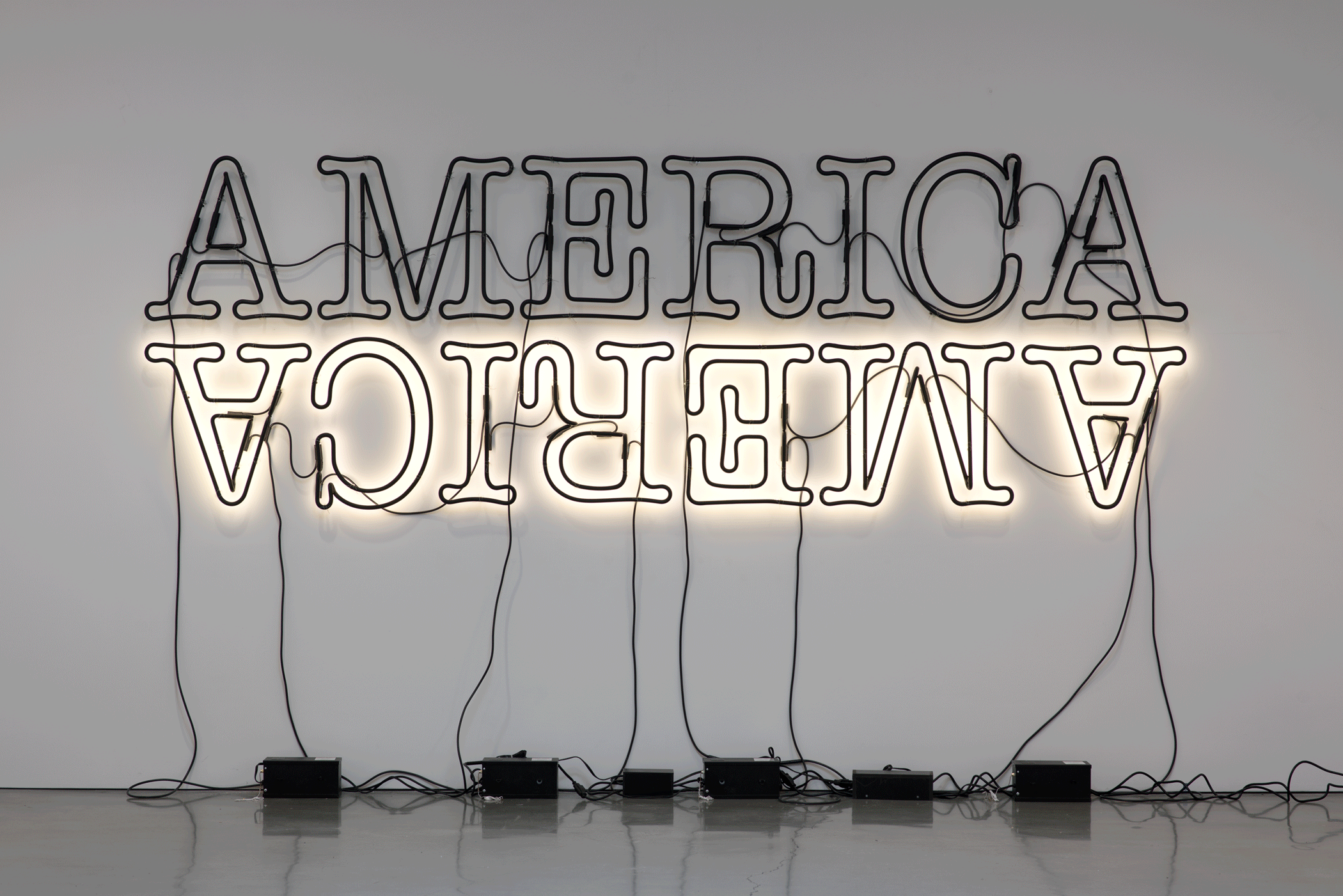
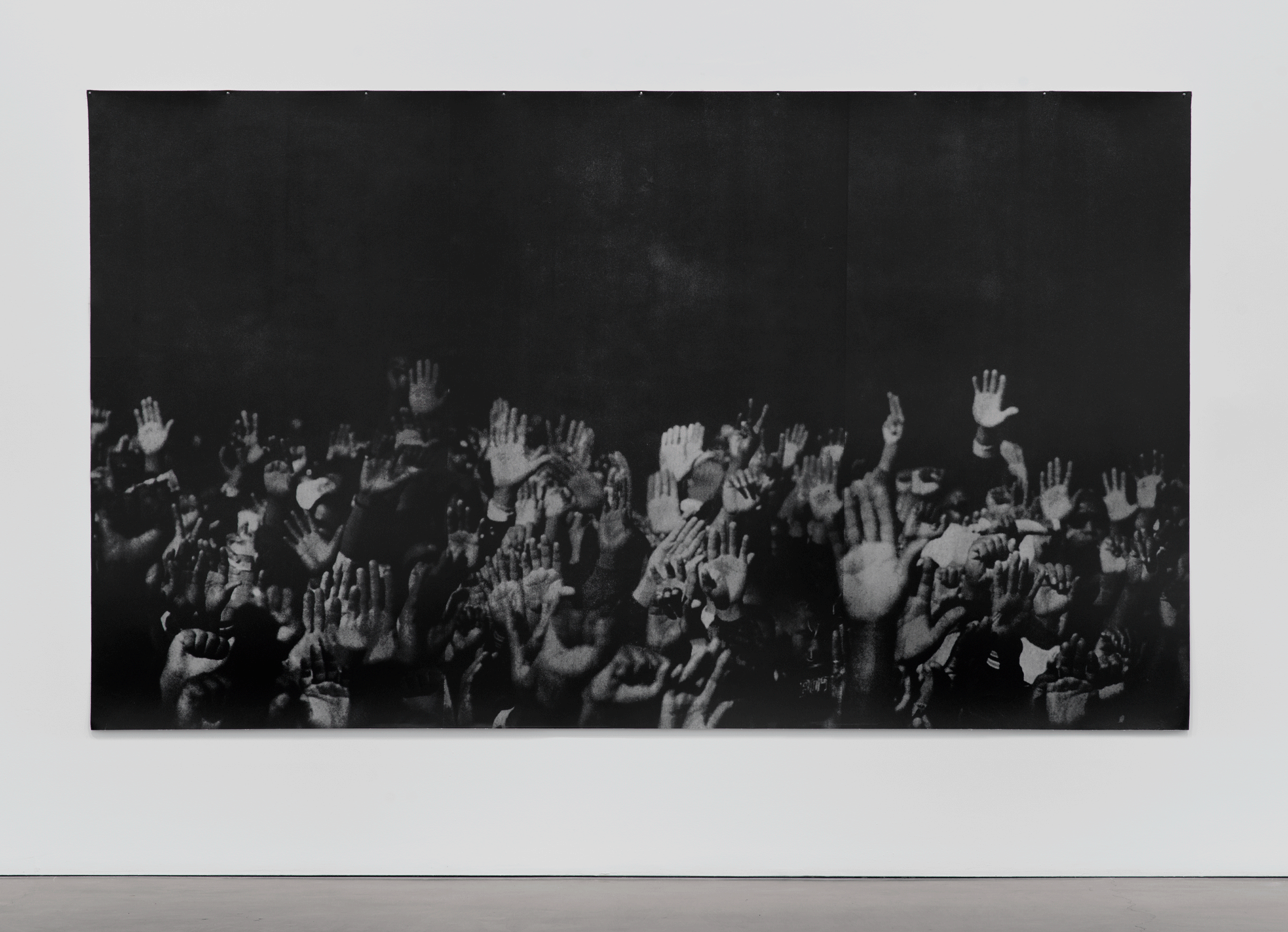

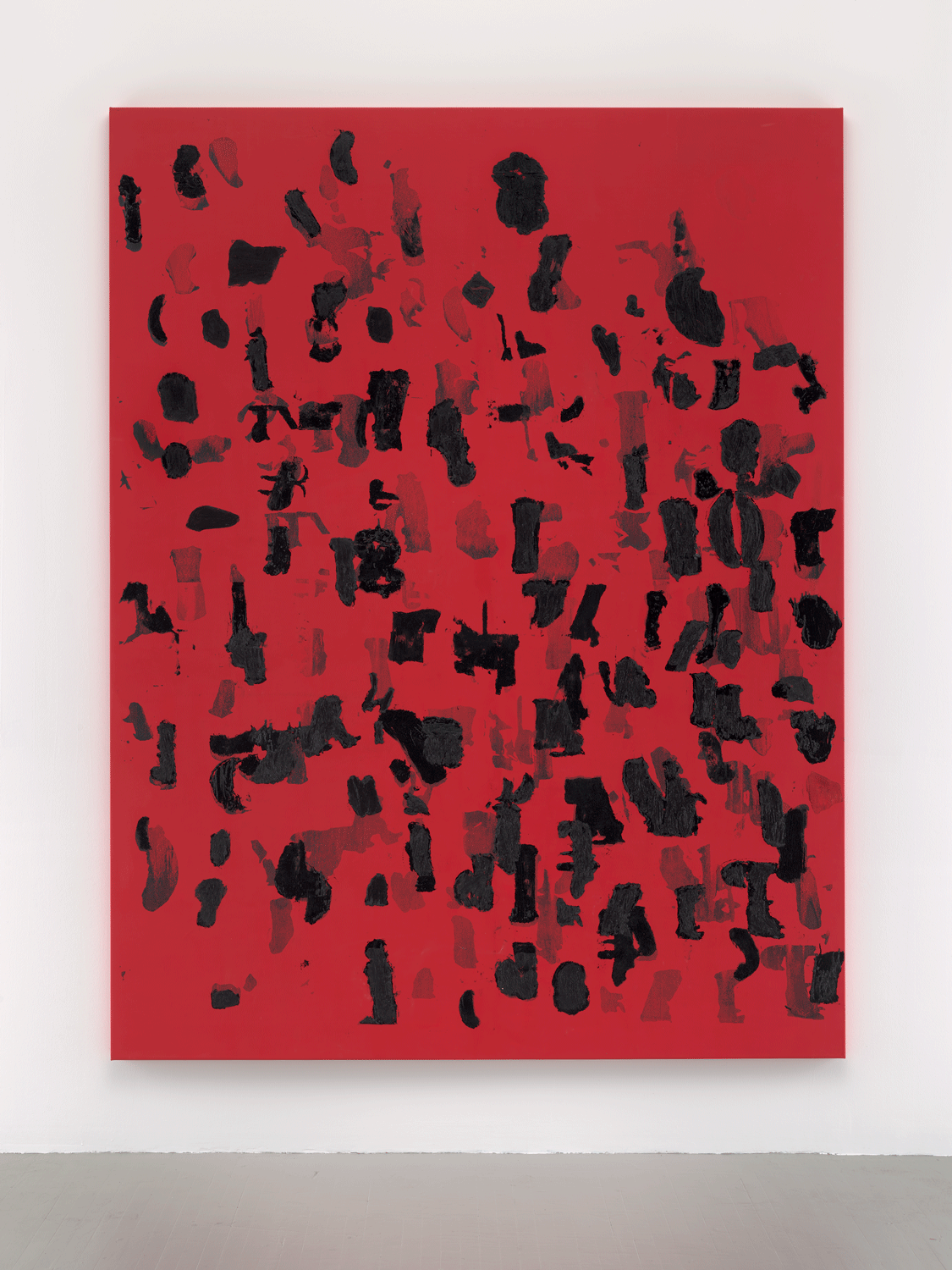
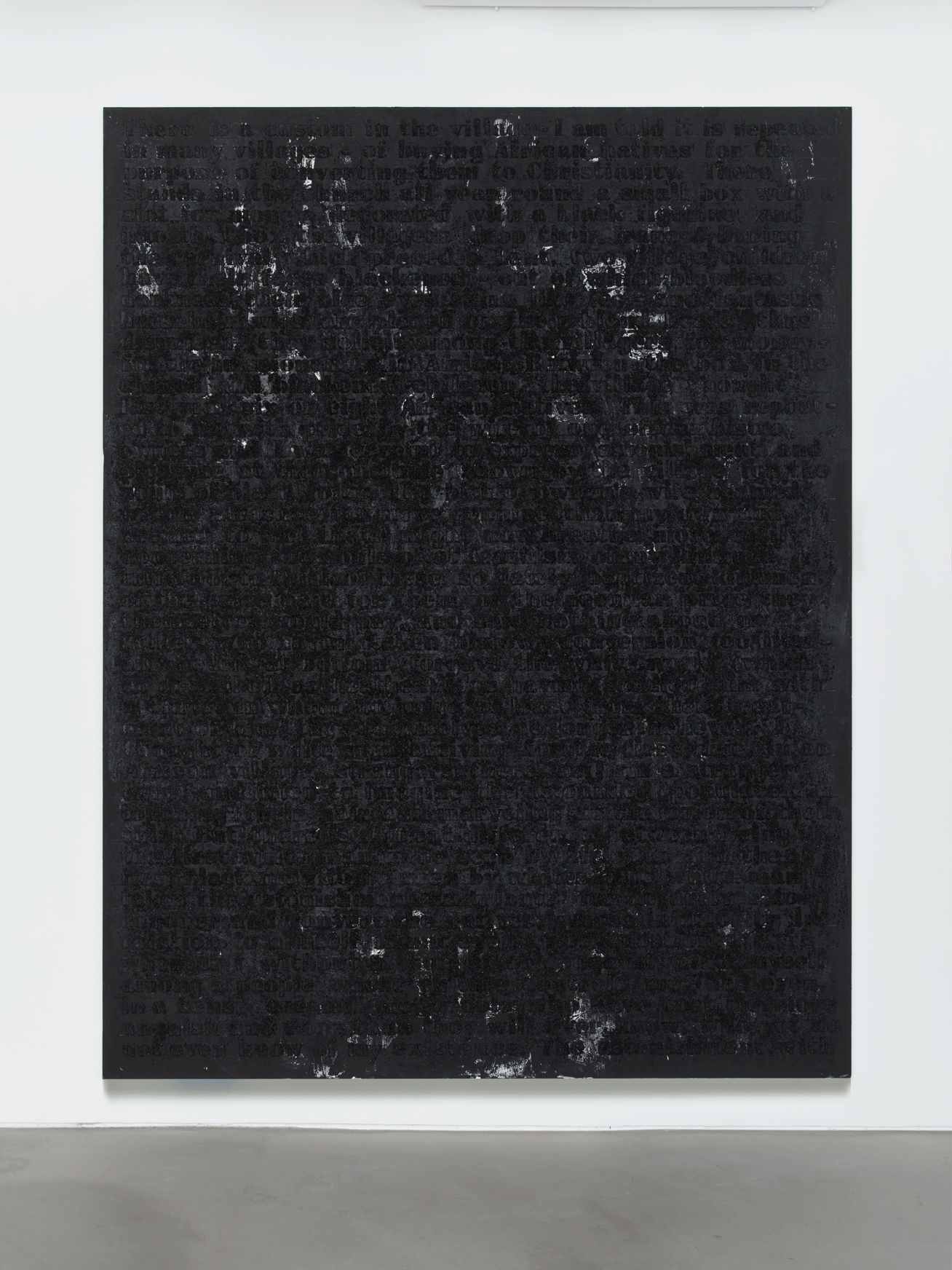
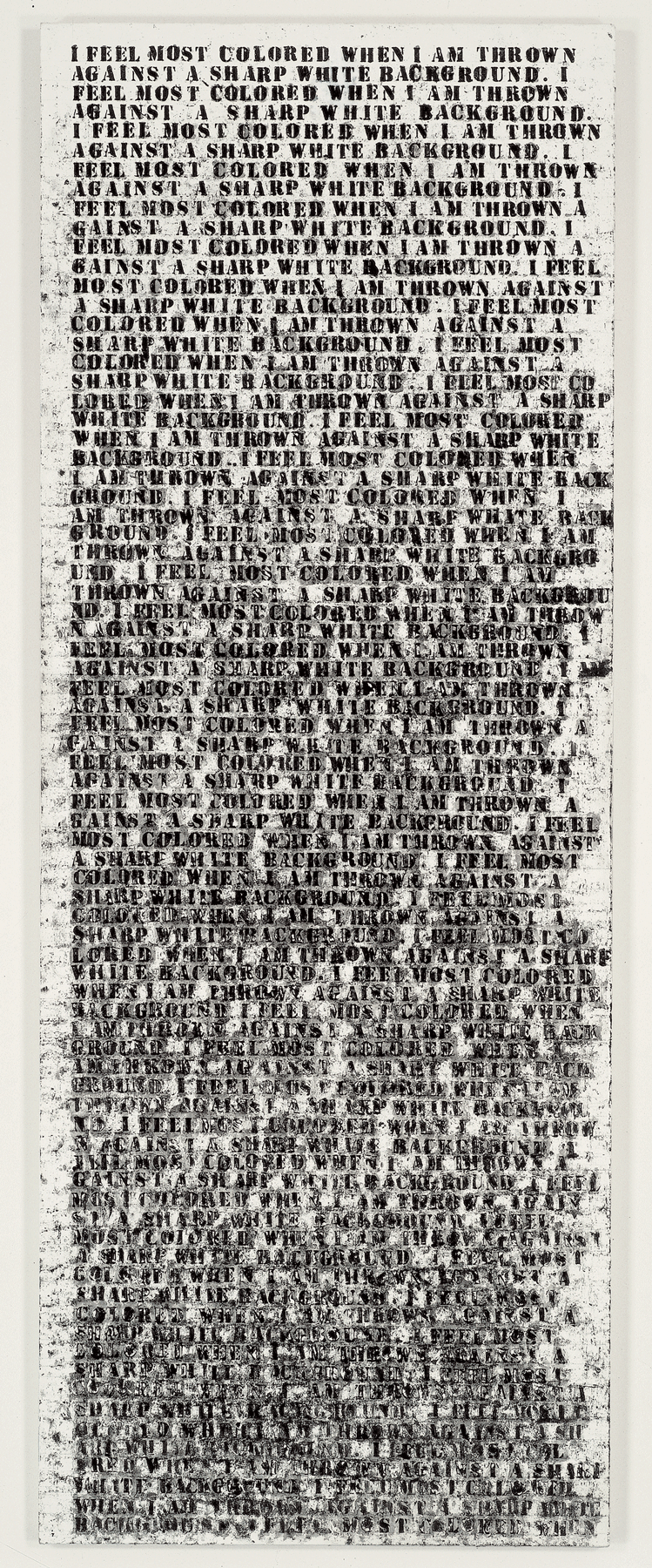












Our Voices
Glenn Ligon is a renowned conceptual artist whose thought-provoking work spans painting, photography, installation, and curatorial projects. Known for iconic pieces like Untitled (I Am a Man) and the Runaways series, Ligon’s practice challenges traditional notions of identity and explores the intersections of race, language, and history. His art and writings invite audiences to question and expand their understanding of what it means to be seen and represented.
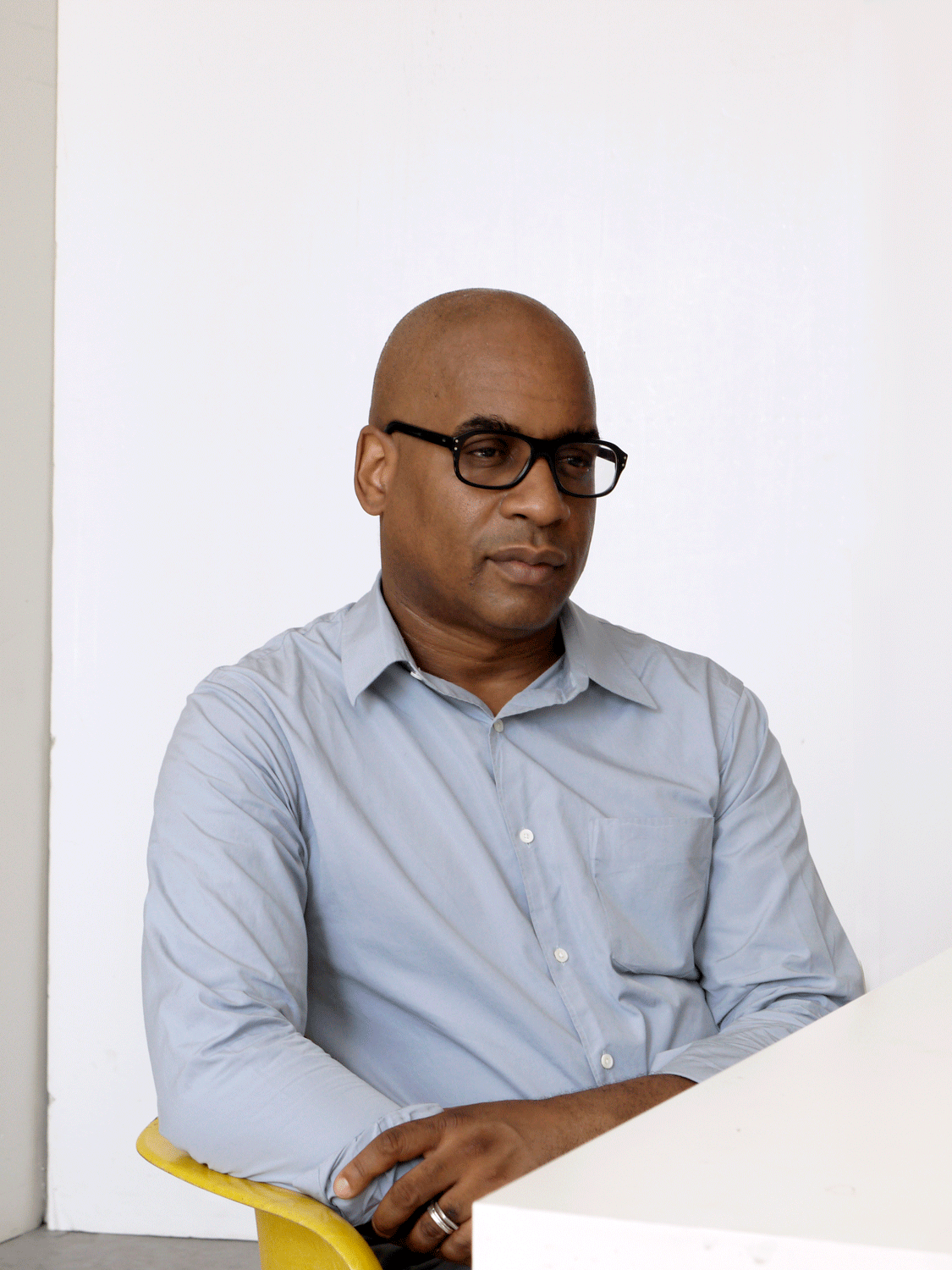
Solange Knowles is an acclaimed musician, performance artist, and creative visionary whose influential work extends beyond music into choreography, curatorial projects, and founding the multidisciplinary creative agency Saint Heron. Her performances and art installations have been showcased at the Tate Modern, Guggenheim, and Venice Biennale, exemplifying her commitment to celebrating Black artistry and fostering dialogue across mediums.
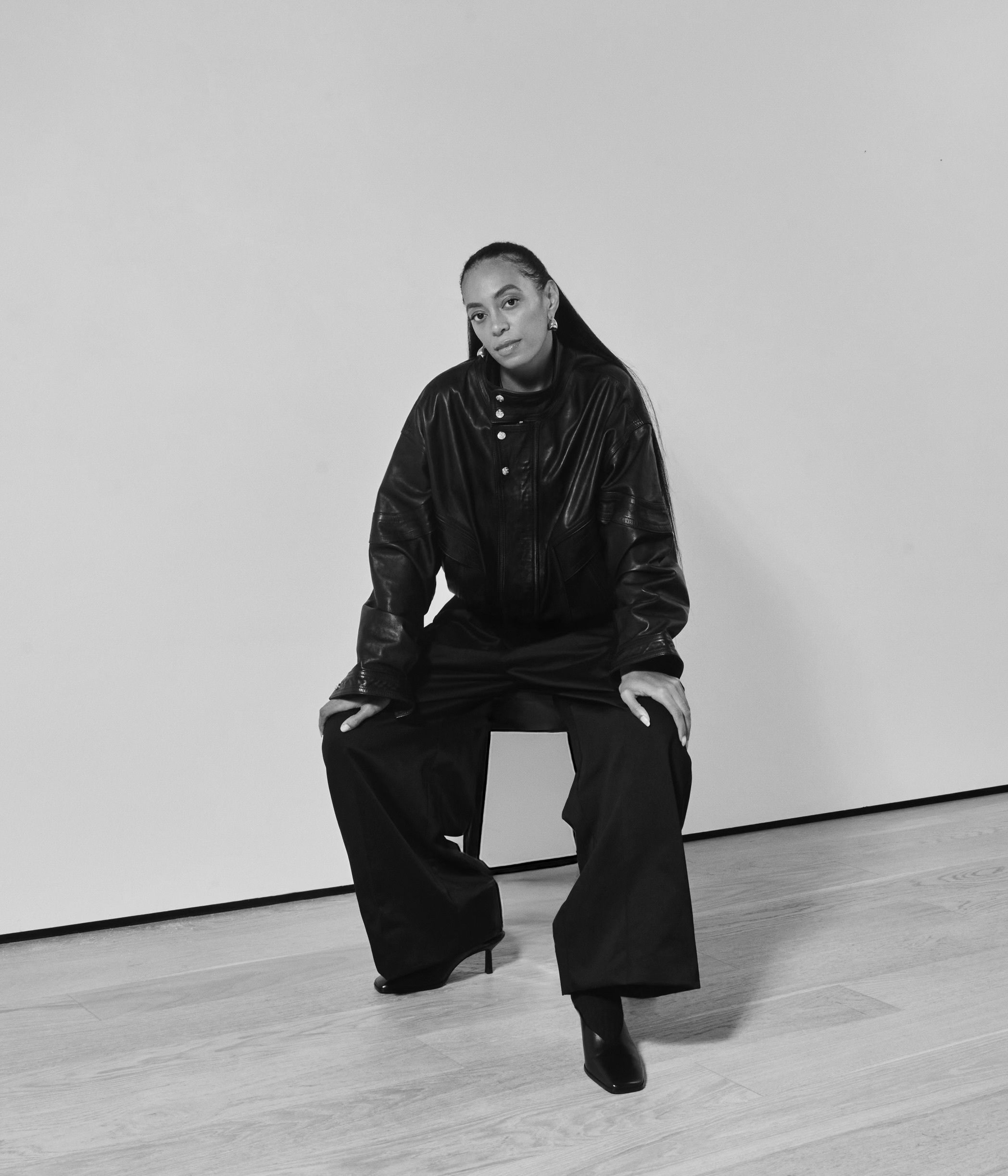
with
Melissa Febos
Listen Now →
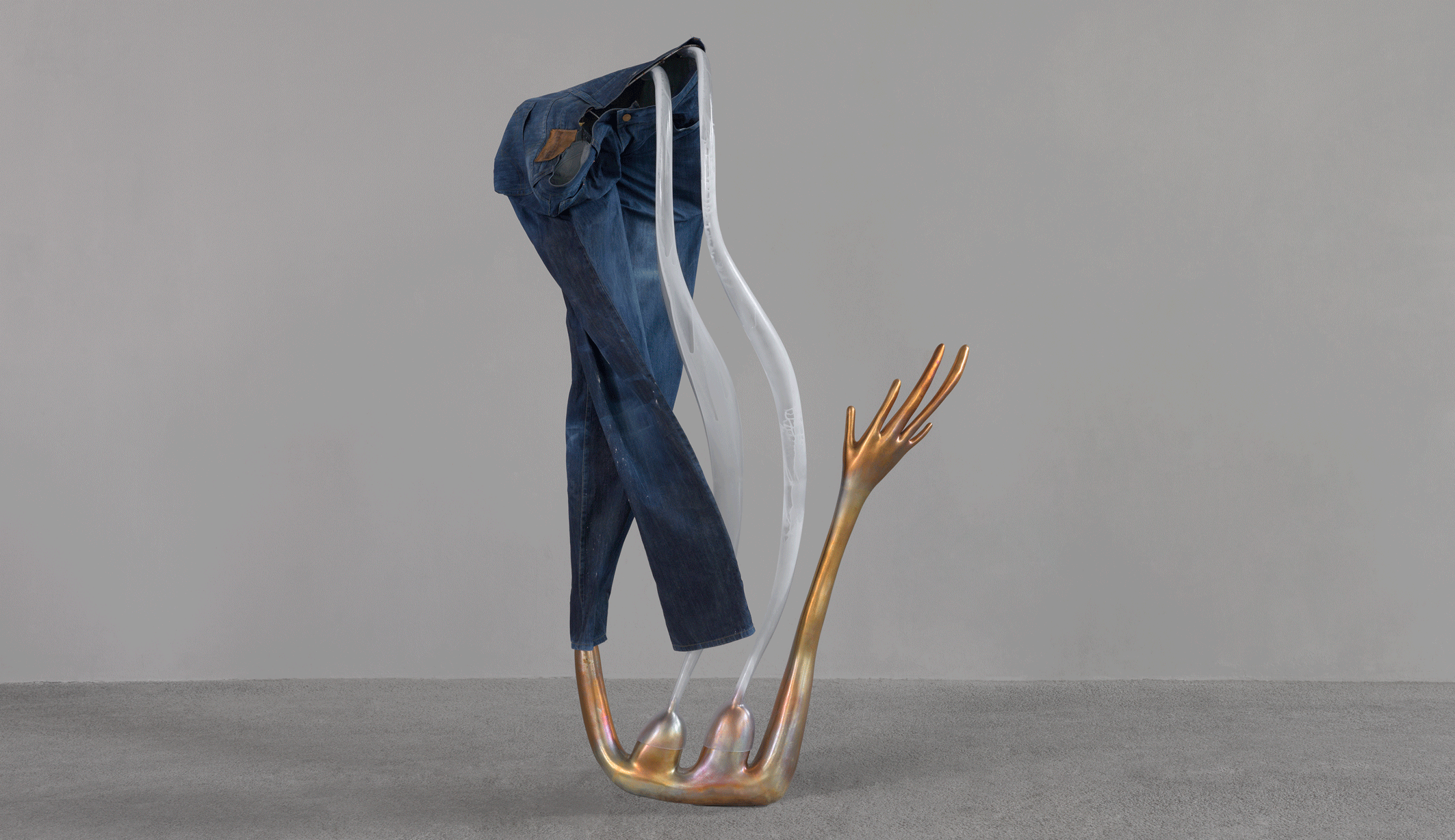
Camille Henrot
with Melissa Febos
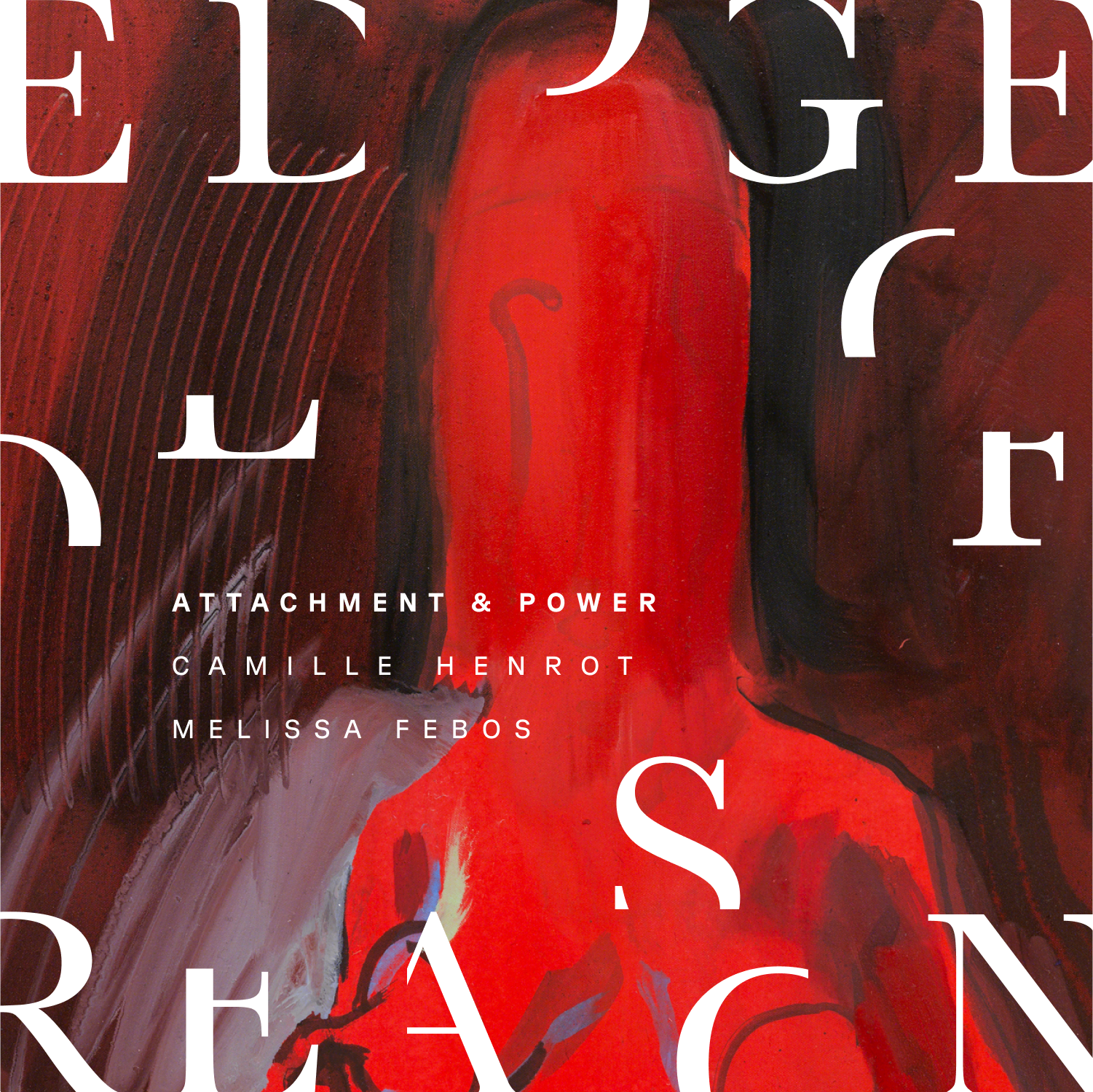
ATTACHMENT AND POWER explores how relationships, from the personal to the societal, shape our sense of self, influence our choices, and reveal the dynamics of control and connection.
In our final episode of the second season, artist Camille Henrot and author Melissa Febos dive into the complexities of attachment and power in our relationships. Henrot discusses how caregiving, education, and societal structures inform her creative practice, from works inspired by etiquette books to her exploration of dependency and discipline. Febos reflects on her experiences as a dominatrix, the micro-governances of power in everyday life, and the liberating process of writing about attachment. Together, they explore how art can untangle the contradictions of intimacy and control, offering new ways to understand the forces that bind and shape us.
Edge of Reason, Season 2 | Attachment
SECTION ONE | THE THEME
Jeff Chang: We all have our attachments— I don’t mean the digital kind. I mean the relationships we’re bound to by inheritance, duty, and affection. These bonds we share with family, friends, lovers, and neighbors shape our very existence. These attachments are complex; they nurture us, but they also exert control, embedding questions of power into our daily lives.
What are the origins of our attachments? How do they define our interactions and identities? How does power entangle itself within our relationships? And how do we understand and manage these dynamics in a productive way?
These are the questions we’ll explore at the Edge of Reason.
<< Theme Music >>
…a limited-series podcast produced by Atlantic Re:think—The Atlantic’s creative marketing studio—in partnership with Hauser & Wirth—a home to visionary modern and contemporary artists.
Joining us today—in our final episode for this second season—is the artist Camille Henrot, whose influential work reveals the private and global dimensions of relationships, asking us to think about questions of individuality and systemic power. She is joined by the writer Melissa Febos, whose memoirs have also explored the traumas and joys suffused in intimate attachments.
SECTION TWO | THE ARTIST
Jeff Chang: Camille, welcome to Edge of Reason.
Camille Henrot: Thank you.
Jeff Chang: You’ve had a storied career across multiple mediums, including film, painting, drawing, sculpture, collage, and installation. And so much of your work explores the implications of living and working in an increasingly connected and overstimulated world.
I’m curious about how you were drawn to the concept of attachment and why you’ve chosen to center much of your recent work on this theme.
Camille Henrot: I think this preoccupation came quite early in my work. It was already one of the main focuses of the exhibition I did in Metro Pictures Gallery in 2015, it was called Bad Dad and Beyond. And it was an exhibition exploring the—all the similarities between the dependency we have to technologies and the dependency we had to our parents.
And it was exploring the feeling of frustrations that we feel when we depend on something and on someone or an institution, and that institution is supposed to be resourceful and benevolent. But that situation of power is always like slightly being abused when it’s a figure of authority. So I’m interested in how the problem we have as individuals that might seem very subjective, but those problems are reverberating through the whole society because society and technology is built on the way we, as humans, experience relationships.
And so that exhibition was made with interphones and telephones who were pretending to be help hotlines but having humoristic and perverse answers to questions.
Jeff Chang: So it sounds like you were thinking about how power shows up in our attachments, whether our familial or institutional relationships, for better and for worse.
What kinds of attachments have you been thinking about lately?
Camille Henrot: Lately, I’ve been thinking a lot about the attachment of children to caregivers. There’s personal reasons, but also political reasons to think about that.
So, I’ve been meditating over the dynamic between these needs. But also how slowly school and other figures are interfering and complementing those needs. But also, modelizing and like shaping, the way the brain function, the way society is seen.
And so, recently I’ve been meditating a lot on education and discipline and way we see the world now being so determined by childhood and by those structures. It’s a woman writer, a pretty revolutionary and radical feminist who said that in order for a child to be a revolutionary, his education needs to be conservative.
This has been confusing me a little bit. So I’ve been, like, trying to understand if I agree or if I don’t. And reading a lot of etiquette books and manners and thinking a little bit about how social behavior is coded and how those codes used to be written and now they are not, but at the same time, we’ve never been as social as now.
We’ve never been exposed as much to each other. opinions and each other judgment as we are right now. So this has been a little bit the last thoughts on caregiving and attachment and the way society as a group is, combining dynamics of power and dynamics of attachment in our early experience of life.
Jeff Chang: So, in a way, you are exploring how society shapes these norms, and then enforces them in our personal lives, on the level of the way we behave in public.
Perhaps you could tell us a little more about your project Do’s and Don’ts, which is planning to open at Hauser and Wirth in January 2025. Could you share how this project originated, especially how you came to explore these books on etiquette and manners?
Camille Henrot: I didn’t have a space to work because I had lost my studio in New York during COVID, and I couldn’t return. I was staying at my mother and I had to organize a library. And the first thing I did is to put books that I felt were obsolete or redundant, or we had in double in a big bag to donate.
And the book about etiquettes were among the first one I put in the bag. It’s always interesting, the things you want to get rid of, they mean so much.
And so I started to see those etiquette books with different eyes, questioning why I wanted so much to get rid of it. One of the book was called Don’t, and another book was called Manners for Women. Obviously, extremely outdated. There was a long chapter around how women shouldn’t laugh too much, shouldn’t show their teeth, the position of the legs, what to do with your hat, what to do with your umbrella…
And that was a little bit, the beginning of the materials is it was like a mixed feeling, like a little bit of like rage maybe, into using those materials. But as I was progressing in the research, I started to buy more books, and I started to find in some of them really good advice. I started to understand how those codes were meant to ease our relationships and to make it, you know, less frightening— to reduce social anxiety, basically. But also they were meant to be a key between social classes because what separates social classes are these social codes. I would say especially in Europe and especially at the beginning of the 20th Century.
A lot of those advice are basically directed at making you feel a little bit less self-centered and helping you understand other people more. But, of course, there are still advices that are now being transformed into human resources. And they now become some kind of tool of manipulation, as well.
SECTION THREE | THE GUEST
Jeff Chang: Ah, there’s so much in there. I can’t wait to come back to this in our conversation.
But first, let’s bring in our guest, Melissa Febos, an author renowned for her fearless and incisive dissections of human connections and power structures. Her award-winning memoirs, including Whip Smart, Girlhood, Abandon Me, and the forthcoming Dry Season, scrutinize the dance between personal autonomy and emotional dependence.
Melissa, we’re so happy to have you here on Edge of Reason.
Melissa Febos: Oh, I’m so happy to be here. Thank you for having me.
Jeff Chang: In your debut book, Whip Smart, you recount your experiences as a young dominatrix, which is a role deeply entwined with rules and etiquette, and power dynamics.
As you reflect on that time, how do you perceive the interplay of attachment and power within that context?
Melissa Febos: You know, I think attachment and power are themes that, sort of, are shot through all of my work, but never more literally than in writing about that experience, and in living through that experience.
I’m so excited in hearing Camille talk about her work and I see so many points of connection between our work, and I’ll just say for this first book, you know, I was quite young. I was in my 20s when I wrote it and when I lived it, and I had always thought of myself as a pretty radical person, and I’d always been a feminist, and I found myself, sort of, irresistibly drawn to this underworld where—and I couldn’t put words to it then, but I can put words to it now—where I could act in ways that were not socially permitted and that I would not permit myself to behave in those ways in my life because I had actually been so constrained by certain ideas of etiquette and manners and femininity.
And, despite having had a relatively radical upbringing, I still felt very sort of dependent on ideas that I had not chosen for myself, that I felt bound by, and that I had to live within, in terms of how I looked and how I behaved and my sexuality and how I expressed emotions, how I expressed anger and control.
And, I think, I saw this as a kind of secret space where I could act out and vent feelings and behaviors that were very natural to me and that were a natural response to being a woman living under a patriarchy. And then I would have sort of free reign. But of course that secret space was still in the same society and was a reaction to that society. And so what I found over the course of a few years was that there were still constraints and that I was still, in some ways, acting out a narrative that was defined by the men in that space. And I was actually not free.
And so there were elements of freedom in the ways that I interacted with other women in that space and the way I came to evolve in my relationship to my body, but it was not the simple sort of liberation that I had fantasized about. And I only came to see all of that complexity when I decided to make art about it.
And that’s something I hope that we can talk about. Sort of, the way that writing about it, sort of, surfaced more honest and truer and more independent ideas about what my experience consisted of.
Jeff Chang: Yeah, so it would be great to hear from both of you about how you think your art-making has helped you to understand these relationships better.
But Melissa, may I ask you this question first—in your memoir Girlhood, you explore the societal expectations imposed on young women. How do you think these early experiences shape their perspectives on relationships and attachments?
Melissa Febos: I think it’s going to be familiar to all of us at this point. You know, my work really deals a lot with sort of the, the surface level of knowing, right?
I knew I grew up in a patriarchy. I knew that I had the issues with my body image that were defined by the male gaze. But there was this deeper micro-level of kind of governance, this governance of ideas and values that, I think, even the most ordinary sort of privileged girl who lives in a patriarchy suffers from.
And if I were to distill it, I think I would probably say that it has to do with the prioritization of other people’s needs over one’s own. In terms of bodily sovereignty, in terms of tolerating touch that we don’t want to avoid making other people uncomfortable, in terms of our time and the ways that we give our time and our labor and service to others, rather than saying no and upsetting them and keeping it for ourselves in a space where we might build our own independence and accrue our own sense of power and of course in terms of sexuality, and in commerce, I could go on. Every aspect of life.
I think through the writing of this book, I really found, um, that even as a middle-aged feminist, I am still, um, In micro ways, prioritizing the needs and comfort and power of other people over myself. And I kind of followed that dynamic all the way back to my early childhood and the very small ways that girls—invisible to them—ways that girls are socialized to give their power away before they even know what that means.
SECTION FOUR | THE CONVERSATION
Jeff Chang: Well, let’s dive right into this conversation, as there’s a lot to unpack here. I know you’ve both been listening closely to each other. And Camille, I noticed you nodding along as Melissa was speaking—what thoughts or reactions are coming up for you?
Camille Henrot: While you were talking, Melissa, I was meditating a lot over this idea of prioritizing someone else needs.
And my mind was kind of oscillating between, do I agree? Do I not agree? Which, I always have that kind of critical way of thinking of, like, of course, I agree with what you’re saying that woman always prioritize somebody else.
When there is a need, we women immediately see it, and we immediately feel it’s our responsibility to feel that need. And it’s not a problem because we are doing that. It’s a problem because nobody else is doing it.
And, it’s especially a problem because in American society, in this late stage of Capitalism, the greed has made needs taboo and irrelevant. Recently, I was thinking about how there’s this passion about A.I., even in the art world, which is supposed to be progressive; everybody’s, like, fascinated by A.I., and fascinated by work that involves robotics or machines.
And I was thinking, why am I not fascinated?
I was trying to understand why do I have cold feet? Why am I not, like, passionate about that topic myself? Given that technology has been a topic of exploration, even, like, critical for a long time in my work, I was thinking that the word need is key here, that maybe what we like about machines is not so much that they are more efficient than us because they are not really yet I would say.
I mean, on some action, yes, but not on the complicated action, not on the creative work. They are not there yet. Why are we so into machines is because they don’t have needs. They don’t have emotional needs. They don’t have materials needs.
And I was also thinking a lot about Melissa, what you said about your work as a dominatrix. It resonated a lot with me because I made many, many drawings with dominatrix and situations of domination by women.
And I think a little bit for the same reason as you, you did that job, too. I felt like there was so much rage, and painting and drawings of situations was maybe a way to vent exactly the same reason as you expressed, but similar to you I reached the same limit. Because I, I read this text called The Conformity of Perversion, which maybe you know, and it’s talking about how in sado-maschism, even if they are reversed, the dynamic of patriarchal society and the relationship of power between gender and class. Even though they seem reversed, they are still active because being reversed is also a way to make the opposites visible.
Melissa Febos: I love that. And it really squares with my experience and, sort of, goes back to what I meant about the kind of surface level and the deeper level, how we, through art, sort of, scrutinize and try to make visible the ideas that we are, sort of, operating on unconsciously and dig beneath them to pull out a place where we can, sort of, have agency and choose how we relate.
And the commercial BDSM world is a great example of that, where I was sort of drawn to it for one reason because I thought it would reverse this power dynamic in this very binary, simplistic way. And it didn’t work that way at all, though it was liberating in certain ways because I was in a space relating to other people, forming attachments.
And, something I kept thinking as I was just listening to you, and I think this goes back to the A.I. question, how I think, for me, a radical idea— the idea of attachment and power that I am interested in, is not a capitalistic, patriarchal attachment for power over another person or another entity, but of an attachment that brings shared power, that brings mutual power, that is mutually empowering.
And that is a radical feminist idea of relationship and power. And I loved what you said about A.I. and how I think it’s a very capitalistic attachment and relationship, and so it appeals to us in that way because it is a relationship with an entity that has no needs that serves us.
And that’s a very patriarchal idea of relationship, right? That’s the patriarchal view of how women should function in society. They should serve, right? And they shouldn’t create extra work by needing things.
And I guess I’m just wondering, sort of, how working through these ideas and building your own consciousness through making art about it, how that has affected your relationships, or maybe even just the way you move through the world, like, reading about this etiquette and these “do’s and don’ts,” you started to say a little bit about how it gave you useful bits of information to move through life, but also enraged you.
And I guess I’m just curious as someone who is so transformed and changed by making my work—I have really sort of changed my own mind over and over again; how your projects have changed the way that you relate and attach to the people in your life and how you move through your life.
Camille Henrot: I think it did. It’s interesting because some advice I still think about it and, especially, some of them related to correspondence, to how to write.
A lot of them also related to error of speech because I’m not a native English, it’s pretty obvious, speaker. And I also speak three languages at home because my husband is Swiss-German.
So we’re constantly shifting between languages, and I’ve been thinking a lot about those etiquette and manners through the experience of switching between languages and cultures because I realized that the priority in one culture, isn’t the priority in another one.
And that is very much reflected in the way language is constructed. And this has been a topic of meditation, especially since I’ve now been living in, in the U.S. and in New York for almost 14 years. And the more I live here and the more I realize that I will never fit in. And it’s a painful realization.
But I came to, I came to be friends with this idea, I guess. And reading the etiquette book helped me befriend the idea of being forever a foreigner. And the idea that maybe you will always have to adapt to somebody else’s code. And I think this also relates very much to what you were saying about the situation of women constantly having to adapt.
Melissa Febos: You know, it’s funny cause I have often thought about how, as an adult, I have sort of created a world, in many respects, that is overwhelmingly female and queer-oriented. My community is queer community.
I’m married to another woman and there is certainly a way that we speak. Um, that is very different from when I go to, a department meeting— I work with a lot of men who are lovely men, but it is a different language and there is a kind of cultural transformation that I go through.
Through my work, I have made a lot of it conscious purposefully. But I had to become conscious of it first. And there were many years of my life where, I think I was, you know, I grew up in kind of a small town in coastal Massachusetts. There was no internet or social media, and it was a very traditional place compared to New York, where I lived as an adult.
And, as a survival mechanism, I just learned how to be pleasing to everyone. And because men held the most power in most of the spaces I was in, I learned how to be pleasing to them.
I had this amazing experience when I was writing Girlhood, there’s an essay there called Thank You For Taking Care of Yourself.
And in it, my wife and I went to a cuddle party, which is basically this, it’s sort of like an orgy, but just for cuddling. And there’s a lot of emphasis on consent and clear communication—it’s kind of an incredible space. But even with all of that emphasis, this was me at 37— I ended up consenting to cuddle with men that I didn’t want to. And it felt horrible, and I left that space, and my wife was like, “How was that for you?”
And I said, “I hated every minute of it.” And she said, “I think you need to go back and say ‘no’ next time.” And I said, “I can’t do that because I knew I should say no this time, and I still didn’t.” I took two years to try to go back to my own history and think about where those automatic instincts came from and really look at how I had learned to so fluently “speak men” in that space.
And I was able to go back and make a choice to say “no” and not cuddle with people I didn’t want to, but I feel like that’s a sort of microcosm of how I’ve learned to move through different spaces where there are different power dynamics and to make conscious choices.
And it feels like there’s an analogy there with what you were saying about language and how, when you enter into another space—a cultural space— you literally have to speak a different language, but there are different conventions, as well. There are different expectations for how you’re supposed to behave in that space.
You said that you’d come to the realization that you would always be a, kind of, outsider. And there’s something sort of sorrowful in that, but in a way, when you said that, I thought, “Oh, but you’re more awake than anyone else in the space. It is the outsider who can see most clearly the space that they are moving through because they’re not able to take anything for granted.
They can clearly see their location within that. And so in some ways, I think that’s a really rich place to be making art from and to be making analysis of the spaces we’re in like you can see very clearly.
Camille Henrot: Yes, I, I agree. I, I was thinking it’s funny you say this expression, the point of view of the outsider, it was actually the title of a show and then later the title of a book, I was in, it was written by Shanay Jhaveri, who’s now the director of the Barbican.
And he gathered films, made in India, by a director who is not Indian. And it’s really interesting because he’s really integrating the point of view of the outsider, and he’s thinking around Post-Colonial and representation of India, but not only as a negative, you know, of course there is prejudice, but also like, how can we understand each other and what can an outsider see that when you’re inside you cannot see.
And I think this, for me, has been a really deep preoccupation, especially in the films, where I often go to a community. I don’t belong and there is this weird mechanism where the mechanism of exclusion are reinforced or they are trying to be people of the community is trying to abolish it.
Melissa Febos: Obviously, my work takes me in very different places and is kind of a different project, but I so relate to that role. And I think in many ways, the role of the, the writer and the artist is to move through spaces without changing or disrupting them so that we can see them clearly.
And in a way, I was thinking as you were talking that even though I live in the country where I was born, this process of sort of awakening my own consciousness about where I live and trying to document that means that I, in some way, there’s a part of me that’s always held aside that is always an outsider, even in the place that I’m from and the place where I live and the place that created me, because I am trying to see it as an outsider would so that I can have that same kind of clarity.
And I do think that being a woman or knowing how to “speak men” or knowing how to move seamlessly through those spaces facilitates that process because people don’t see me as a disruption. They sort of take for granted that my role isn’t going to chafe against whatever their agenda is in that space. So I love seeing these parallels.
Jeff Chang: I just wanted to say that this has been a scintillating conversation. It’s been amazing to be able to listen to the two of you discussing everything from language and outsiderness to technology and etiquette.
So I wanted to ask this: given our discussion on attachment and power, and your insights into bodily sovereignty, I’m curious about how each of you envision your work—memoirs for you, Melissa; painting, drawing, sculpture, and film for you, Camille—how you see your work contributing maybe to the broader advocacy for bodily sovereignty. How do you see your artistic expressions influencing or supporting the fight for bodily autonomy, especially in what feels like such a critical, historical moment? Melissa, do you want to start?
Melissa Febos: You know, I find it difficult to think about taking on the project of changing the minds of people who don’t recognize my humanity. And I also do think that it isn’t just about women’s bodily sovereignty; the taking away of people’s bodily sovereignty is something that’s happening to everyone who is under power in this country, including trans folks and immigrants and all people of color and really anyone of any difference—it’s relevant to all of us.
And I also think that that mechanism in our society is a symptom of our values and of how we recognize attachment and power as a culture. And so, addressing directly, I also feel somewhat realistic about the power of art and my own power.
If I lose hope, and I lose hope very quickly when I look directly in the eyes of what is happening around women’s bodily sovereignty and all people’s bodily sovereignty in this country. But I do feel useful in the project of helping people who do feel threatened by those power structures in this country awaken inside of their own bodies and recognize the ways that our relationships to each other; there’s power inherent to that, right? There’s power inherent to our connection with each other and to our awakened states within our own bodies.
And I have more faith in that power than I do the power of any robot or any pundit. And I don’t know, if I’ll live to see it realized, but it does help me continue to live with joy and hope inside of my own life to be trying to further that project.
Camille Henrot: In my studio right now, just behind my bag, I have this painting which has, contraceptive pills on it. But the reason why I choose the contraceptive pill doesn’t have much to do with like political, initially it was more, when we see the pills being intact and impeccable this is how we see future, always impeccable and intact.
And when you look at the past, and the pill has been taken out, they are all like a little bit destroyed and imperfect and ugly. And I think it’s difficult to think about future, and it’s difficult to think about possibility, without having this idea of perfection. And somehow, I think this question of body autonomy is, by nature, messy. We all have to accept it is messy because it’s messy to be pregnant. It’s messy to have sex. It’s messy to give birth. And death is looming everywhere around those questions.
And, for me I wouldn’t know how my work directly approach this topic. To be honest, it’s a situation that is so revolting, so dystopian, so difficult to accept that we are there that I prefer to keep thinking optimistically and make work that has the subtlety and the audience that takes for granted that women have the right over their own body. I don’t feel I can talk to the people who have a different vision. And maybe I should, but maybe I shouldn’t.
And this is why I’m taking the metaphor of the intact pills versus the pills that have been taken because, I think the people who are against abortion are thinking about the world as an ideal place that doesn’t exist.
This is basically, I think, for me the why we cannot talk to each other because you cannot talk to somebody who has an ideological vision because you can say, well, you endanger a woman’s life, and they will reply to you, but life is sacred. They will never hear because they are stuck into a short-sighted ideological position and no rational argument, will be able to fight it. Only us, with all our power, all our force, all our energy, all the people who want to preserve life as it exists and not life as it should be.
I don’t think there’s a lot art can do here, right now, except keeping the voice up, keeping them be balance, keeping the complexity talking and joining forces.
<< Outro music >>
Jeff Chang: As we conclude this second season of Edge of Reason, I wanted to reflect on the themes that have guided our journey: memory, perception and truth, the magic of the mundane, multiplicity, and attachment and power. Each episode has invited us to explore not only the world around us but the world within—how we remember, how we see, how we create. How we make sense of this chaotic world around us.
These conversations remind us that the line between art and life, reason and emotion, logic and creativity is not a divide but a meeting point. This season, we’ve explored what it means to live fully at that place where we question, where we reimagine, where we push beyond boundaries. It is also where we connect, and figure out how we might all live in this world together.
We hope that these conversations have helped illuminate how art and ideas can inspire not just thought, but action—how they can help us create lives that are expansive, dynamic, and deeply connected.
I’m Jeff Chang. Thank you for joining us here at the Edge of Reason.
GALLERY
to see more
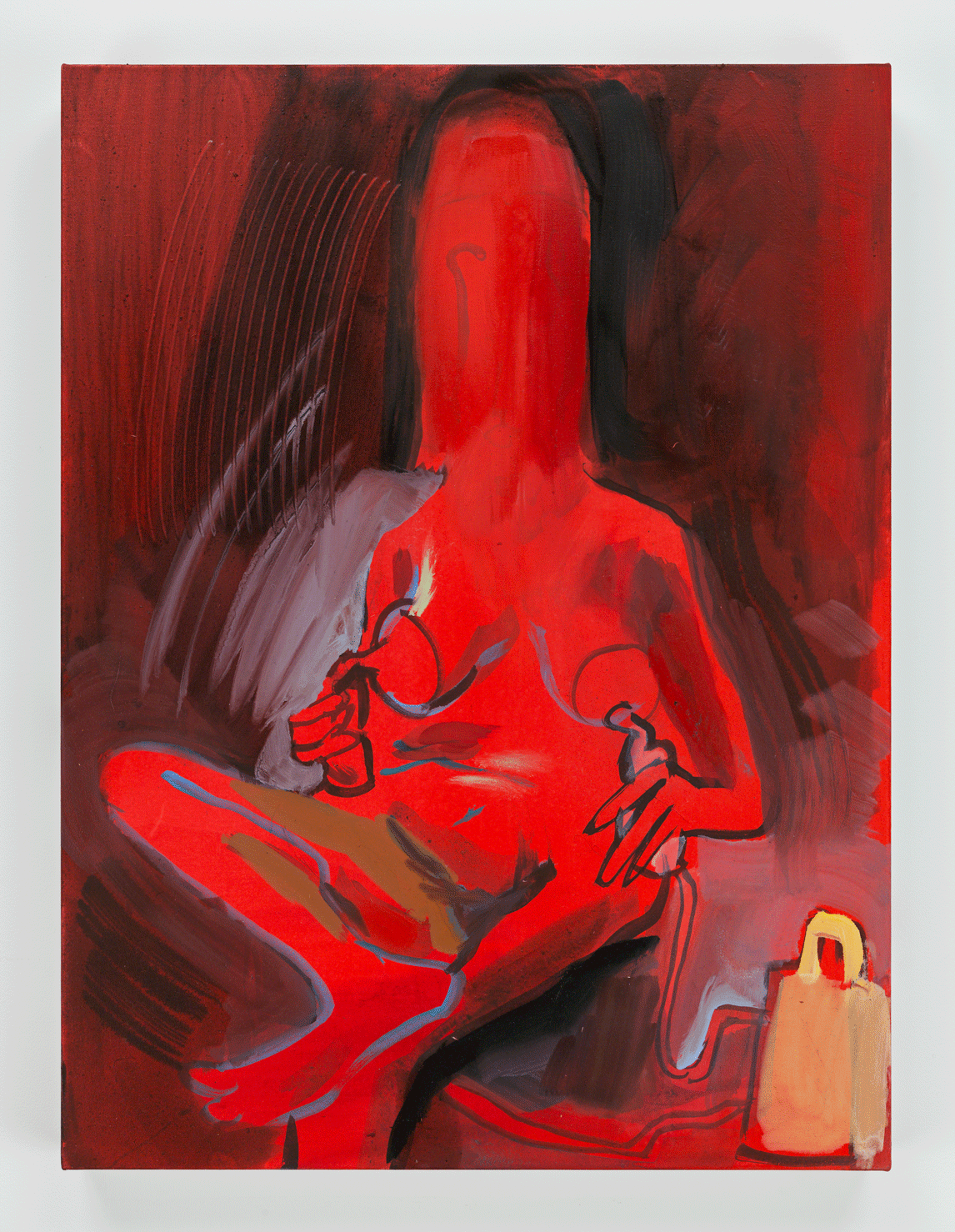
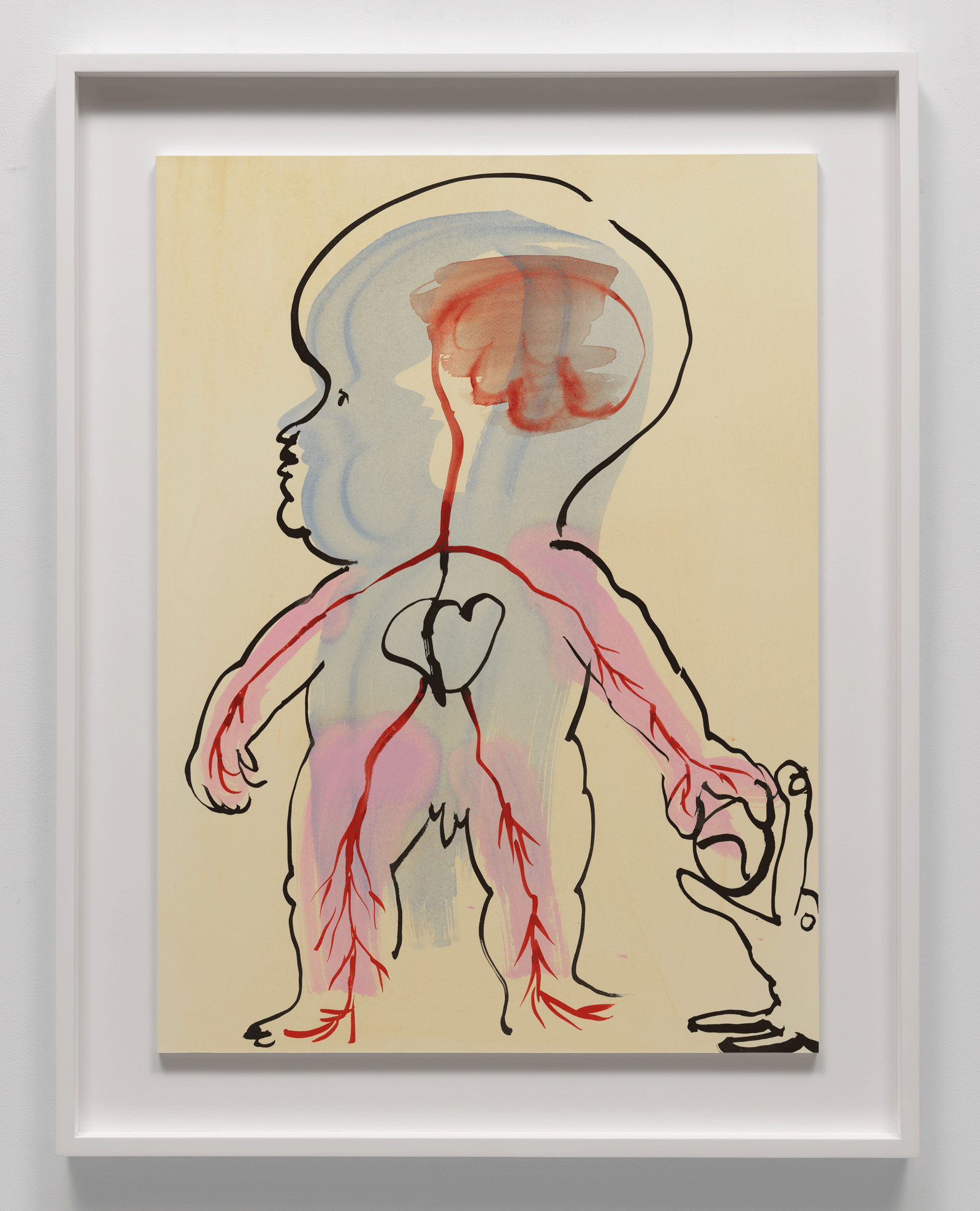

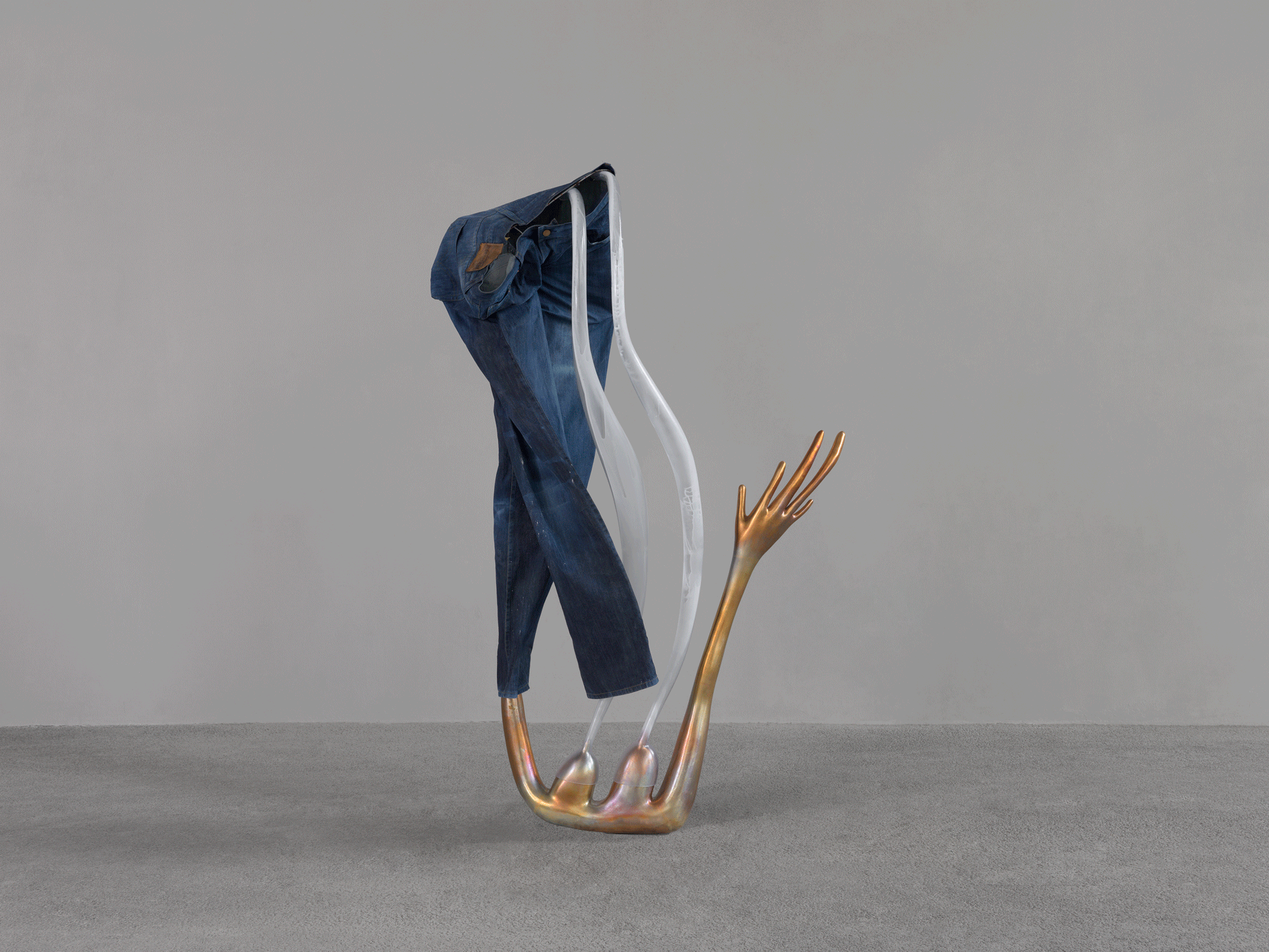
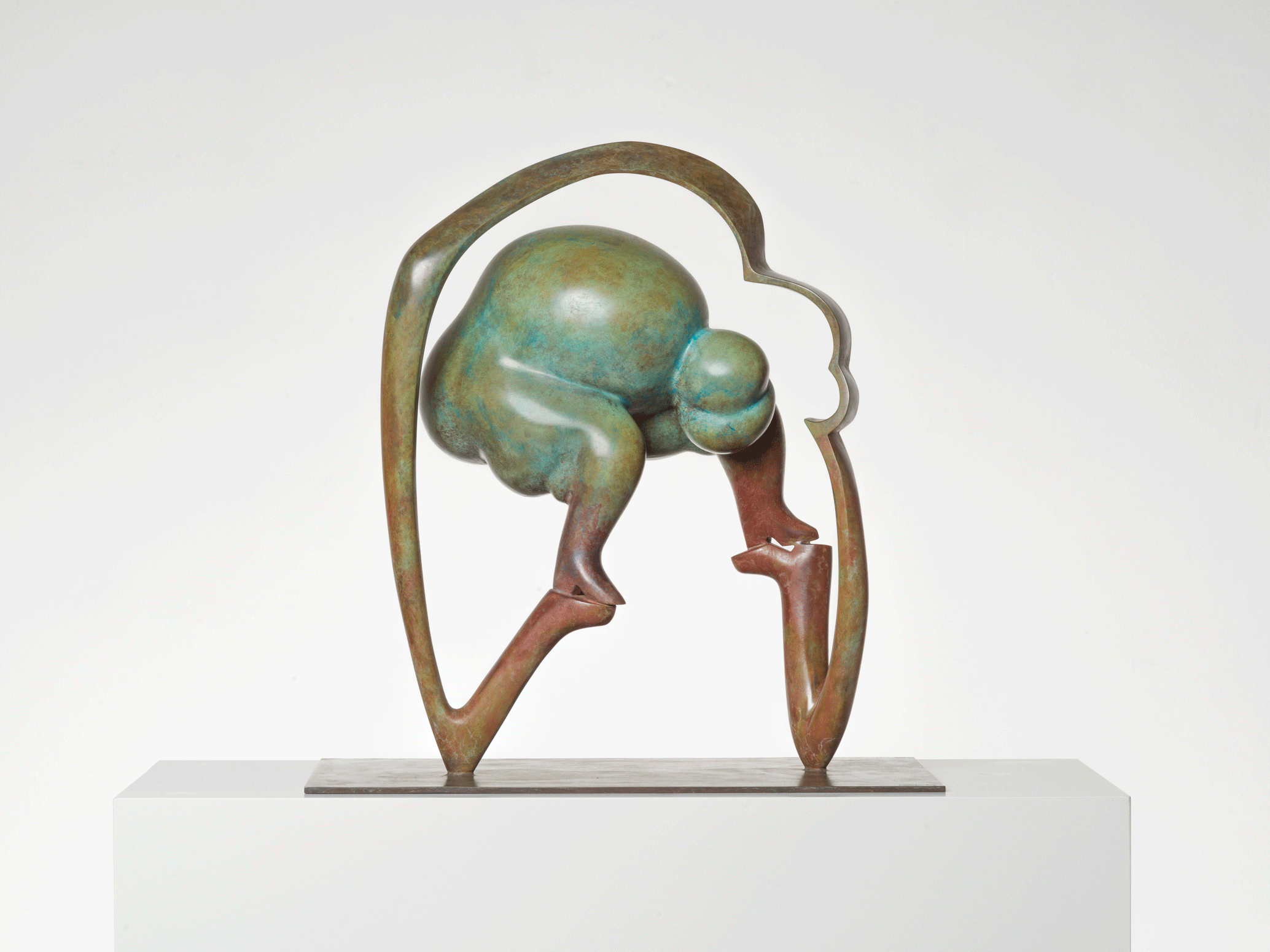










Our Voices
Camille Henrot is a celebrated multidisciplinary artist whose work spans film, painting, sculpture, and installation. Her practice explores the intersection of individuality and systemic forces, examining how caregiving, dependency, and societal norms shape human behavior. Through her exhibitions, including the critically acclaimed Bad Dad and Beyond, Henrot uses humor and subversion to challenge structures of power and attachment, offering a lens through which we can understand the entanglements of personal and collective experience.
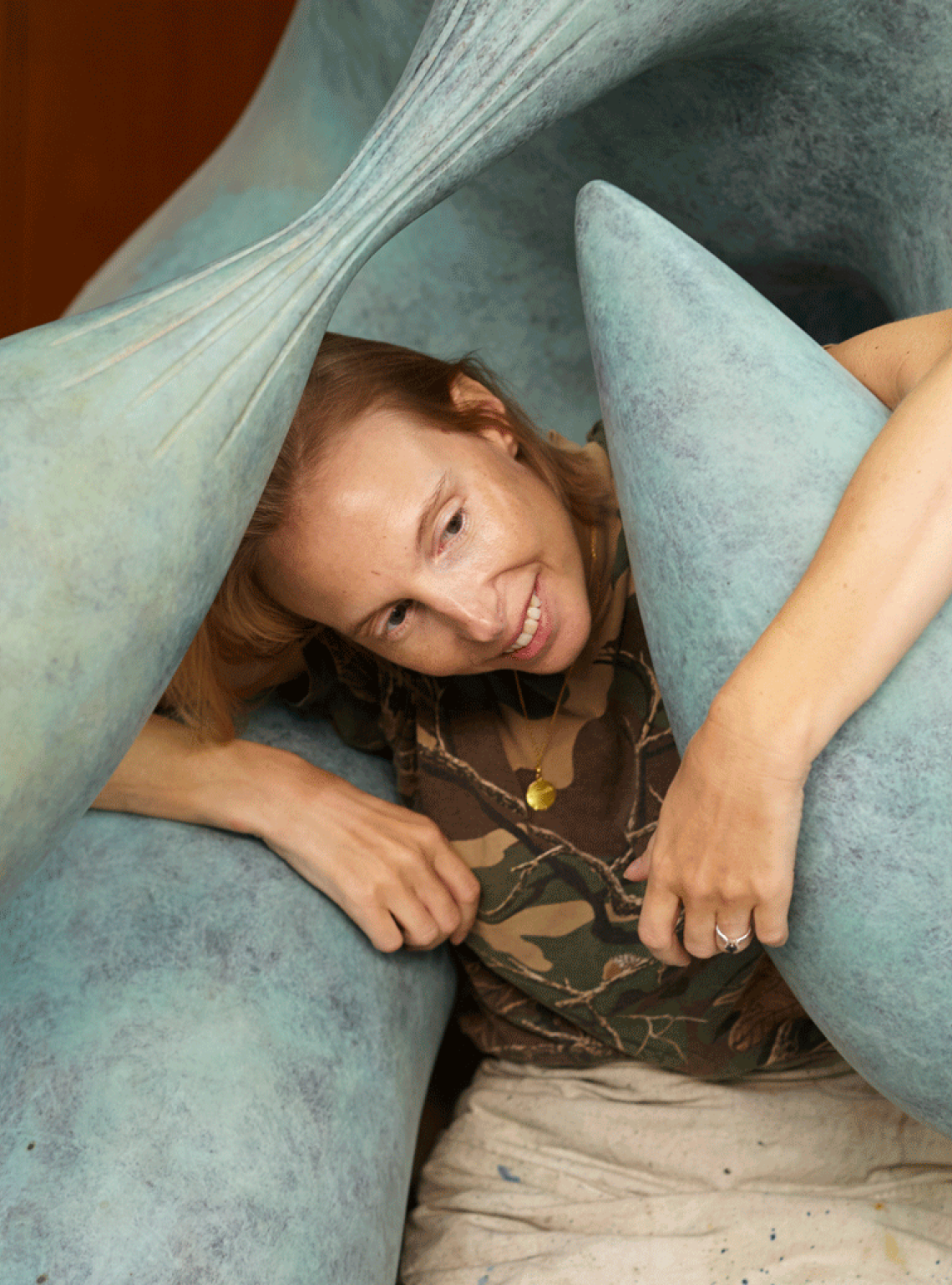
Melissa Febos is an award-winning memoirist and essayist whose work fearlessly dissects themes of attachment, power, and bodily sovereignty. Her books, including Whip Smart, Girlhood, and the forthcoming Dry Season, illuminate the dynamics of personal autonomy and societal control through deeply intimate and incisive storytelling. Drawing from her experiences as a dominatrix and her exploration of feminist theory, Febos’s writing challenges conventional narratives of power, offering a path toward deeper understanding and liberation.
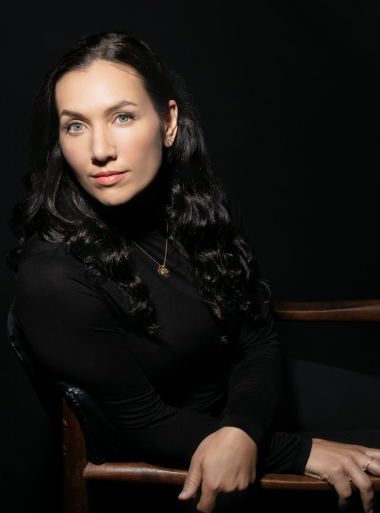
Host
